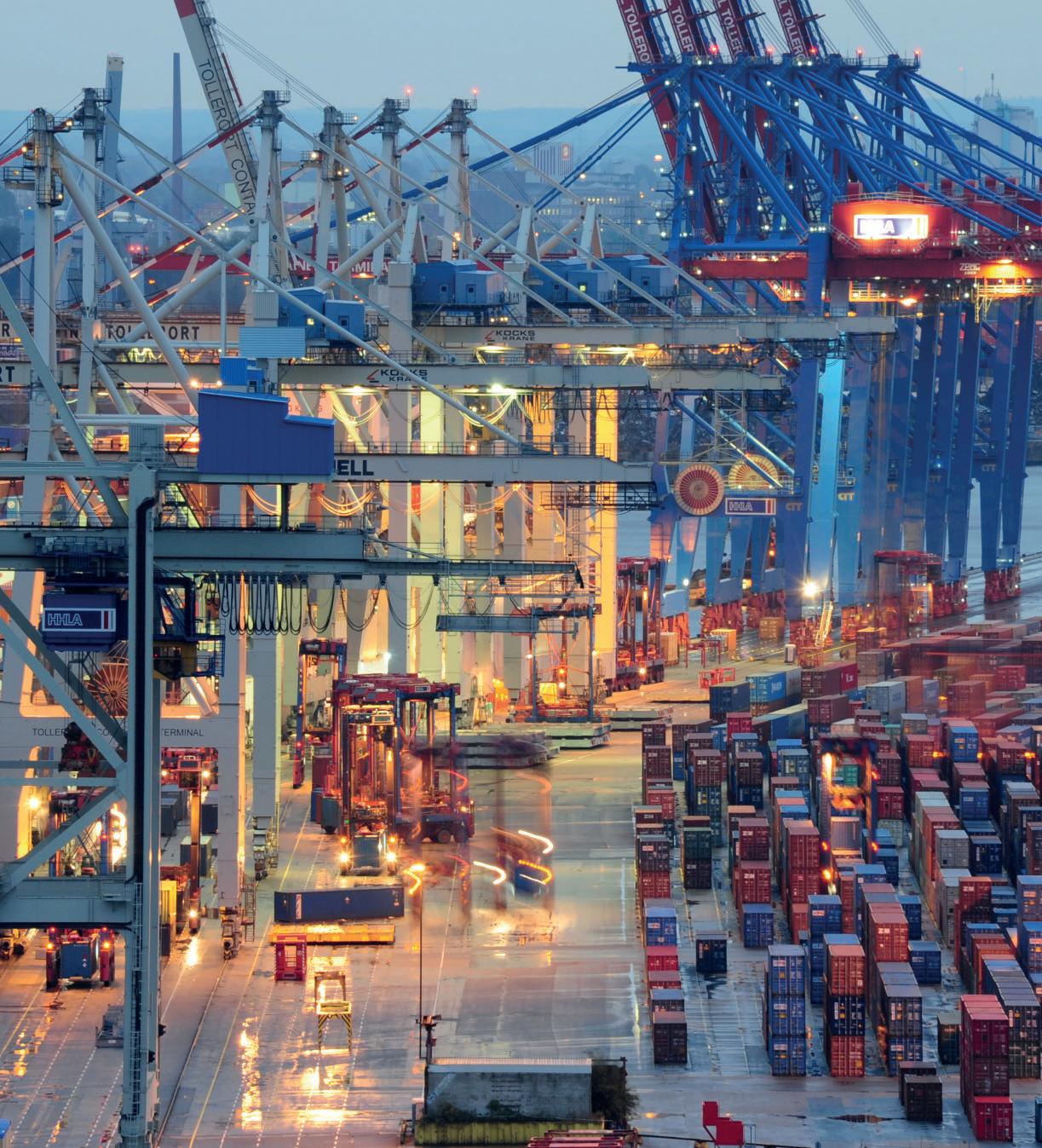
NOVEMBER 2022 VOL 1022 ISSUE 9 portstrategy.com Green Corridors | Oz: Maritime Logistics Scrutinised | Lines and Terminals: Another Twist? BELT AND ROAD – QUO VADIS? CONGESTION: Lessons Learnt WEST MED’ TRANSSHIPMENT CALLAO GEARS UP
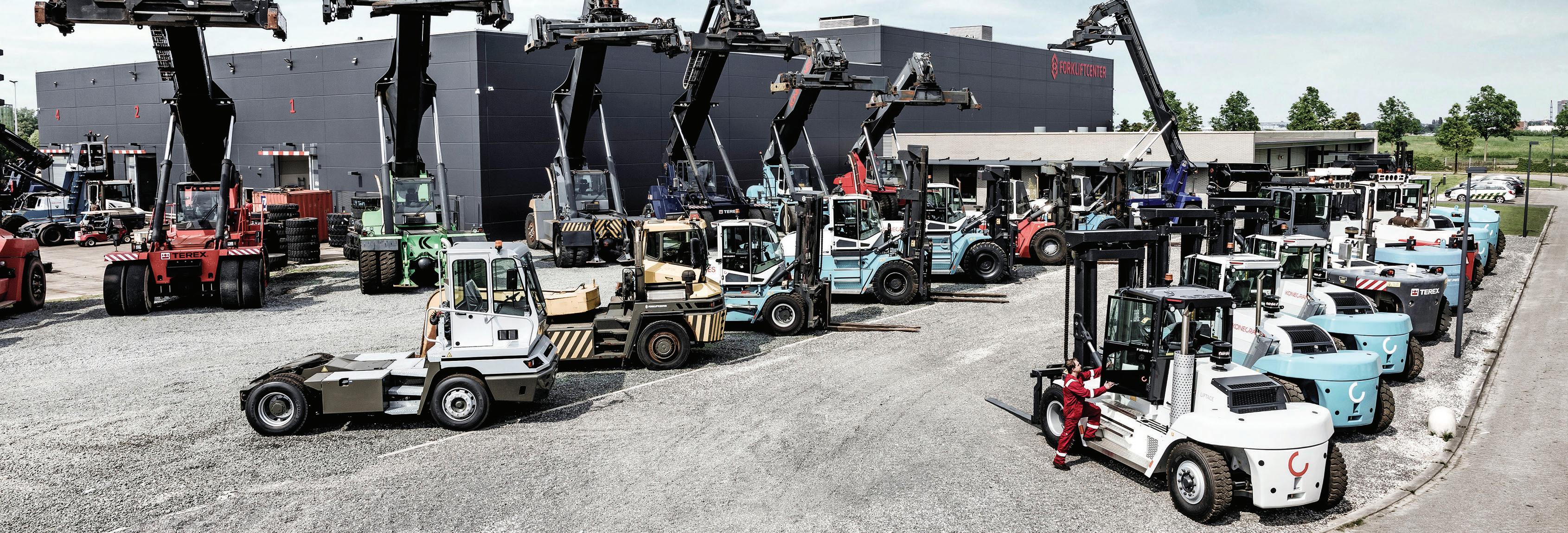
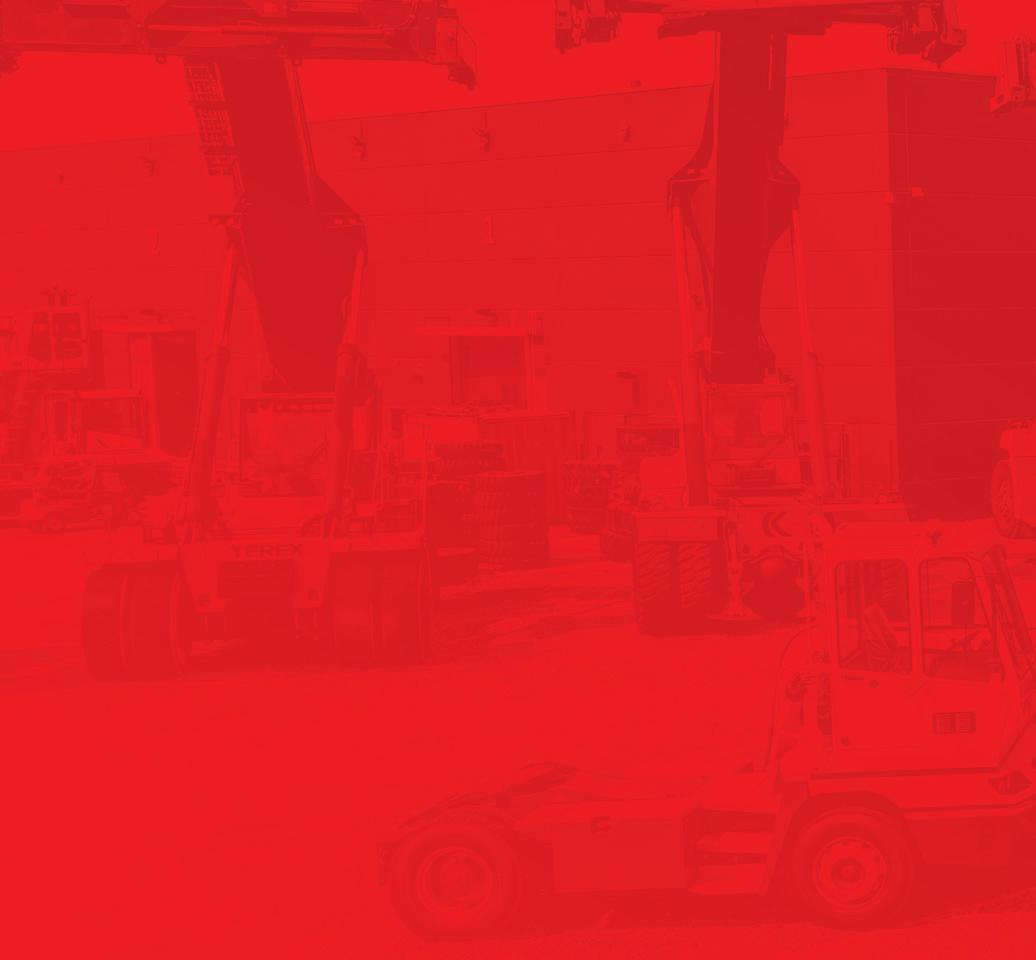

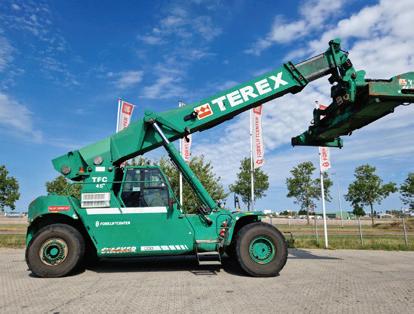
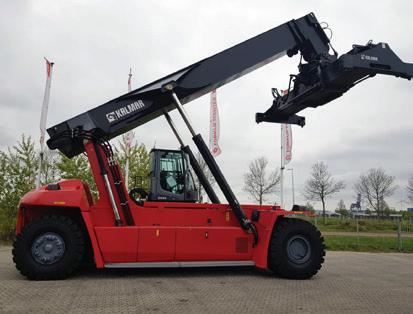
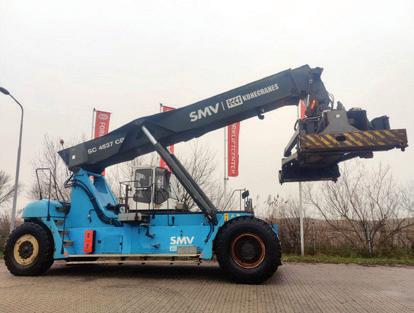
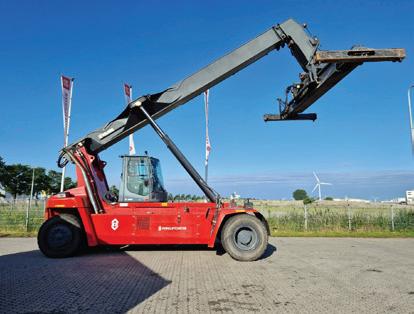
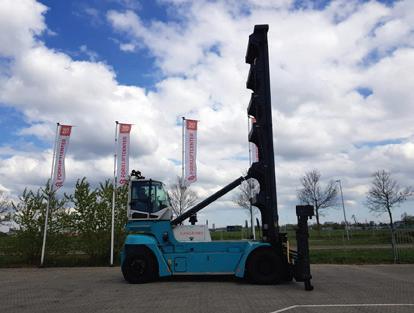
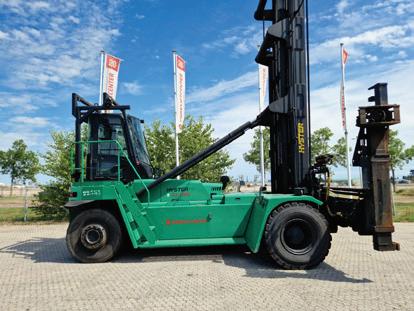



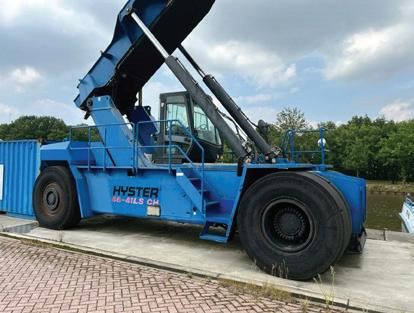
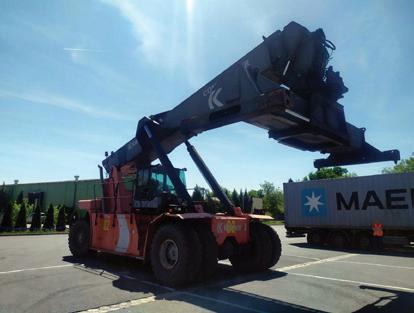
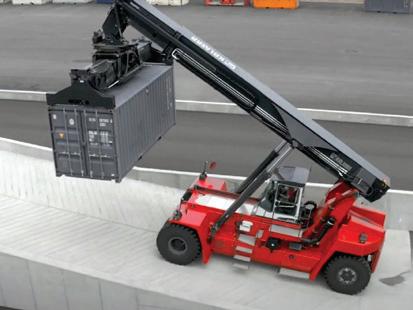
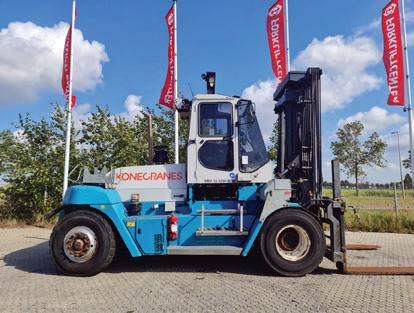
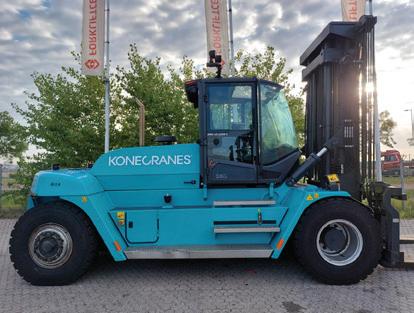
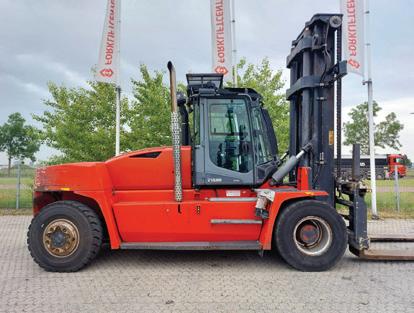
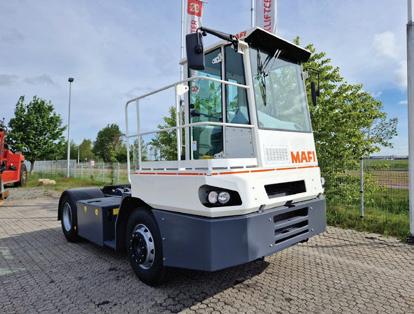
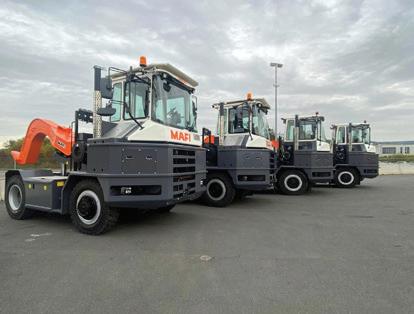
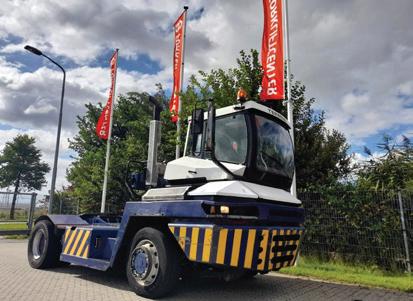
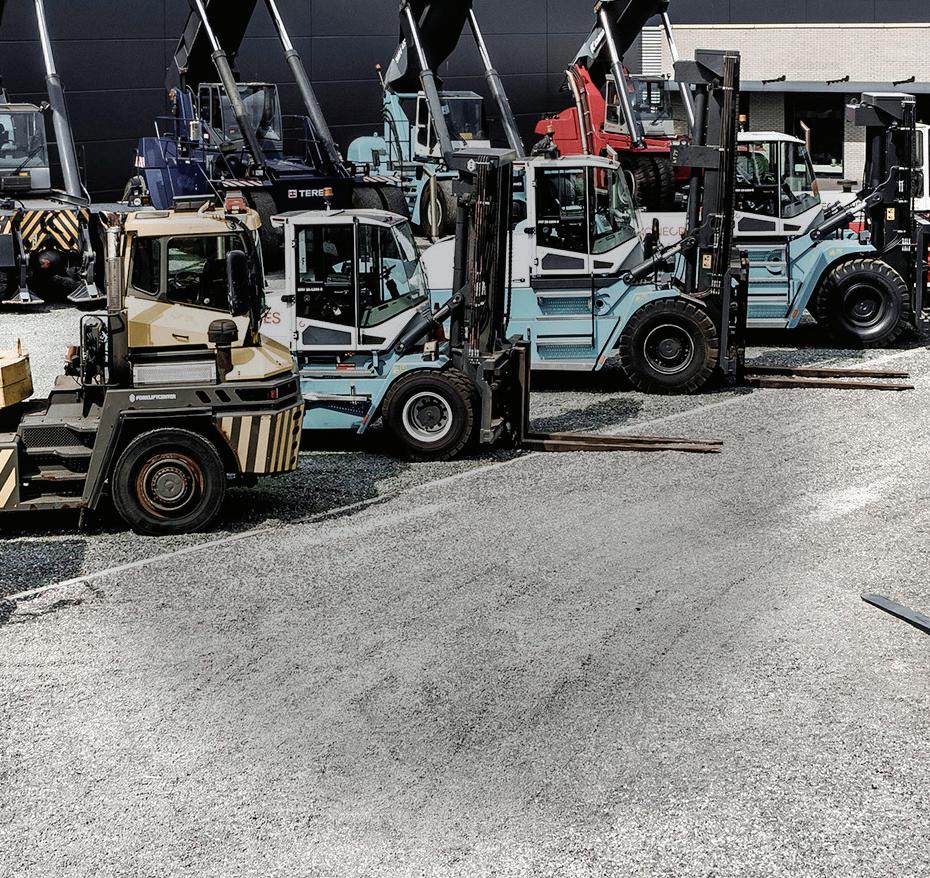


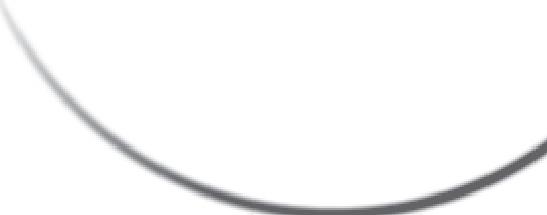

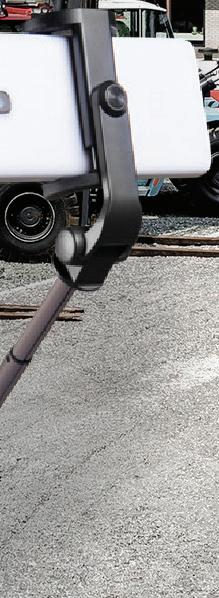

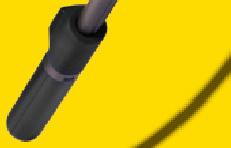
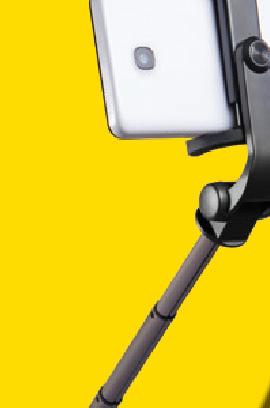

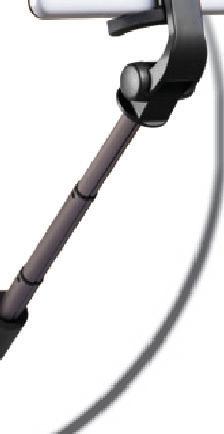

The tipping moment has arrived and we are said by many to be on the way back to normal. Signs are, however, this will be a new normal with some significant challenges but on the upside with the chance to take the best from recent experience as well as capitalise on opportunities that may result from the changed trading environment

VIEWPOINT
MIKE MUNDY
Beyond the tipping point, what next?
So, the tipping point has arrived, and a de-escalation is underway of container freight rates and of severe container congestion. Seemingly, we are on the road back to normality, if indeed anyone can remember what that was prior to the advent of COVID-19!
This is not to say its all over, done and dusted so to speak – lockdowns continue in China, industrial action is a new widespread brake on a return to a less volatile operating environment and behind these operational aspects is a world dogged by rising inflation and the prospect of economic recession plus of course the madness Vladamir Putin has unleashed on the world. There is no doubt that he will secure his place in history but almost certainly not in the way he intended – more in the hall of infamy than the hall of fame!
The big question is will there be a soft landing or a crash? The jury is still out on this but in our industry, with a few notable exceptions such as the gas sector, there are some disturbing signs. One big barometer is China and in our article on p26, which looks at China’s Belt and Road Investments (BRI) in the port sector, we detect clear signs of frailties in the Chinese economy with these, in turn, amplifying the inherent flaws of the BRI programme. The Belt and Road Initiative is slowing – indeed it seems to have metamorphosed from a tool for investment and strategic advice to a growing source of problems.
It is natural that the post-Covid era brings with it a lot of scrutiny as to what happened and what lessons can be learnt as well as some speculation about what next?
We address key takeaways that can be identified in our article Congestion: Lessons Learnt. While we recognise that there are some big policy issues that need attention and some heavy industry investments that are required, we also identify some low hanging fruit, particularly at an organisational level, that with the right treatment can realise significant ongoing benefits. Yes, positive takeaways. This thinking is also mirrored in the Strategist column which highlights IAPH’s interesting new Closing the Gaps report.
When it comes to speculation, look no further than the final page of this issue – what we call the PS Page. It tackles the interesting question of what happens next with liner investment in terminals? History has a view of this which suggests any downturn in the fortunes of lines will bring a reduction in this activity and ultimately divestment. Does this mean opportunities for independent terminal operators around the corner?
Plenty of food for thought, enjoy the read.
PORTSTRATEGY
FOR
The international magazine for senior port & terminal executives
EDITORIAL & CONTENT
Editorial Director: Mike Mundy mmundy@portstrategy.com
Features Editor: A J Keyes keyesj186@gmail.com
Consultant Editor: AndrewPenfold andypenfold@yahoo.com
Regular Correspondents:
Felicity Landon; Stevie Knight; John Bensalhia; Ben Hackett; Peter de Langen; Barry Parker; Charles Haine; AJ Keyes; Andrew Penfold; Oleksandr Gavrylyuk Johan-Paul Verschuure; Phoebe Davison
Production David Blake, Paul Dunnington production@mercatormedia.com
SALES & MARKETING
t +44 1329 825335 f +44 1329 550192
Media Sales Manager: Arrate Landera alandera@mercatormedia.com
Sales Executive: Rhys Lawton rlawton@mercatormedia.com
Marketing marketing@mercatormedia.com
Chief Executive: Andrew Webster awebster@mercatormedia.com
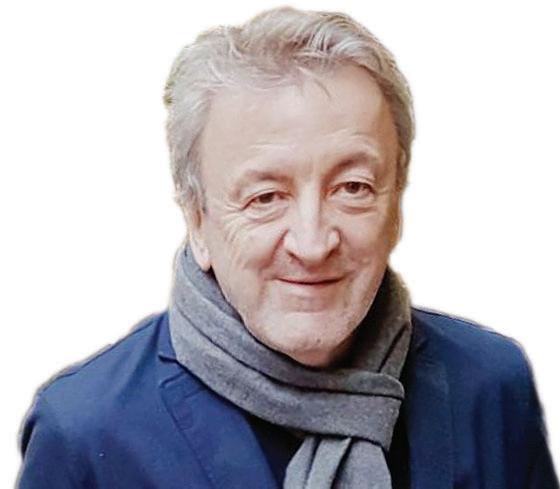
PS magazine is published monthly by Mercator Media Limited, Spinnaker House, Waterside Gardens, Fareham, Hants PO16 8SD UK t +44 1329 825335 f +44 1329 550192 info@mercatormedia.com www.mercatormedia.com
Subscriptions
subscriptions@portstrategy.com or subscribe online at www.portstrategy.com
Also, sign up to the weekly PS E-Newsletter.
1 year’s magazine subscription
Digital Edition: £GBP189.00
©Mercator Media Limited 2022. ISSN 2633-4232 (online). Port Strategy is a trade mark of Mercator Media Ltd. All rights reserved. No part of this magazine can be reproduced without the written consent of Mercator Media Ltd. Registered in England Company Number 2427909. Registered office: c/o Spinnaker House, Waterside Gardens, Fareham, Hampshire, PO16 8SD, UK.
For the latest news and analysis go to www.portstrategy.com NOVEMBER 2022 | 3
INSIGHT
PORT EXECUTIVES
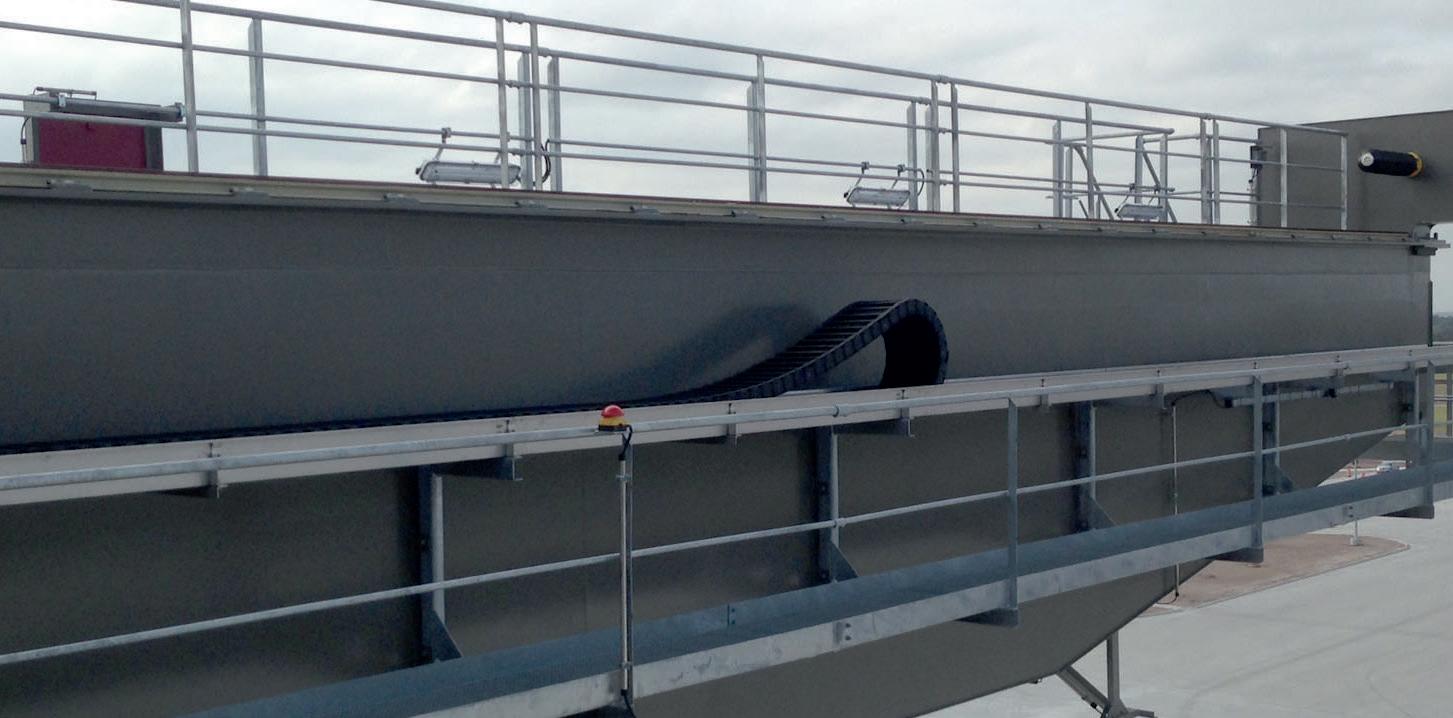
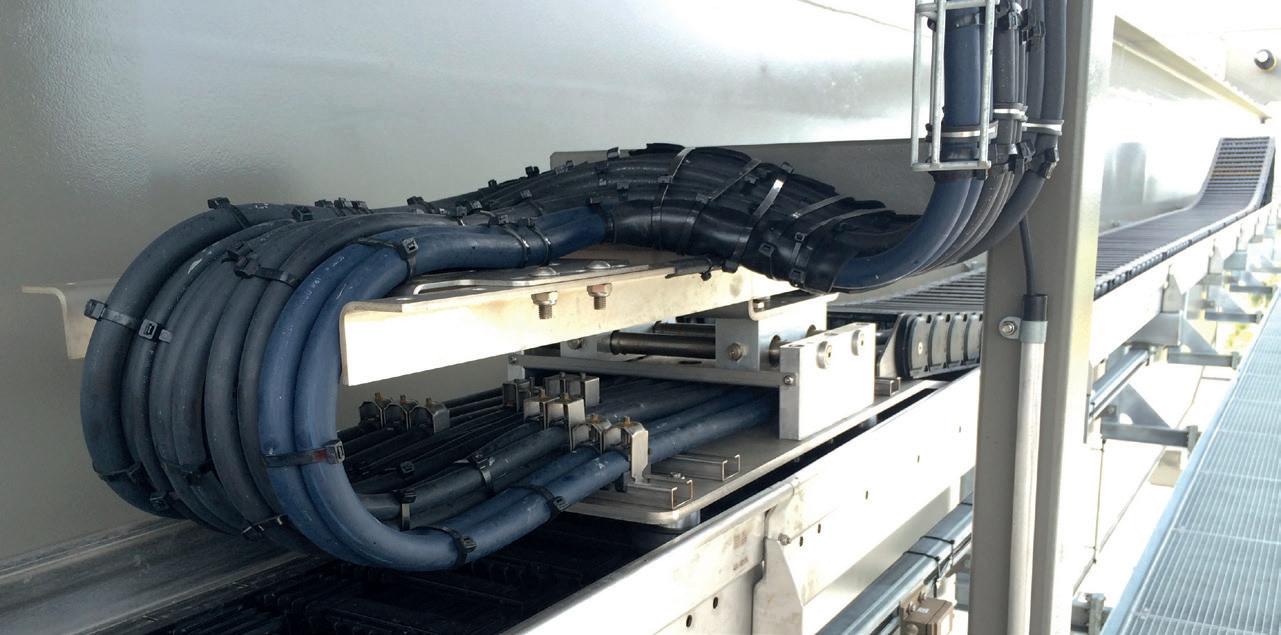
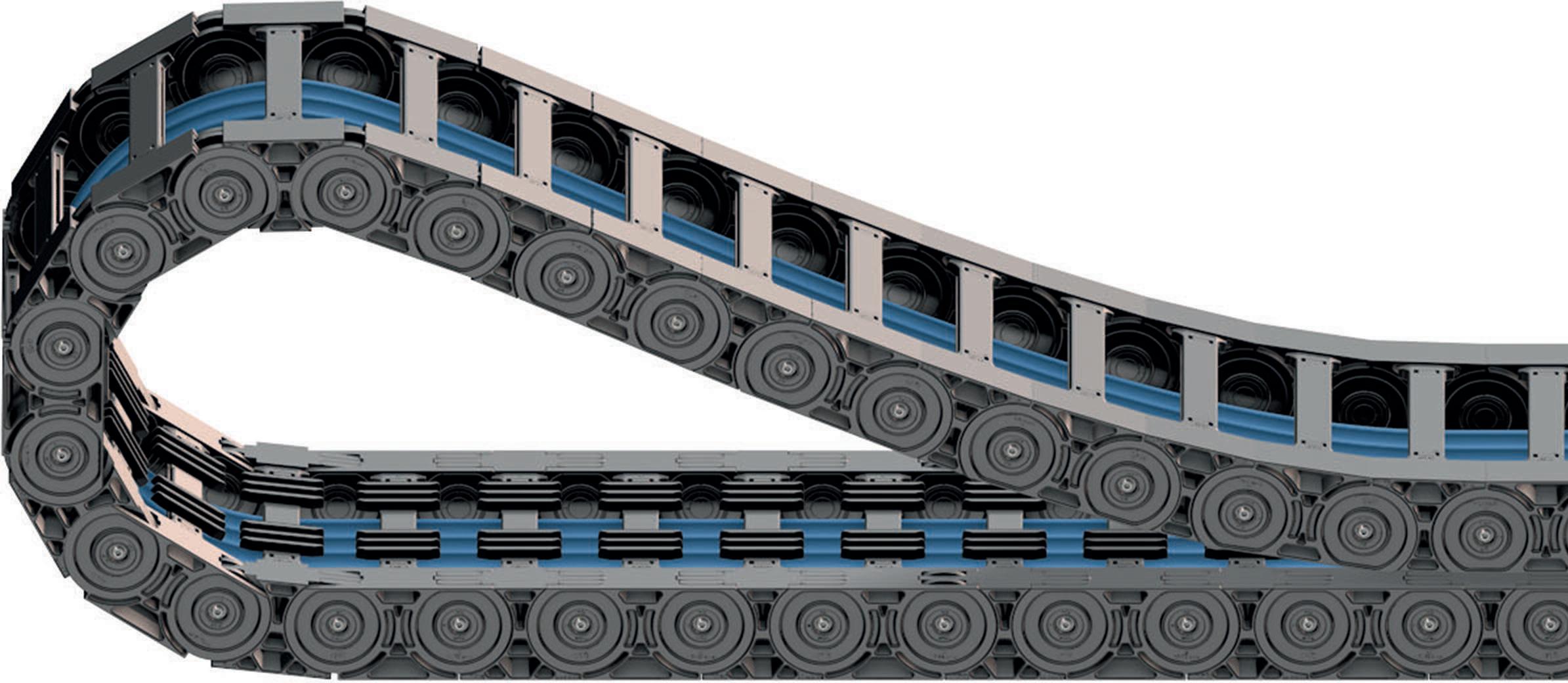
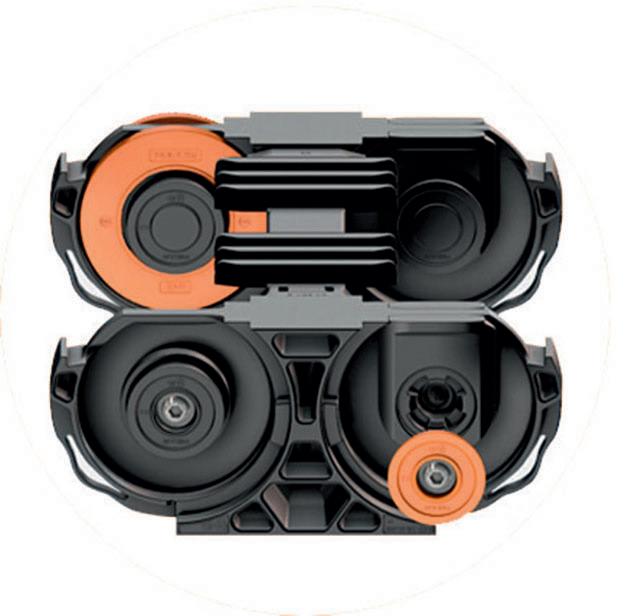


Maximum service life with optimised design Heavy duty rol e-chain® P4HD.56R for the next generations of container cranes 50% longer service life compared to proven P4.1 series Low maintenance due to lubrication-free tribo-polymer plain bearings Optimised design of rolling elements, side bands and joining links Secure guidance thanks to comb-like autoglide crossbars Optional: Integration of smart sensors for condition monitoring and predictive maintenance ... prepared for longer travels, higher speeds, short stress cycles and Industry 4.0 The terms "igus, e-chain, motion plastics" are legally protected trademarks in the Federal Republic of Germany and, where applicable, in some foreign countries. igus® GmbH Tel. +49-2203-9649-800 info@igus.eu motion plastics® /cranes
On the cover
The Port of Hamburg is one of many ports worldwide that have been challenged by Covid-19 and the resulting disruption to supply chains. It has faced severe congestion but like many of its peers it is able to take some positives away from this hardearnt experience
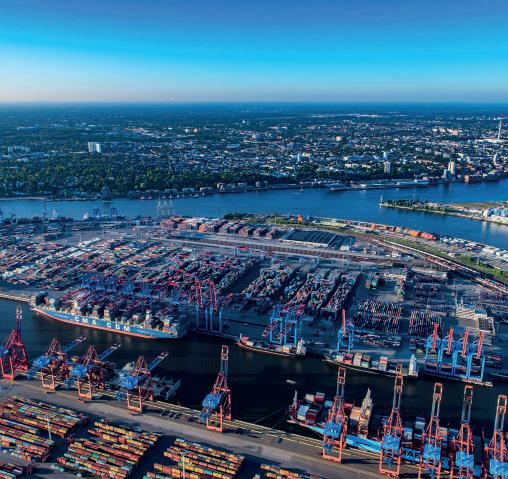
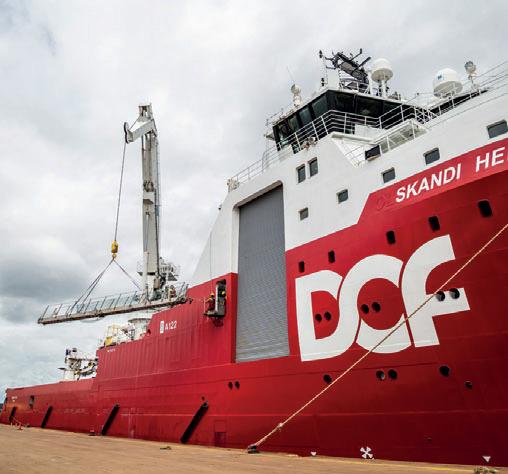
magazine is a business
resource on how best to






the environmental and CSR demands in marine ports and terminals. Sign up at greenport.com

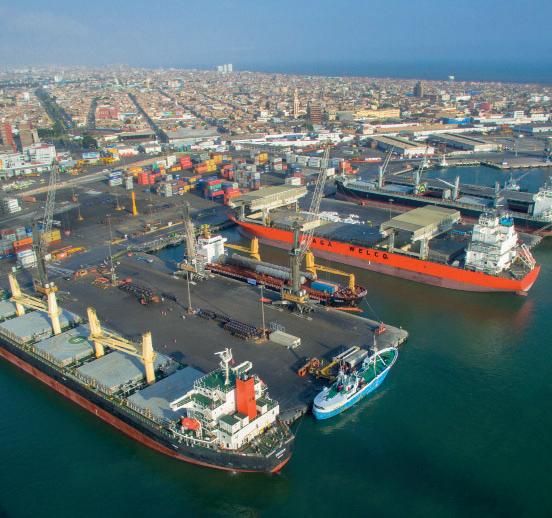

require to
and
in touch at greenport.com
For the latest news and analysis go to www.portstrategy.com NOVEMBER 2022 | 5 Weekly E-News Sign up for FREEat: www.portstrategy.com/enews CONTENTS NOVEMBER 2022 is a proud support of Greenport and GreenPort Congress GreenPort
information
meet
The Congress is a meeting point that provides senior executives with the solutions they
meet regulatory
operational environmental challenges. Stay
Online portstrategy.com 5 Latest news 5 Comment & analysis 5 Industry database 5 Events Social Media links LinkedIn PortStrategy portstrategy YouTube
NEWS FEATURE ARTICLES REGULARS 21 The Environmentalist Thumbs up to Green Corridors 22 The New Yorker Measure and manage 22 The Analyst Port ecosystem development 23 The Economist Zombie politics chaos 23 The Strategist IAPH: Closing the Gaps 24 Congestion Lessons Simple fixes 26 Belt & RoadQuo Vadis? Belt and Road Realities 28 Oz: Logistics Scrutinised Port productivity goals 30 Signs of an Uplift Short Sea prospects 32 Pillars of Hercules Liner transshipment strategies 36 Mix & Match Strategy Algeciras and Tanger-Med’s roles 39 Callao Gears Up Expansion underway and planned 43 Smart Ports Doctrine Latest initiatives and news 47 Spreader Refinement Market and technical trends 54 Postscript Change in liner investment and new opportunities emerging? NOVEMBER 2022 VOL 1022 ISSUE 9 portstrategy.com Green Corridors Oz: Maritime Logistics Scrutinised Lines and Terminals: Another Twist? BELT AND ROAD – QUO VADIS? CONGESTION: Lessons Learnt WEST MED’ TRANSSHIPMENT CALLAO GEARS UP 16 Two Green, One Red Diering port expansion plans 16 SAAM Bought Hapag Lloyd Americas expansion 19 Adani Progress… …but challenges persist 19 Jeddah Target Receiving the big ships 11 Mega Shanghai Terminal… …and Nansha new berth 11 Deeper Paranagua Facilitating more grain exports 13 New CMA CGM Initiatives Optimizing India operations 15 AI Enhances Simulation Training & development 15 Robotic Folding Pins HHLA research project 17 Valencia Solar Initiative Taking up the solar option 19 Mobile Power Solution Option for small ports
BRIEFS
More Private Brazil
More port privatisations are expected in Brazil. Earlier this year the Brazilian government held an auction for the concession of Espírito Santo state port authority Codesa as well as made a commitment to offer a 35-year deal for the country’s biggest port, Santos, in São Paulo state, by the end of 2022. Now, both Rio de Janeiro’s port authority Companhia Docas do Rio de Janeiro (CDRJ) and Pará state port authority Companhia Docas do Pará (CDP) are also being made available.
PD Ports Sale?
Unsubstantiated press reports in the UK have suggested that Australian investment company Macquarie is considering a £1 billion ($1.13 billion) bid to acquire PD Ports. This news follows the current owner of the UK asset, Canadian private equity firm Brookfi eld, cancelling a previous sale process in November 2021 over possible concerns from South Tees Development Corporation (STDC), the owner of land surrounding Teesport.
CTA Hydrogen Hub
The desire of the climate neutral HHLA Container Terminal Altenwerder in the port of Hamburg to become a hydrogen hub has moved a step closer to fruition following the arrival of a first test delivery of hydrogen and its derivatives. In March 2022, HHLA signed an agreement with Abu Dhabi National Oil Company (ADNOC) to test the transport chain for hydrogen from the UAE to Germany, following the launch in 2020 of the HHLA Hydrogen Network. HHLA is one of a number of North European port operators pursing the objective of establishing a hydrogen hub.
TWO GREEN LIGHTS, ONE RED LIGHT
Two new largescale container terminal projects have been announced at key North European ports, but APM Terminals has decided against expanding one of its regional facilities.
Antwerp: The Port of AntwerpBruges and PSA Antwerp has confirmed the renewal of the quayside and terminal at the Europa Terminal in a project that will consist of three phases across nine years
Cameron Thorpe, CEO of PSA Belgium, explains: “At PSA Belgium, we are delighted that construction works on the quayside are underway. This will allow us to start the transformation process of Europa Terminal with a highly sustainable investment while increasing capacity by more than
700,000TEU annually.”
The €335 million (US$328 million) investment will enable this terminal to receive the latest generation container vessels, with water depth at the 1200m berthing line being deepened from 13.5m to 16m.
London Gateway: DP World UK has confirmed that construction work on the fourth berth at its London Gateway terminal has commenced.
The £350 million (US$385 million) investment is expected to increase capacity by over 30 per cent, while also making the operation fully electric when completed in approximately five years’ time.
This project is part of planned spending of around £1 billion (US$1.1 billion) in the UK by DP World.
APMT Maasvlakte: However, the position is different in Rotterdam, where reports continue to circulate that APM Terminals (APMT) has decided not to pursue its Maasvlakte II expansion project, as the decision to confirm the project was originally due in June 2022.
APMT has been operating the facility since 2015 and in 2021 it contracted Ballast Nedam, Hochtief and Van Oord to undertake the construction that will double capacity from 2.7 million TEU to 5.4 million TEU by 2026. The project also planned to create additional berthing space for Ultra Large Container Vessels (ULCVs).
However, rising construction costs, especially for steel, looks like the project will be cancelled, potentially resulting in a squeeze on available capacity at the port according to informed sources.
HAPAG LLOYD ACQUIRES SAAM TERMINALS
In a surprise move, Hapag Lloyd, the Germany-based shipping line, has announced the acquisition of the terminal business of SM SAAM S.A.
This portfolio represents one of the few remaining independent terminal groups and will see Hapag Lloyd AG take a 100 per cent shareholding in 10 facilities across six different countries throughout the Americas, thereby offering the German shipping line a stronger presence in the region.
In an announcement from both contracting parties, it has been disclosed that Hapag Lloyd is acquiring full shares of SAAM Ports S.A. and SAAM Logistics S.A. for a price of approximately US$1 billion. Real estate assets connected to the logistics business are included but SM SAAM’s tugboat services and airport logistics services businesses are not part of the transaction.
Chilean-based SM SAAM was founded in 1960 and had been listed on the Santiago Stock Exchange (SSE) since 2012, when the terminal and logistics business was spun-off from Chilean shipping operator,
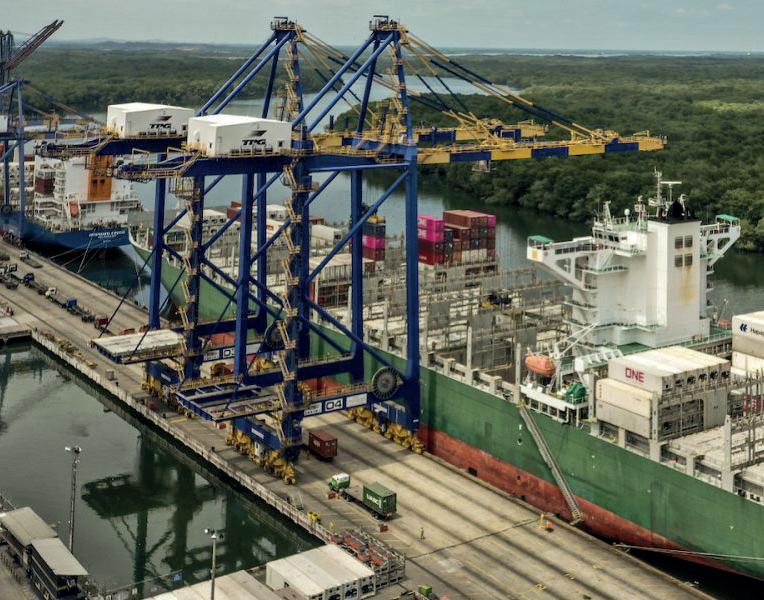
Compania Sud Americana de Vapores (CSAV), as part of its economic recovery strategy.
The terminal business being acquired by Hapag Lloyd comprises a mix of terminals, with notable container and cargohandling operations in Latin America at San Antonio, San Vicente, Iquique, and Guayaquil. Additional facilities are also in Caldara (Costa Rico) Mazatlan (Mexico) and Port Everglades (FL).
SM SAAM confirmed it had around 4000 current employees.
In 2021 the portfolio handled an estimated 3.3 million TEU, with a total capacity of 5.6 million TEU per annum available.
SM SAAM is controlled by major Chilean conglomerate Quiñenco (part of the Luksic Group) with a 52.2 per cent ownership stake. It is also a major shareholder in CSAV.
the latest news and analysis go to www.portstrategy.com
PORT & TERMINAL NEWS
6 | NOVEMBER 2022For
8 Hapag Lloyd has boosted its terminal and logistics coverage in the Americas with the US$1 billion acquisition of Chilean-based SM SAAM group businesses
Carry your terminal towards a more eco-efficient FUTURE
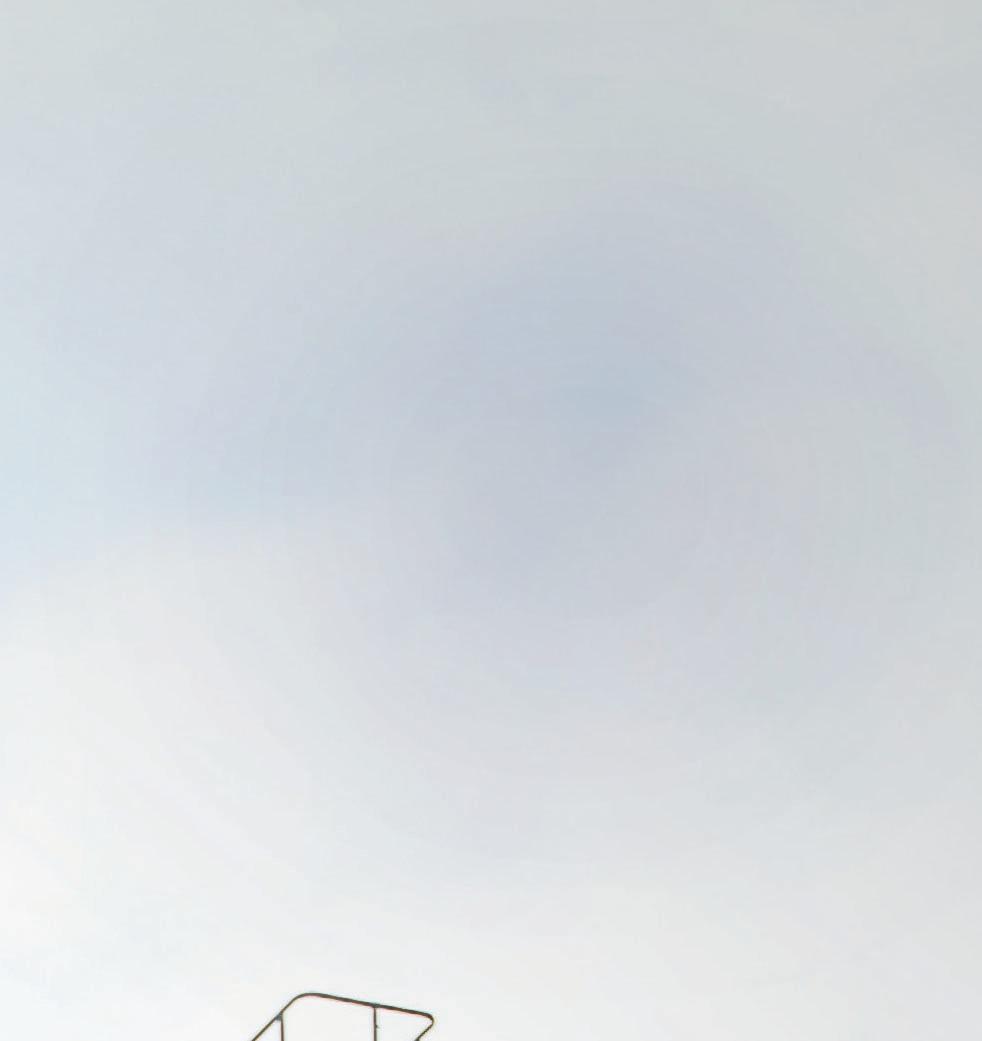

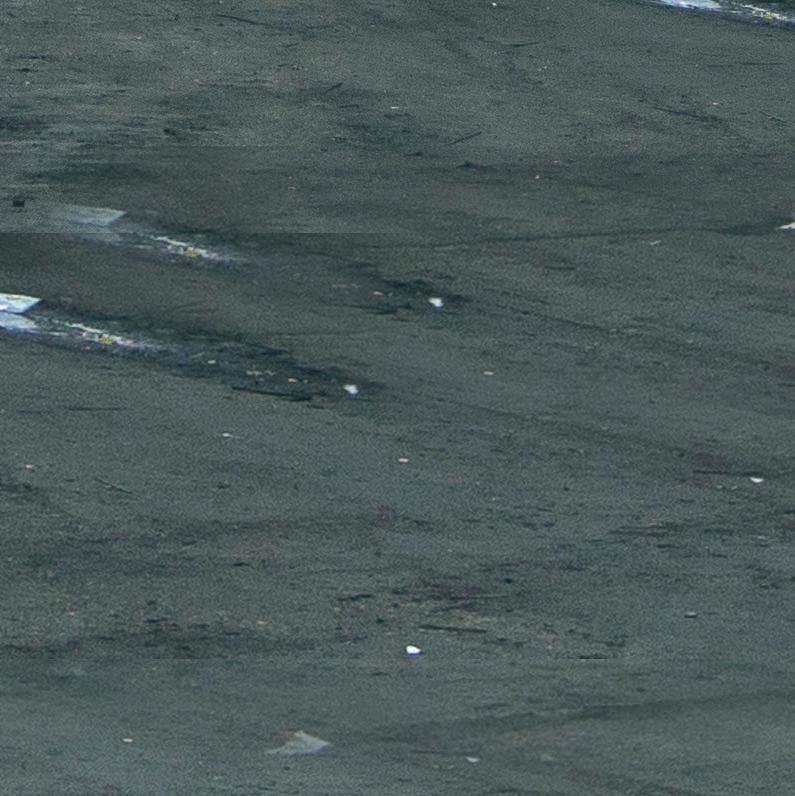
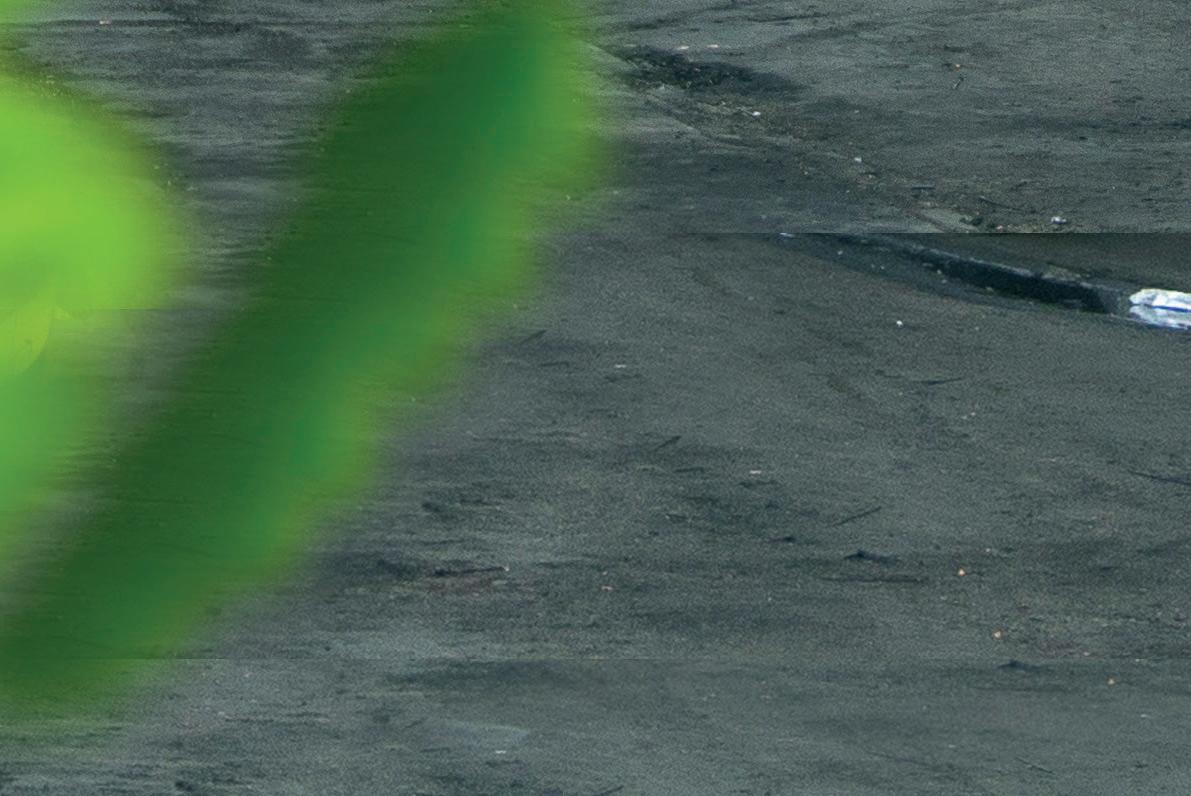
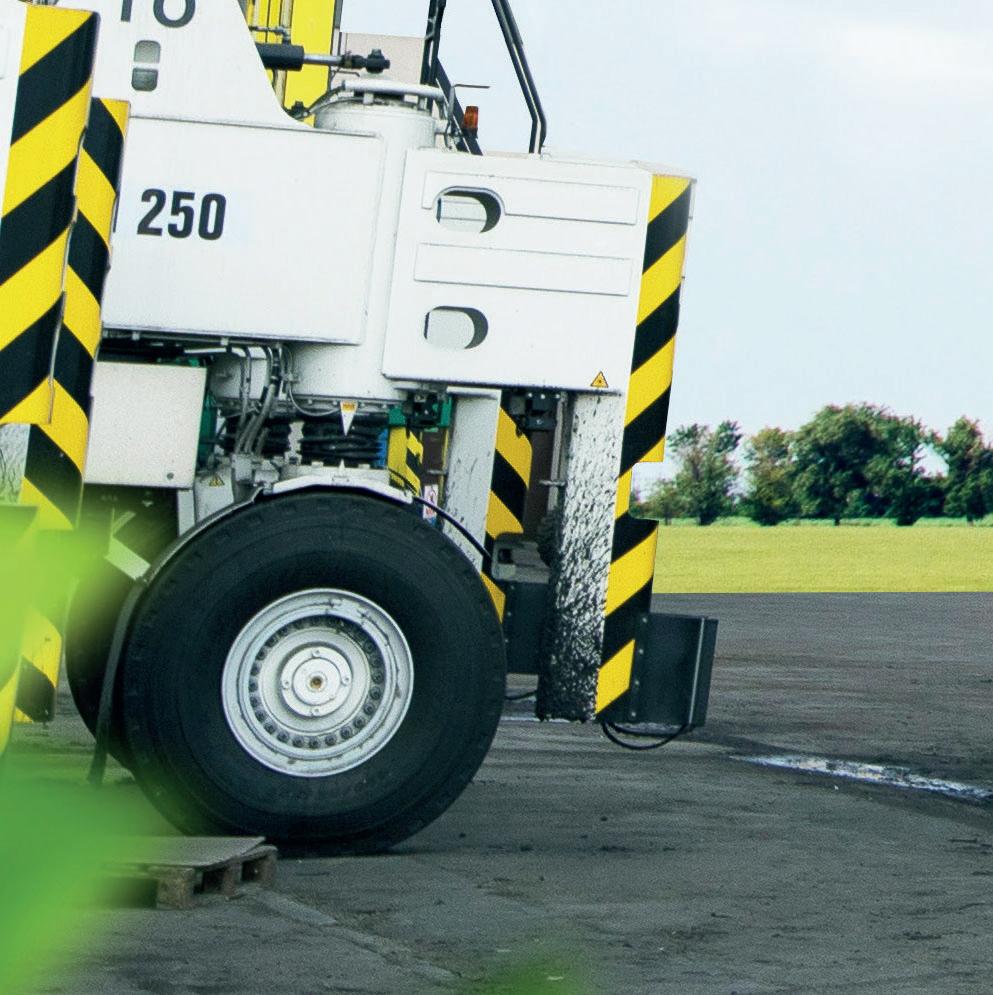
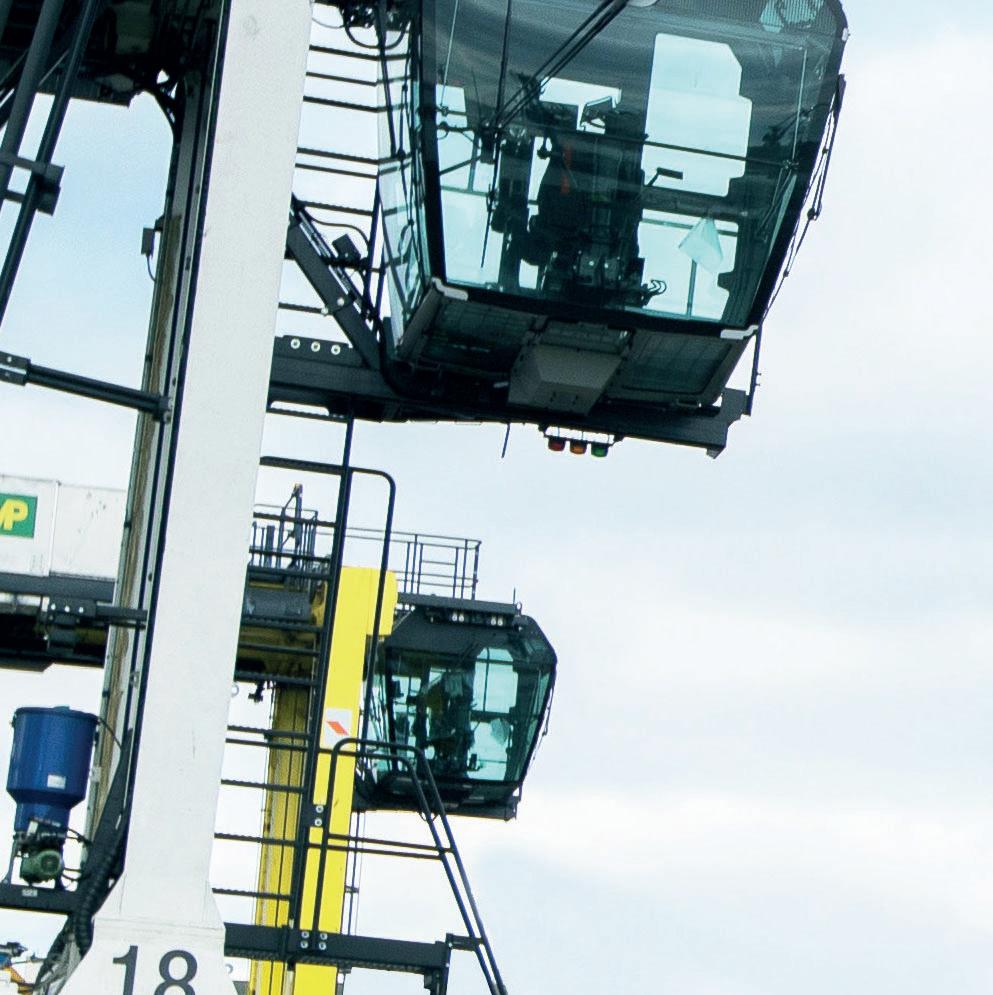
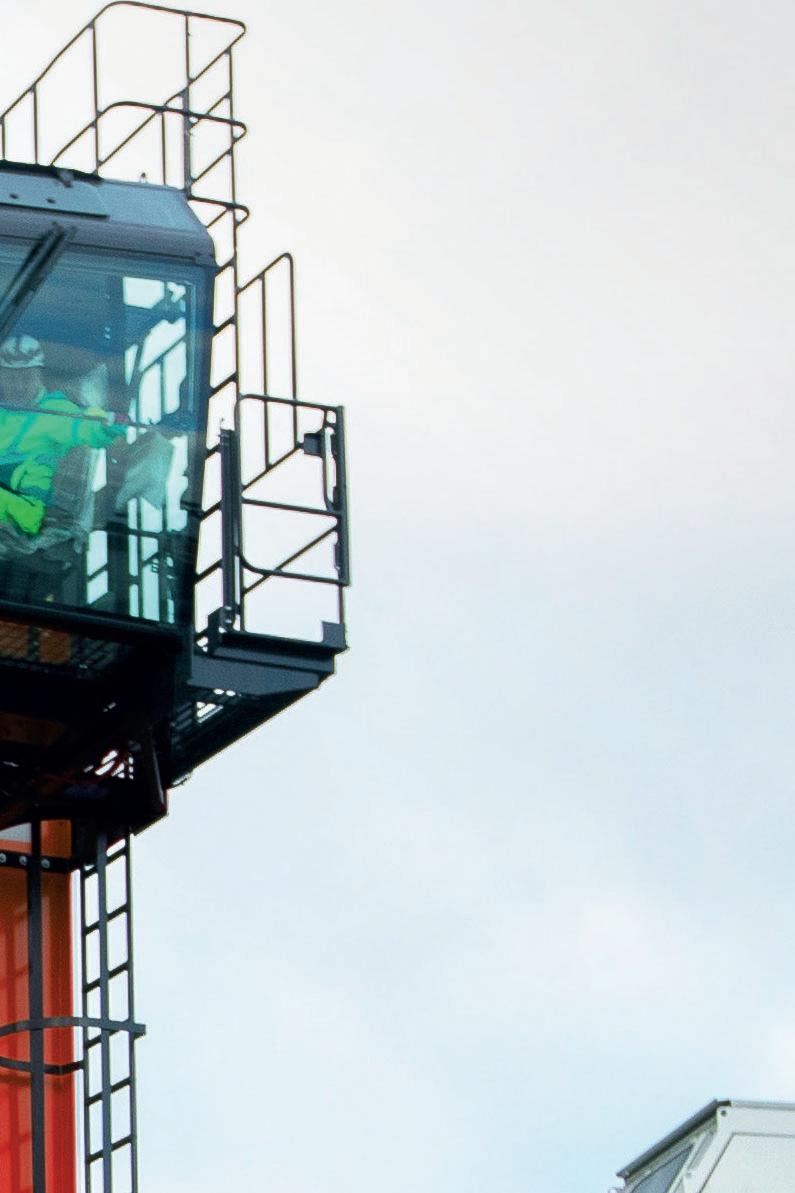
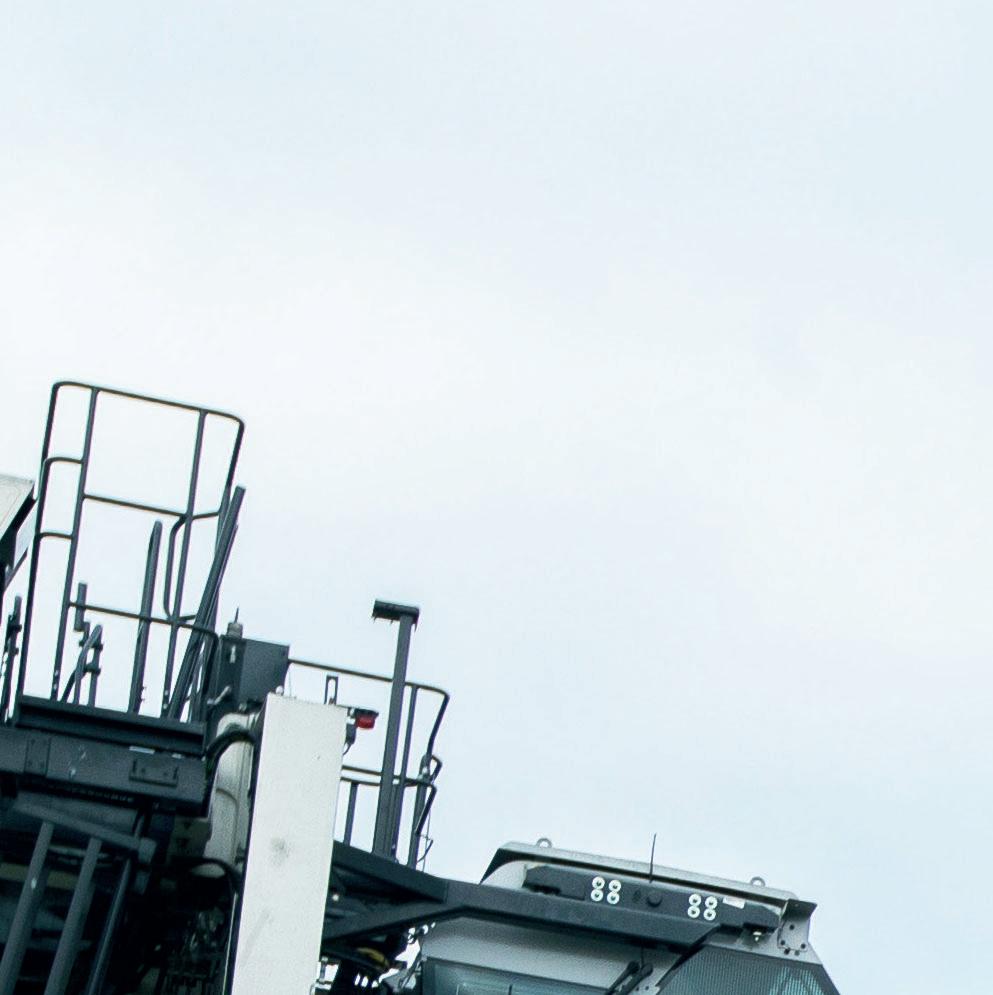
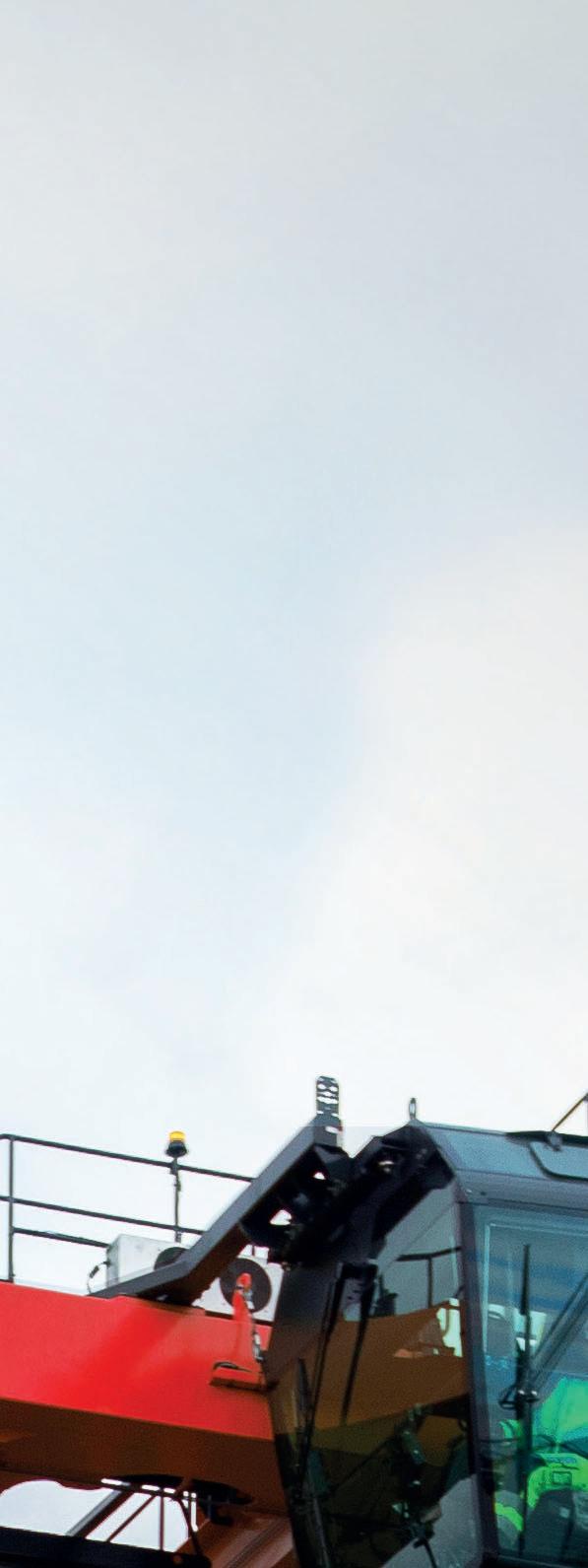


Kalmar Hybrid Straddle Carriers can cut your fuel consumption and emissions by up to 40% as they use an eco-efficient regenerative energy system. This system captures the energy produced through deceleration and spreader lowering and stores the energy in Li-ion batteries, which work in tandem with an efficient and compact diesel unit to power your crane. Kalmar Hybrid Straddle Carriers are eco-efficient and ready for an automated future. Kalmar, making your every move count.
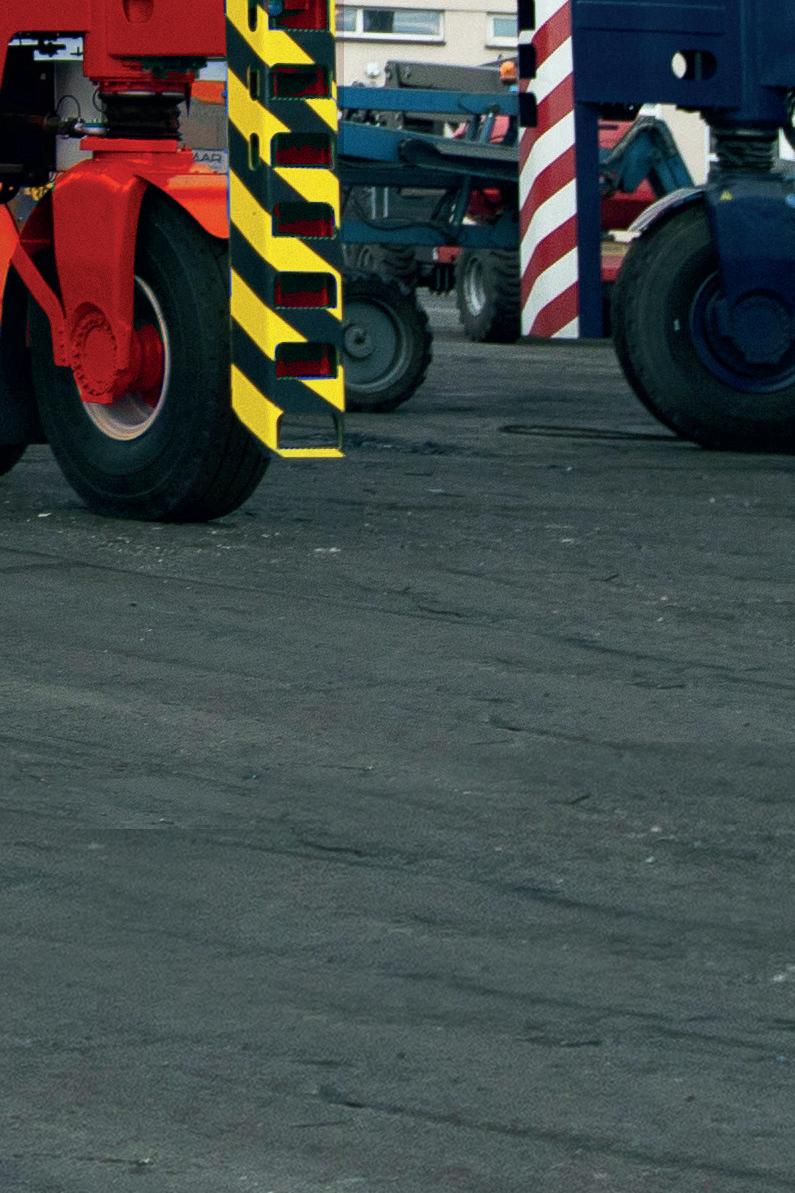
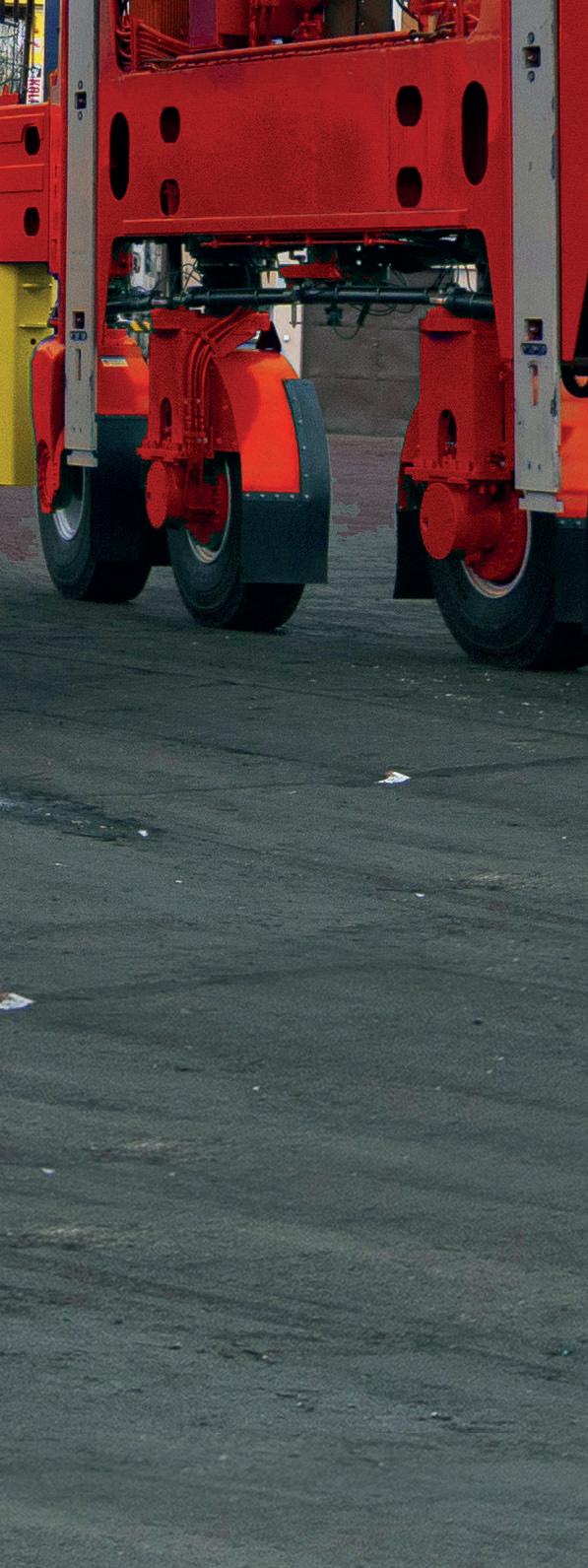

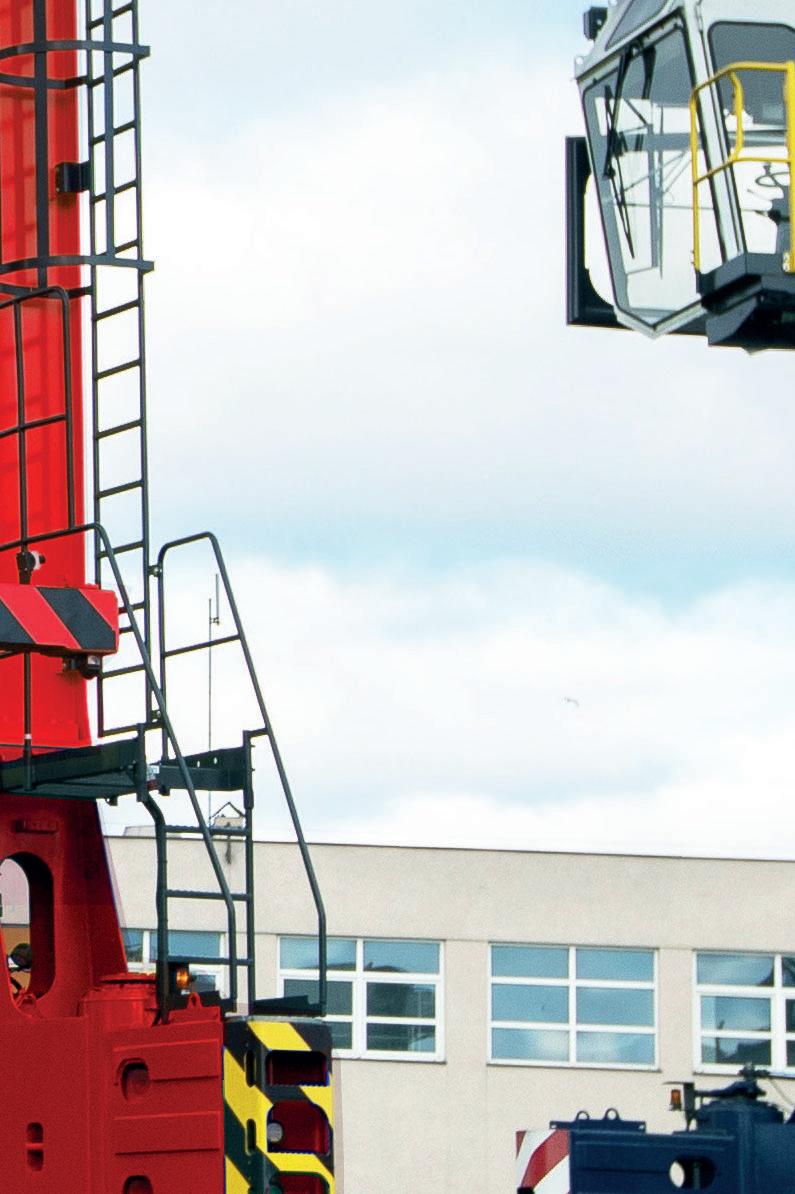
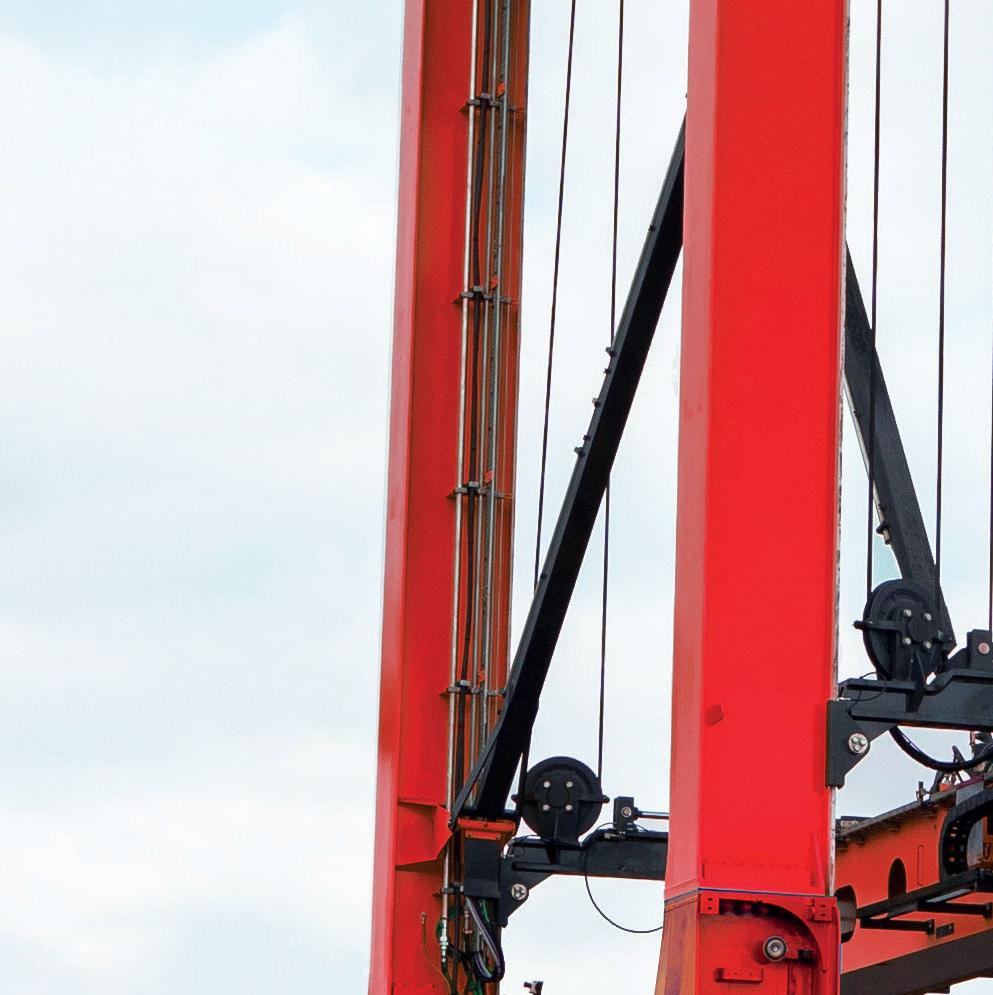
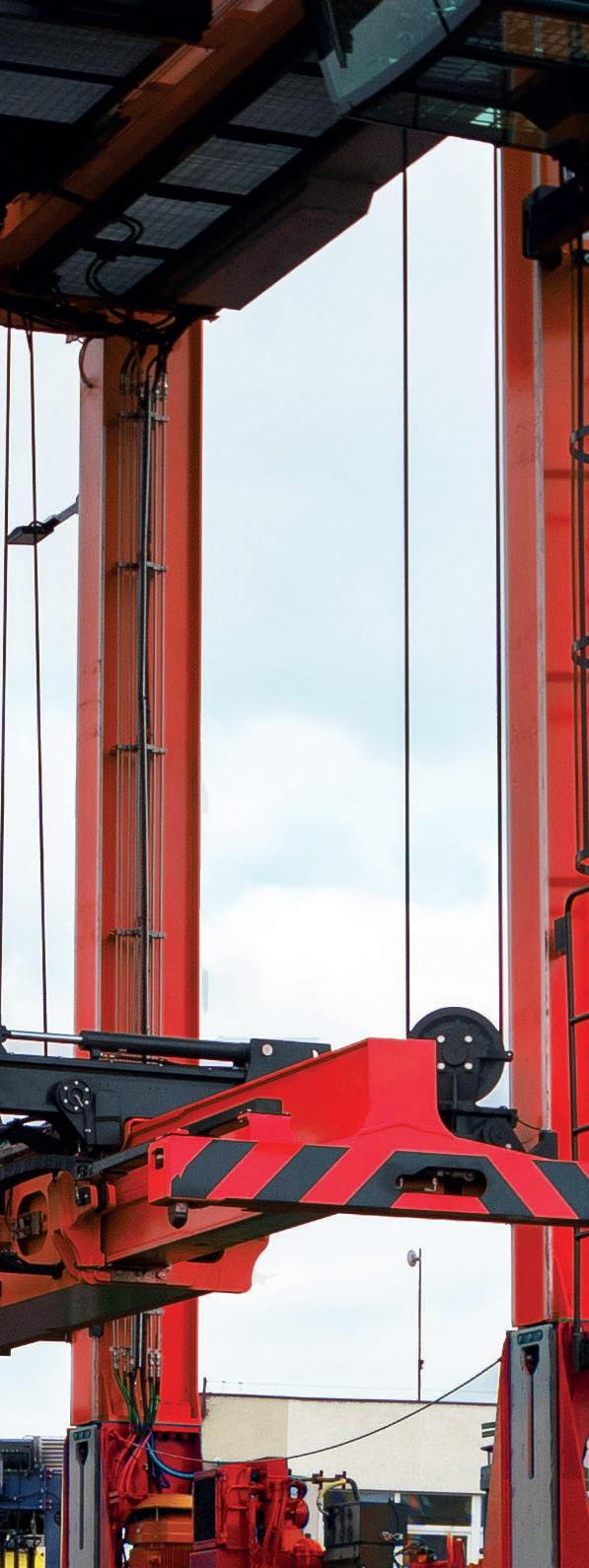
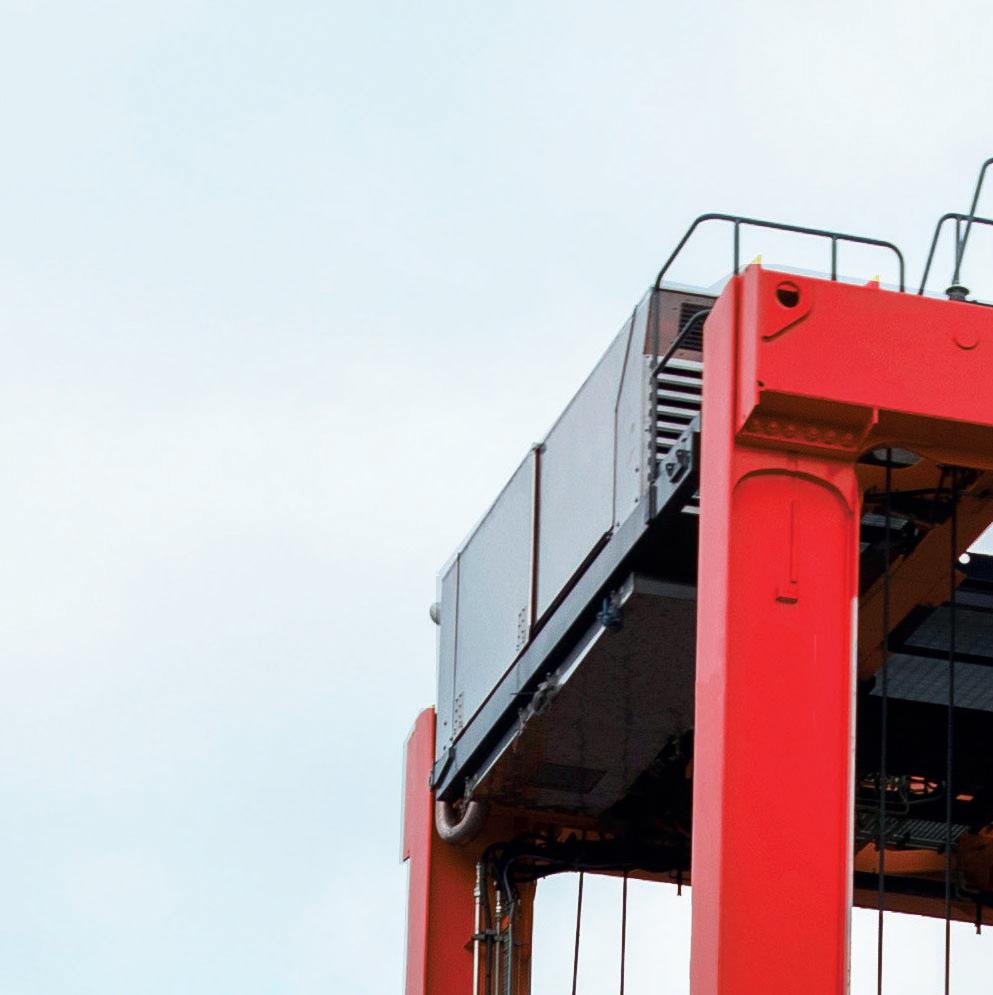
kalmarglobal.com
With Kalmar Hybrid Straddle Carriers.

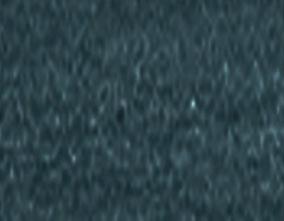
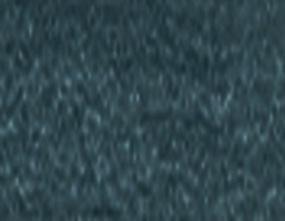

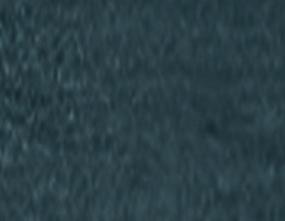



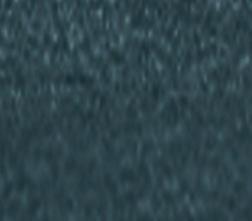



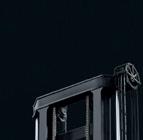

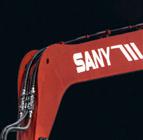
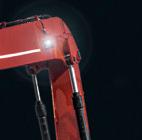











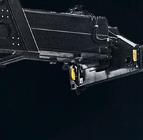
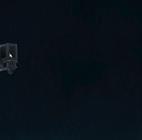

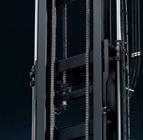

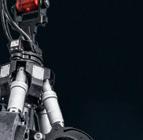
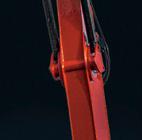

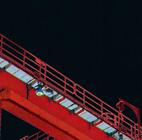



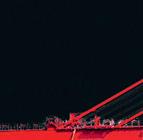
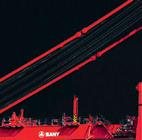
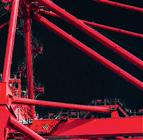
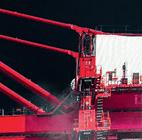
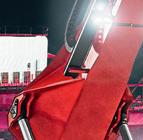
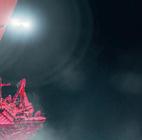

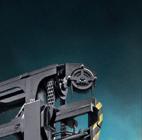

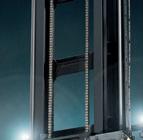
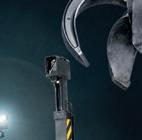
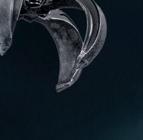
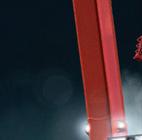
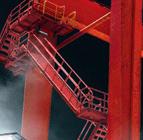
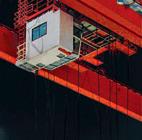
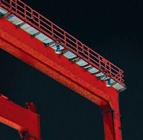


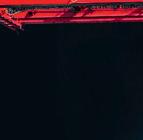


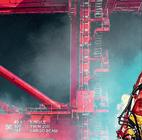


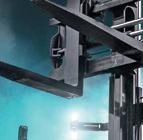
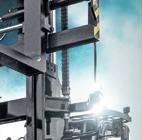
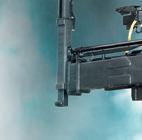
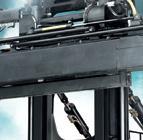


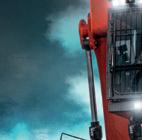






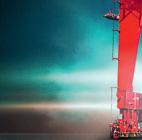
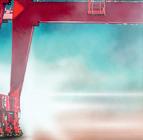

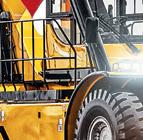
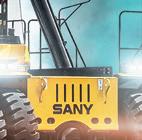
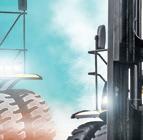
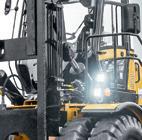

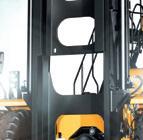


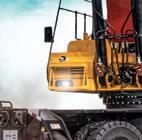
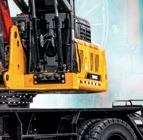
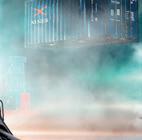
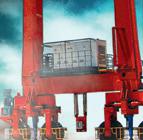



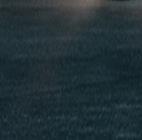










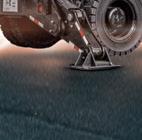


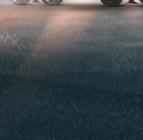
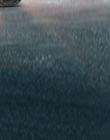



































































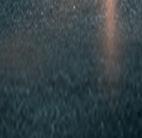









































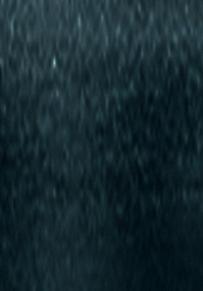













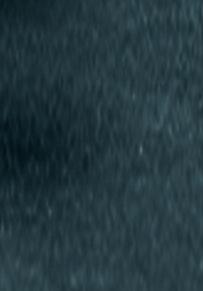























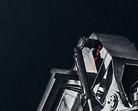






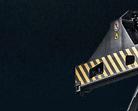
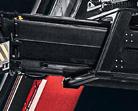
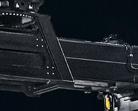








































MOVING MORE PORT MACHINERY FROM SANY www.sanyeurope.com SANY PORT MACHINERY –FIRST-CLASS PERFORMANCE, EFFICIENCY AND DURABILITY + More than 5,000 port machines sold in 12 years + Innovative manufacturing processes incorporating trusted European components + Continuously development of alternative drive systems to reduce fuel consumption + Intuitive and comfortable to operate, enhanced concentration for more safety REACH STACKER FUEL-SAVING AND STABLE MATERIAL HANDLER STRONG AND EFFICIENT HEAVY DUTY FORKLIFT ROBUST AND DURABLE EMPTY CONTAINER HANDLER FAST AND COMFORTABLE HARBOUR CRANE CUSTOMIZED AND AUTOMATICE VISIT US AT INTERMODAL EUROPE RAI AMSTERDAM BOOTH C40 08. - 10.11. 2022
ADANI ENTERS BENGAL AND CLOSES GANGAVARAM…
Jeddah Targets top-of-the-range Containerships
Mawani, the Saudi Ports Authority, has confirmed it is targeting 24,000TEU container ships at Jeddah Islamic Port (JIP) and is making the necessary investments to facilitate achieving this goal.
Adani Ports and Special Economic Zone (APSEZ) has signed a 30-year concession agreement with Syamam Prasad Mookerjee Port in Calcutta for a bulk terminal at the Haldia Dock Complex.
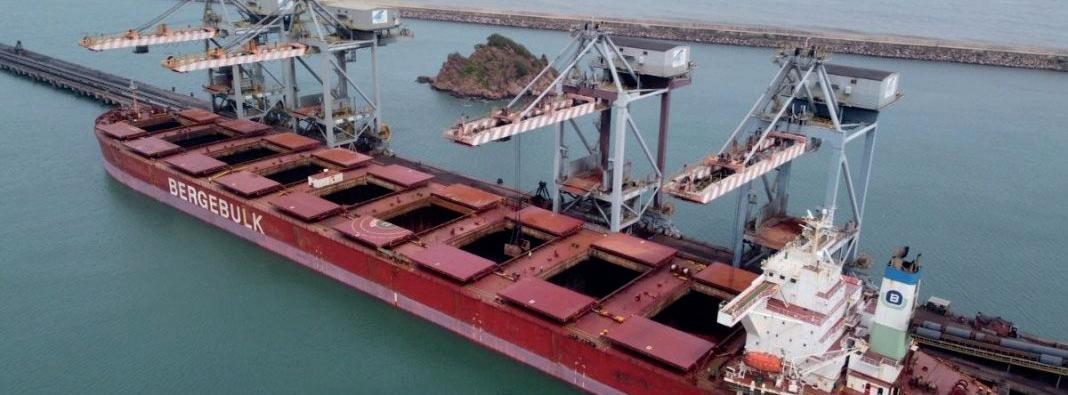
This facility has an annual capacity of almost 3.75 million tonnes per annum and joins the company’s existing 13 port concessions on both coasts of India.
At the same time, APSEZ is also waiting to learn if a proposed project involving the port of Tapout, located to the south of Haldia, is going ahead.
One investment that is moving forward for APSEZ involves acquisition of the remaining 58.1 per cent in Gangavaram Port Ltd (GPL).
After receiving approvals from NCLT Ahmedabad and NCLT Hyderabad, GPL becomes a 100 per cent subsidy of APSEZ, with the acquisition price quoted at Rs6,200 crore (US$753.7 million).
Karan Adani, CEO and Whole-time Director, APSEZ, notes: “Acquisition of GPL is a key milestone in consolidating our position as India’s largest transport utility and in achieving East Coast & West Coast parity.
8 Adani Ports continues to push ahead with portfolio expansion in India
Gangavaram Port has excellent rail and road network connectivity and is the business gateway to a hinterland spread over eight states.”
Located in North Andhra Pradesh, adjacent to Vizag Port, Gangavaram Port is the third largest non-major port in the region, with the ability to handle fully laden super cape size ships up to 200,000DWT. In FY 2022 it handled 30 million metric tonnes of dry and bulk commodities across its nine berths.
…BUT VIZHINJAM CHALLENGES CONTINUE
The desire of APSEZ to develop the planned transshipment Vizhinjam Port in Kerala State continues to face challenges and disruption.
A large number of local inhabitants have been staging protests at the entrance of the port area to stop the construction work
APMT Deepens
APM Terminals Gothenburg has confirmed it is to deepen the port’s shipping channel so that the largest container ships in service, of 24,000TEU capacity, can call at Sweden’s principal port. Completion of the project is slated for 2026. The AP Moller Maersk company states that the project is needed because, “volumes passing through APM Terminals Gothenburg are steadily increasing, a trend that has been further accelerated by supply chain disruptions.”
and demand a coastal impact study is completed. Key concerns from the protesters state that the construction process is increasing coastal erosion.
However, the Kerala High Court has ruled that any obstructions impacting construction traffic must be removed, although APSEZ
Height Fatalities
UK-based insurer, the TT Club, has issued a seven-step checklist to combat height fatalities at ports, stressing that awareness of the issue and causation is a critical initial approach to resolving the issue. The seven steps are: conduct a working at height risk assessment; implement working at height training, invest in PPE, complete safety equipment maintenance, implement a personal safety system, update and review all procedures and record everything.
maintains that Issues still remain in this respect.
Kerala Chief Minister, Pinarayi Vijayan, has confirmed that the local government was considering providing rented accommodation to any displaced residents and addressing any rental issues.
Wilmington Terminal Port of Wilmington (DE) operator GT USA, part of the Gulftainer group, has confirmed it is committed to plans to develop a new US$410m container terminal near the existing port. This is despite changes to senior leadership and announcing in August 2022 that it had to bear “significant legacy costs.” GT USA states it is “resolutely committed to Delaware,” and wants to develop a new terminal at DuPont’s former Edgemoor site.
The company has confirmed that two contracts have been signed, to deepen and construct new berths at JIP, with PC Marine Services and Modern Building Leaders (MBL), with the latter part of a consortium with HutaHegerfeld Saudi Ltd.
The project represents a US$170 million investment and will see new berths, 26 to 31, each with a 16m water depth alongside and together totalling 1100m in length constructed.
The location of JIP in the Red Sea represents no deviation from the main East-West shipping routes for vessels sailing between Asia and North Europe/ Mediterranean via the Suez Canal, so the facilities represent an optimal location for the largest ships in service making calls with no deviation.
Mawani is also expecting JIP to commence receiving larger bulk grain ships in the light of the desire of Saudi Arabia to secure and maintain higher grain reserves. This follows on from the recent volatility of grain supply caused by the Russia – Ukraine conflict.
BRIEFS
COSCO Pauses
COSCO Shipping Ports (CSP) is delaying the completion of the acquisition of a 35 per cent stake in Hamburger Hafen und Lagerhausgesellschaft’s (HHLA) Tollerort facility at the Port of Hamburg. Despite both HHLA and the Mayor of Hamburg already approving the deal, the Federal Ministry of Economics and Technology voiced concerns about COSCO’s entrance. Berlin must approve the deal, and now an investment review procedure is underway.
For the latest news and analysis go to www.portstrategy.com NOVEMBER 2022 | 9 PORT & TERMINAL NEWS

MEGA SHANGHAI TERMINAL DEVELOPMENT INITIATED…
Paranagua Anticipates More Grain Throughput After Deepening
As a result of the main access channel at the Port of Paranagua, Brazil being deepened, higher volumes of grain throughput are expected.
According to the port authority, Portos do Parana, the route into the port and mooring berths at its Eastern Export Corridor are now 12.8m deep up from the previous depth of 12.5m, based on the lowest point of a ship’s keel and the waterline.
A new 11.6 million TEU capacity container facility has been confirmed north of Yangshan in China.
The US$7.8 billion project is being undertaken by Shanghai International Port Group (SIPG) and is expected to deliver an additional 5500m of container berthing space.
Initial construction works commenced in early October 2022, with a projected completion
date of the end of 2030.
SIPG states that the new facilities will help improve service levels for the Yangshan deep-water area while enhancing river-to-sea combined transportation in the Yangtze river delta.
Shanghai remains the world’s largest volume container port, based on volume throughput. In the January to end of August 2022 period the port handled
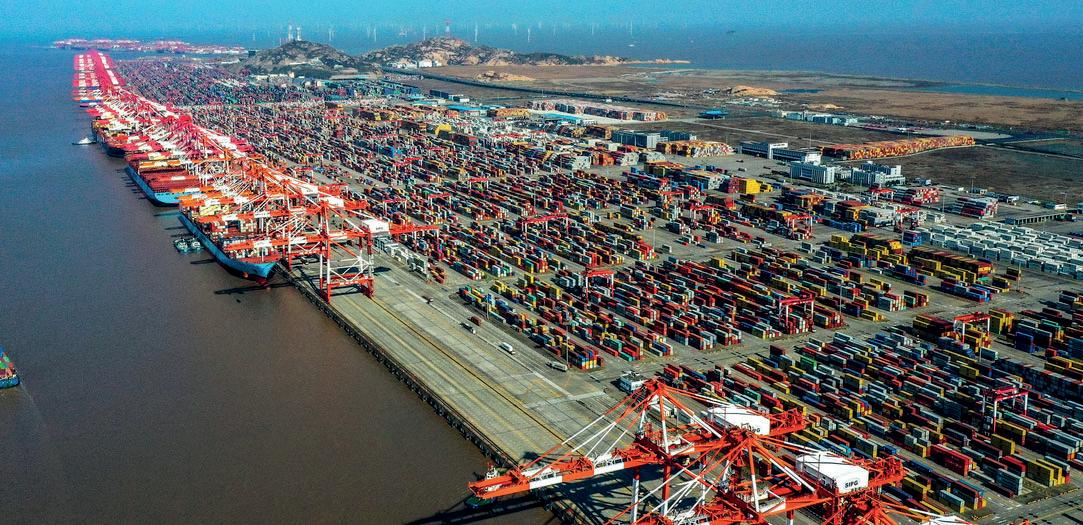
8 With almost 12 million TEU of extra capacity due in the north of Yangshan, no let-up in throughput is expected by Chinese authorities
31.02 million TEU, reflecting a drop of just 0.2 per cent on the comparable eight months of 2021, which was achieved despite a two-month lockdown earlier in 2022 due to Beijing’s continuing zero-tolerance COVID-19 strategy.
…AND NEW NANSHA BERTH PLANNED
A reported US$1 billion is being invested at Nansha Port by Guangzhou Port Group (GPG) to help keep pace with demand.
Currently, the annual capacity of Guangzhou Port is more than 23 million TEU per annum, but for 2021 the facility recorded almost
Klaipeda Wind Hub
Klaipeda is planning to establish a regional hub supporting offshore wind activities. Lithuania has already announced a 700-MW wind park off of its coast in a plan that could eventually provide 25 per cent of the total power demand for the country. A tender process will commence in early 2023.
Another project is being considered off the coast of Poland which will power more than 1.5m homes from 2026.
24.2 million TEU and for the year-to-date as of end of August 2022 the Ministry of Transport in China reports that the port handled 16 million TEU, reflecting a small rise of 0.8 per cent over the comparable 2021 period.
GPG confirmed in a filing to the
VW Selects New Hub
Port Freeport (TX) has been chosen as the new major US Gulf Coast hub for the future logistics operations supporting
Volkswagen Group of America, Inc. (VWGoA). A 20-year lease has been signed and VWGoA plans to serve 300 vehicle dealers in the US from this location once the new port facilities are operational in Q1 2024. Up to 140,000 vehicles per year will be imported from production factories in Europe and Mexico.
Shanghai Stock Exchange that the investment “intends to better serve the economic and social development of the hinterlands and speed up cargo processing.”
A new subsidiary, with paid-up capital of US$210m will own and operate the new facility.
Suez Zone Projects
The Suez Canal Economic Zone has approved major new expansion projects in SCZone-affiliated ports. These include a US$10 million, grain production and manufacturing activity in the East Port Said zone, a US$500 million, 955m berth expansion and accompanying yard at Suez Canal Container Terminal and launching construction of the new CMA CGM, COSCO and Hutchison Ports terminal facility at Sokhna.
As a result, the port is now preparing to load an additional 2100 tonnes of grain per ship calling and an annual total of near 600,000 tonnes, based on 285 vessels calling over the course of a 12-month period.
Further water depth is also being targeted initially of 13.5m, followed by more sediment dredging to reach a depth of 15.5m. In addition, the work will also enable bulk carriers up to 245m LOA to call.
The port houses a public silo and nine terminals, with three facilities designated for simultaneous bulk operations.
Paranagua has a key strategic role to play in the state of Parana, with its current volumes accounting for almost 30 per cent of all cargo throughout, which amounted to 57.5 million tonnes in 2021.
BRIEFS
Ethiopia Dry Port
A new consolidation centre at Modjo Dry Port in Ethiopia has opened. It is a joint venture of Maersk and its in-country partner, Freights International (PABOMI). According to the Danish carrier, the new facility is going to help “simplify and optimise” the supply chains of customers in the apparel and lifestyle industries by offering cost savings and optimising the speed of access to end-user markets based on using one centralised facility.
For the latest news and analysis go to www.portstrategy.com NOVEMBER 2022 | 11 PORT & TERMINAL NEWS
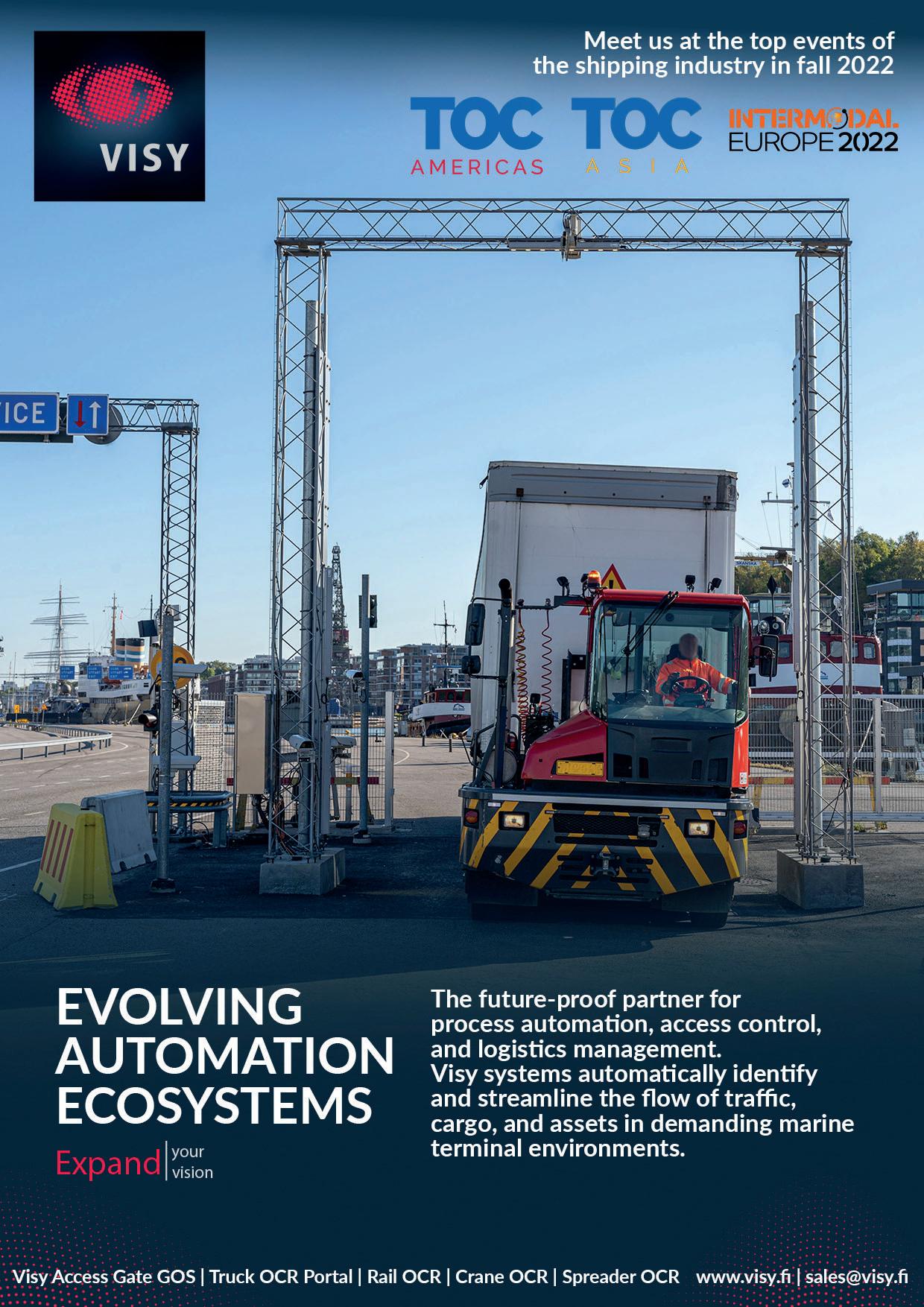
CMA CGM LAUNCHES DIGITAL AND IT INITIATIVES
CMA CGM companies in India are launching a range of digital and IT initiatives to improve supplychain activities for shippers and customers in this country’s hinterlands.
Effective from October 3, 2022, CMA CGM Agencies India confirms that it has introduced four different inland container depots (ICDs) in North India (at Ludhiana, Jodhpur, Kanpur and Jaipur) to its digital forwarding system, which was originally piloted at two other northern India locations in April 2022.
This process involves introducing the implementation of the digital forwarding note or Form-11 via the ODex platform in the ICDs. From the end of October 2022, CMA CGM will move on to only accepting digital forwarding information, although
for the immediate future all reefer shipments will remain part of the manual processing system. This initiative is part of the French carrier’s desire to introduce more paperless transactions to significantly speed up the flow of cargo via rail, especially as greater use of block train activities is forming a larger part of multi-modal

8 CMA CGM is implementing new digital initiatives in India to deliver greater supply-chain e
ciency
contract arrangements.
At the same time, CMA CGM (India) has announced it is using the MatchBox Exchange, a technology platform that provides empty container exchange solutions. This allows
NEW INTEGRATED PLATFORM IN RIGA
Freeport of Riga Authority has released a new integrated shared platform to provide multimodal cargo services for sea and land freight. As a result, this port is targeting the digitalisation of cargo documents and data circulation, along with electronic data exchange, with existing information systems throughout Latvia.
The Authority contends that by implementing the project it will be able to “significantly” improve the speed of cargo circulation while also reducing the administrative burden and impact on the environment.
Viesturs Zeps, Chairman,
Advancing PMIS
Development of an advanced and innovative analytics dashboard to enhance digital Port Management Information Systems (PMIS) is the target of a new strategic partnership formed between Innovez One and specialist maritime IT company, Aventra Group. A joint platform, dubbed Port Management Insights, will use historical and real-time data sourced to sensor-based IoT technology) to optimise port, towage and pilotage.
For
stakeholders to better optimise landside logistics operations and save on costs by eliminating unnecessary container trips to empty storage yards.
The latest developments from CMA CGM come at a time when Indian authorities are encouraging their transport, logistics and shipping stakeholder partners to move away from paper-based documents to digital solutions.
Indeed, a new National Logistics Policy (NLP) in India reiterates the need for standardisation of documentation processes and a move to single-window systems within a Unified Logistics Interface Platform (ULIP).
Freeport of Riga Board, notes:
“We are aiming to become a leader in the implementation of digital technologies throughout the Baltic region. We are working on the digital transformation of port processes in order to introduce the principles of the smart port into everyday life by integrating several information systems that make the port a multimodal transport hub and allow information to move faster than actual cargo carriers.
Digitalisation of the port not only facilitates the port’s and the port companies’ cluster operation, promoting their role among the logistics players of the region, but
Namsung Takes OPUS
Namsung Shipping has confirmed that it has implemented CyberLogitec’s OPUS Stowage Prime, a planning solution for automated vessel stowage activities.
The South Korean marine transportation services company has been utilising OPUS Stowage to assist its vessel loading and unloading plans since 2012, but has now chosen to upgrade to the new, next generation automated intelligent algorithm system.
go to www.portstrategy.com
also provides data for new solutions aimed for linking the city, the city transport and other solutions.”
This project is classified as “Digital transformation of port management, improving the processing and analysis of transport and logistics data” and the project implementation financing of €3.2 million (US$3 million) is part of the “Digital transformation” of the European Union Recovery and Resilience plan within the framework of the reform and investment direction 2.1 “Digital transformation of public administration, including local governments”.
Miami Digital Cranes
PACECO MOMENTUM has been appointed by PortMiami Crane Management, Inc. (PMCM) to install its specialist digitalisation tool, PACECO SPYDER, on three of its container cranes. The system was installed on six similar units in 2020. Two more cranes will get the system at a later date. PortMiami has already reported an increase in both “data awareness” and an improvement in both the quality and scope of data.
Shashi Kiran Shetty, Founder and Chairman of Mumbai-based Allcargo Group explains the value of this digital move. “The launch of NLP is a visionary move by the government which will bring transparency through digital integration in addition to boosting speed and efficiency. It will enable fast-paced logistics infrastructure development, better coordination among multiple stakeholders, simplify processes and documentation and boost last-mile connectivity.”
India represents a major market to CMA CGM, with the French shipping line and logistics service provider serving over 50 inland locations from its network of deepsea and feeder port calls throughout the country.
BRIEFS
NYK Integrates IMOS
The Veson IMOS Platform (IMOS) is being integrated and deployed as a platform supporting the shipping businesses of Nippon Yusen Kabushiki Kaisha (NYK) and NYK Bulk & Projects Carriers Ltd. IMOS is a shipmanagement platform that has been developed by Veson Nautical that has the capability to support ship operations including fuel management. NYK plans to link the platform to its financial system.
the latest news and analysis
NOVEMBER 2022 | 13 DIGITAL NEWS
ffi





RESEARCH PROJECT TARGETS ENHANCED SIMULATOR ACTIVITIES
BRIEFS
Blue Visby for MOL
A greater use of simulation continues to gather momentum across the maritime industry, with the introduction of Artificial Intelligence supporting training and development needs. From a shipping perspective many functions on modern vessels have been automated but a ship is still, to a great extent, a human controlled system.

A new €3.3 million research project, funded by Horizon Europe, is targeting the improvement of the effectiveness and accessibility of simulatorbased education, safety, security, and the performance of maritime operations.
This innovative initiative is called Integrating Adaptive Learning in Maritime SimulatorBased Education and Training
with Intelligent Learning System (i-MASTER). The approach has a primary objective to develop an Intelligent Learning System (ILS) with maritime learning analytics and adaptive learning function for students engaged in both remote and on-site maritime simulatorbased education and training.
The i-MASTER Intelligent Learning System comprises three specific innovations:
1) Digitalised navigational performance assessment
2) AI-enabled intelligent learning for remote (desktop) ship bridge simulator training
3) AI-enabled intelligent learning for on-site full mission ship bridge simulator training
The Finnish-German/ German-Finnish Fraunhofer Innovation Platform for Smart
8 Shipping remains largely a human-controlled process, but AI is getting involved with simulation
Shipping at Novia University of Applied Sciences (FIP-S2@Novia) is one of the core partners in i-MASTER, with responsibility for the maritime learning analytics development and the implementation and testing phase, thus digitising maritime education.
Mira Salokorpi, Director, FIP-S2@Novia, explains more about the project: “It brings together technological, educational, psychological, and economical expertise with experience in shipping, while also representing the first joint EU project in the framework of the FIP cooperation.”
HHLA’S ROBOTIC FOLDING PINS
Hamburger Hafen und Logistik AG (HHLA) and a number of fellow German partners are developing a research project that demonstrates the handling of folding pins on container wagons using an autonomous mobile robotics system.
The initiative is part of the IHATEC “Pin handling mR” project in which HHLA and the Fraunhofer Centre for Maritime Logistics and Service (CML) are researching the automation of pin handling in rail processing, with support from the German Federal Ministry of Transport and Digital
Infrastructure (BMDV), which is part of work focused on innovative port technologies (IHATEC).
The existing process involves the pins that secure containers to train wagons having to be manually fastened before trains are loaded, with the installation of the pin amended by the size of the container. This is clearly a time-consuming process but can be replaced by a mobile robot that can operate the pins using a gripper arm.
HHLA notes that the specific software supporting the robotics activity is connected via an
interface, which is expected to be developed “within two and a half years” and this will then ensure that the control centre can monitor and manage all pin handling activities.
HHLA is taking responsibility as overall coordinator for the project and will support it with its subsidiaries Container Terminal
Altenwerder (CTA), HHLA Sky, Hamburg Port Consulting (HPC), Metrans and Service Centre
Altenwerder (SCA). Partner in the project, Fraunhofer CML, is leading the development and procurement of robotics hardware and software.
Major Japanese shipping line, Mitsui OSK Lines (MOL) has confirmed that it has joined the Blue Visby Consortium. This group of companies is led by Finnish maritime software company NAPA, and UKbased law firm Stephenson Harwood and consists of over 15 organisations from across industry, government and academia, with the set objective of reducing greenhouse gas (GHG) emissions from ocean vessels through the development and implementation of digitalbased platform technology.
Galileo Projections
A new tool has been launched to accurately predict the arrival time of ships in the Port of Montreal up to 21 days in advance.
Dubbed project Galileo and developed by the Maritime Employers Association (MEA), in conjunction with Airudi and Scale AI, the new artificial intelligence tool is targeting improved dispatch of the port’s workforce. Galileo takes into account port traffic, weather and quantity and type of merchandise, according to MEA.
Zencargo in Real Time
Specialist digital freight forwarder, Zencargo, is to provide real-time tracking and visibility improvements for freight cargo across the logistics supply chain through a partnership with Tive.
Zencargo states that its customers will have an exact knowledge of a shipment’s location through its real-time collaborative platform. The company’s platform connects all stakeholders, while Tive will bring critical shipment data via its real-time sensors.
For the latest news and analysis go to www.portstrategy.com NOVEMBER 2022 | 15 DIGITAL NEWS
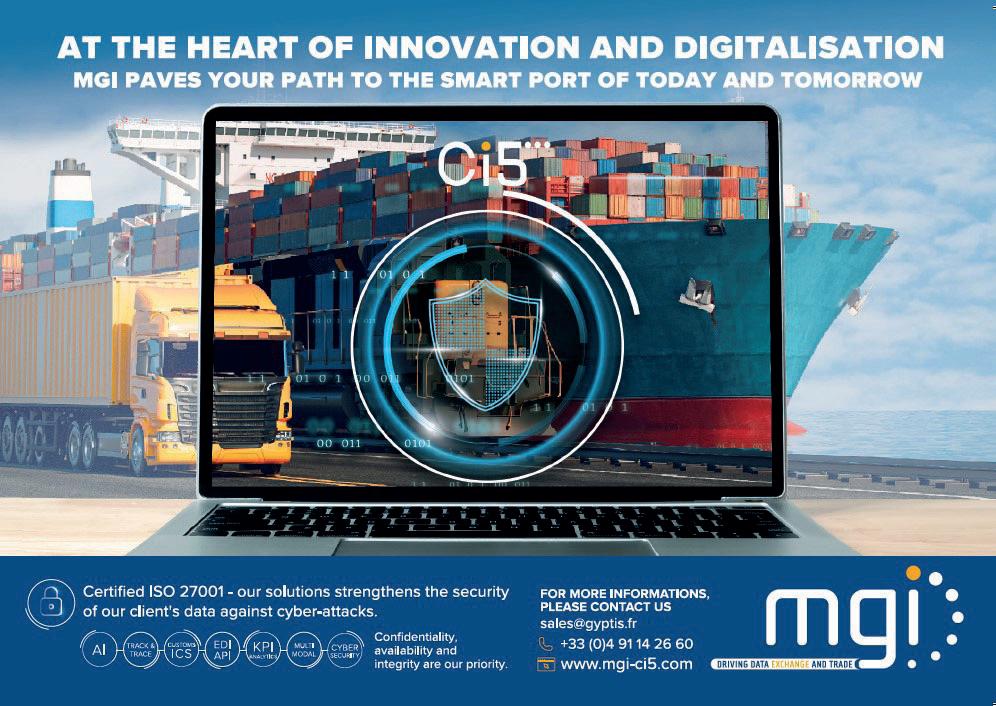
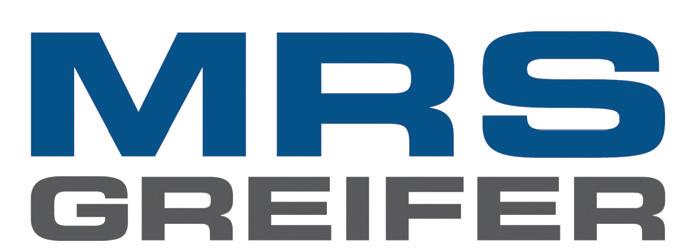
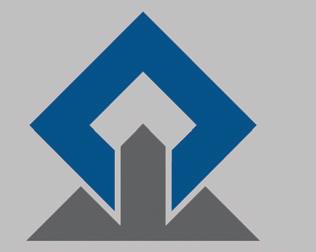
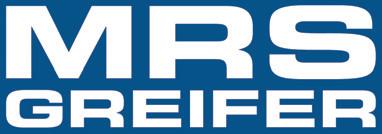
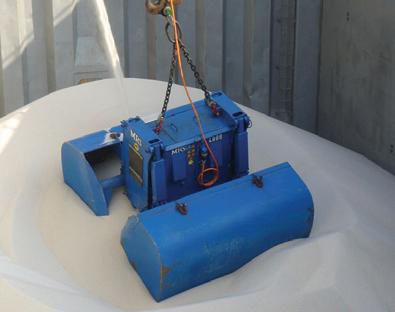
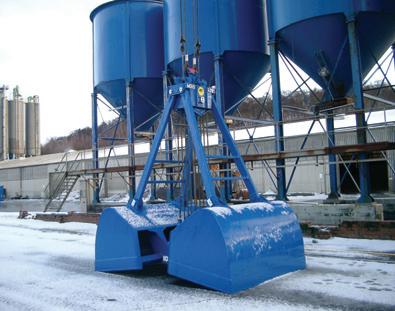
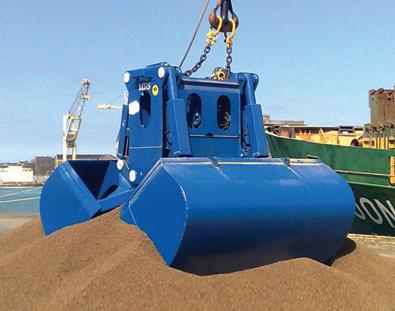
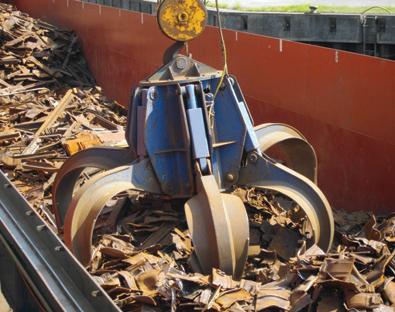
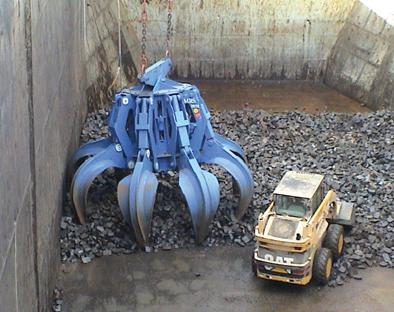
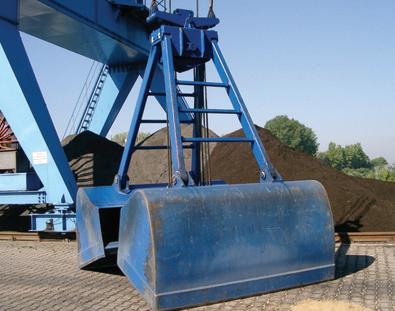
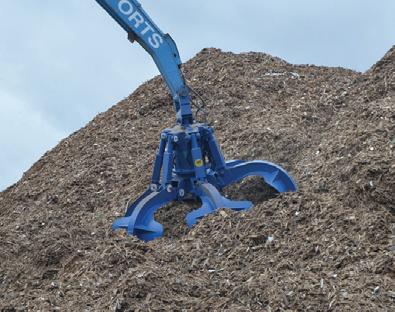
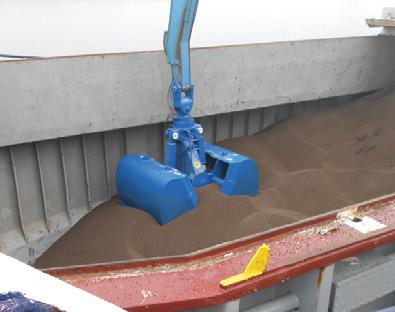
Rope-, Motor-, Hydraulic-Grabs OUR EXPERIENCE –YOUR ADVANTAGE The perfect grabs with unbeatable reliability, leading in efficiency and quality, expedient and economical. MRS GREIFER GmbH Talweg 15-17 • 74921 Helmstadt • Germany Tel: +49 7263 912 90 • Fax: +49 7263 912 912 export@mrs-greifer.de • www.mrs-greifer.de
VALENCIA SETS UP SOLAR OPTION
The port of Valencia, Spain is installing two solar plants so that 14 per cent of its total electrical energy can be self-generated.
The Board of Directors of the Port Authority of Valencia (PAV) has confirmed approval of a second, large, project that will see a total of 11 per cent of the port’s electrical power generated from the installation of photovoltaic plant on the roof of the Valencia Terminal Europa vehicle storage unit, located at the east dock of the port.
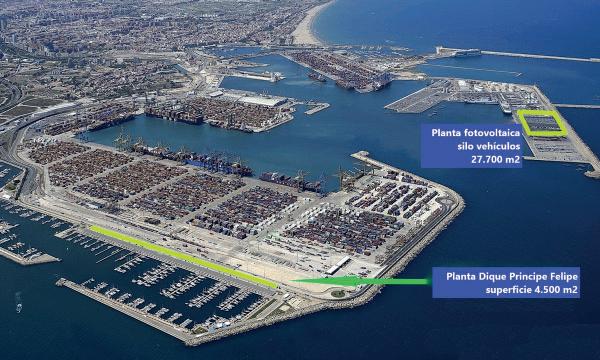
This solar facility will see a surface area of 27,700m2 constructed on the roof of the terminal, which is operated by the Grimaldi Group. Although no timescales have been released for the project, a tender is due for release “in the near future”
and will come with a budget of €17 million.
The infrastructure is equivalent to the size of four football fields and will comprise 10,773
photovoltaic modules installed on a metal-framed structure, inclined at four degrees, and facing in a southerly direction. There will be four transformers,
HOUSTON HYBRID ORDER
A total of 14 hybrid Rubber-Tyred Gantries (RTGs) are for use at the Barbours Cut Container Terminal, with an additional 12 hybrid RTG units selected for the Bayport Container Terminal.
The US Gulf Port of Houston has placed an order for 26 new hybrid RTGs from Konecranes as part of preparing for larger vessels and to keep pace with growth in demand.
These new RTGs, from Konecranes, have a lifting capacity of 50 tons while stacking containers up to 1-over-5 high across six container rows as well as providing coverage of the
Generation 6
The Port of Genoa will soon be receiving its first Generation 6 mobile harbour crane (MHC) from Konecranes. The Gottwald MHC has been ordered by Gruppo Spinelli, to support its growing container handling business and will provide additional capacity as volumes surpass 500,000 TEU per annum, while also delivering both operating and overall energy efficiencies. Delivery of the new generation unit is due in December 2022.
truck lane. Key design features include Li-ion battery technology and a battery management system that monitors the charge level and overall health of the batteries, although the hybrid power system is retrofittable and also comes with eco-efficient Tier 4f diesel engines that charge the batteries, as needed.
Each unit is configured with the Active Load Control system, which eliminates container sway, plus includes Auto-steering, Stack Collision Prevention and Truck Lift Prevention smart features.
Konecranes has confirmed the
Upgrades at VSC
Vostochnaya Stevedoring Company (VSC) has boosted its equipment fleet with 10 additional Kalmar terminal tractors and a further 10 Seacom semitrailers. In addition, the operator, Global Ports, has also confirmed plans to transfer three additional RTGs and eight more Kalmar straddle carriers to this facility as part of expanding the terminal’s equipment fleet by 20 per cent during 2023. VSC handle a mixed cargo base.
to
8 With its latest two projects, Valencia is targeting 14 per cent of its total electrical energy needs to be generated from solar power
with two units of 1250 kilovoltamperes (kVA) each and another two of 1,600 kVA, thereby generating around 8,380 MWh/ year, which equals approximately 11 per cent of the port’s total electrical energy consumption.
The remaining three per cent of electrical power will be generated from the first project of this nature in Valencia, which involves development of a photovoltaic energy plant at the Príncipe Felipe dock area. Here the solar energy panels are occupying a surface area of 6420m2 and will generate 2353 MWh/year. This component has a budget of just over €3 million.
ability to monitor the status of the equipment via its TRUCONNECT remote link.
According to the National Retail Federation’s Global Port Tracker, volume imports to the end of July 2022 at Houston were up by 21 per cent. The August 2022 total box volume of 382,842TEU represents a 20 per cent increase over August 2021 and comprises the port’s best ever month. Year-to-date volumes of 2.6 million TEU are 17 per cent up on 2021, which itself was a record. The ever-increasing demand is seeing dwell times increasing though.
Green Altenwerder
HHLA Container Terminal Altenwerder (CTA) has confirmed an order for seven battery-powered tractor units. CTA states that the new electrified equipment will save around 3000 tonnes of CO2, if compared with the existing diesel machines in use. The new units will support the ship-to-shore container gantry cranes and rail-mounted gantry cranes in the storage and rail areas which are already electrically powered.
Aurelio Martínez, President, PAV, highlights “Valenciaport’s commitment to the fight against climate change with specific projects underway to become an emission neutral port by 2030 and contribute to the environmental sustainability of our surroundings. Making sustainability and growth compatible is an essential objective in our present and future strategy”.
Both projects are being financed by the Next Generation funds of the European Union and the Spanish Government’s Recovery, Transformation, and Resilience Plan.
BRIEFS
Amazon Expanding
Amazon has confirmed that it now has a fleet of 5000 x 53ft domestic containers for the US market and is also now offering space on its intermodal services to third-party shippers. The company has openly pledged to compete with existing intermodal service providers on the basis of ‘cost, speed, capacity and performance.’ Although only offering a small fleet, the company is selling services based on its fulfilment centres located near US rail terminals.
For the latest news and analysis go
www.portstrategy.com NOVEMBER 2022 | 17 EQUIPMENT NEWS
The new LHM
Designed for the future of maritime cargo handling. www.liebherr.com
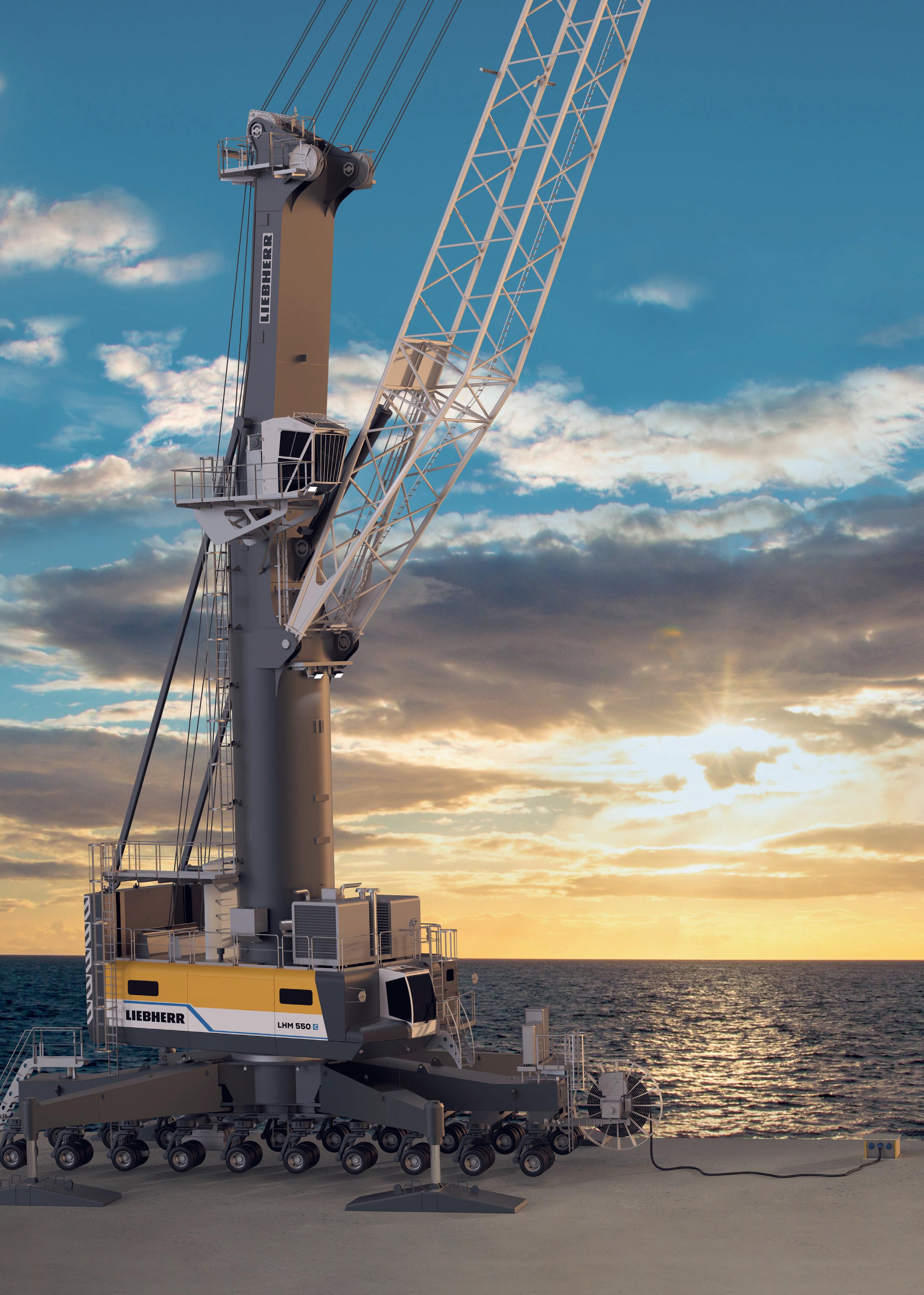 Mobile harbour crane
Mobile harbour crane
Discover
STUDY SEES MOBILE POWER SOLUTION FOR SMALL PORTS
BRIEFS
New Noatum MHCs
Small ports should target provision of shore-side power from mobile units, according to a new study from specialist consultancies, Hanseatic Transport Consultancy and MKO Marine Consulting.
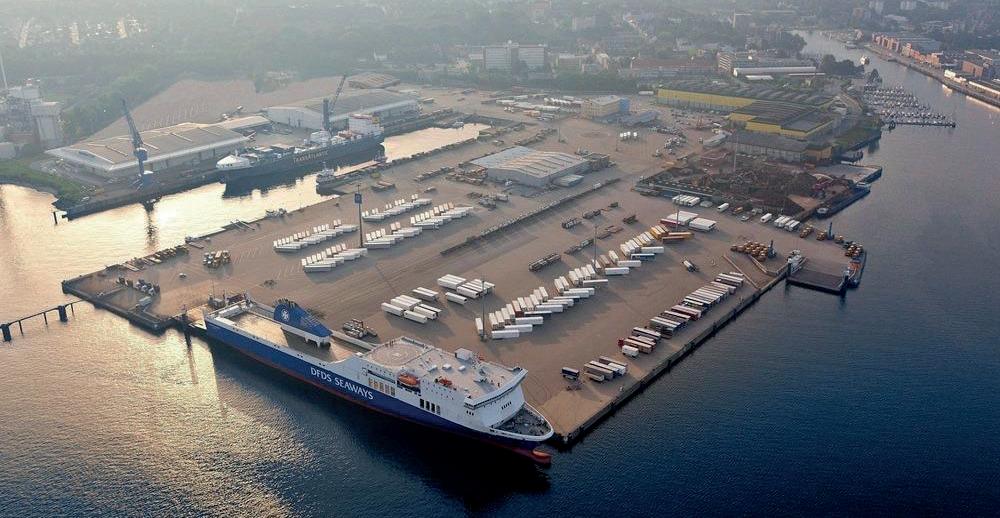
The study, entitled ‘Mobile shore power – technological possibilities and prerequisites,‘ evaluates the use of mobile shore power solutions in German ports and concludes that the use of mobile power units can aid ports in switching to this climate-
friendly technology option.
The switch to shore-based power systems offers welldocumented benefits, including emission-free electricity on a noiseless basis, although it remains subject to sufficient shored-based power being accessible.
The Study confirms, mobile shore power systems offer greater flexibility than fixed shore-based power options and represent a good option over the more expensive, stationary
8 Smaller ports in Germany can benefit from mobile shore-power units, according to a new study
infrastructure, especially for smaller ports that generally have smaller vessels calling that require less power, often under 1.5MW, which can be provided by mobile shore power equipment.
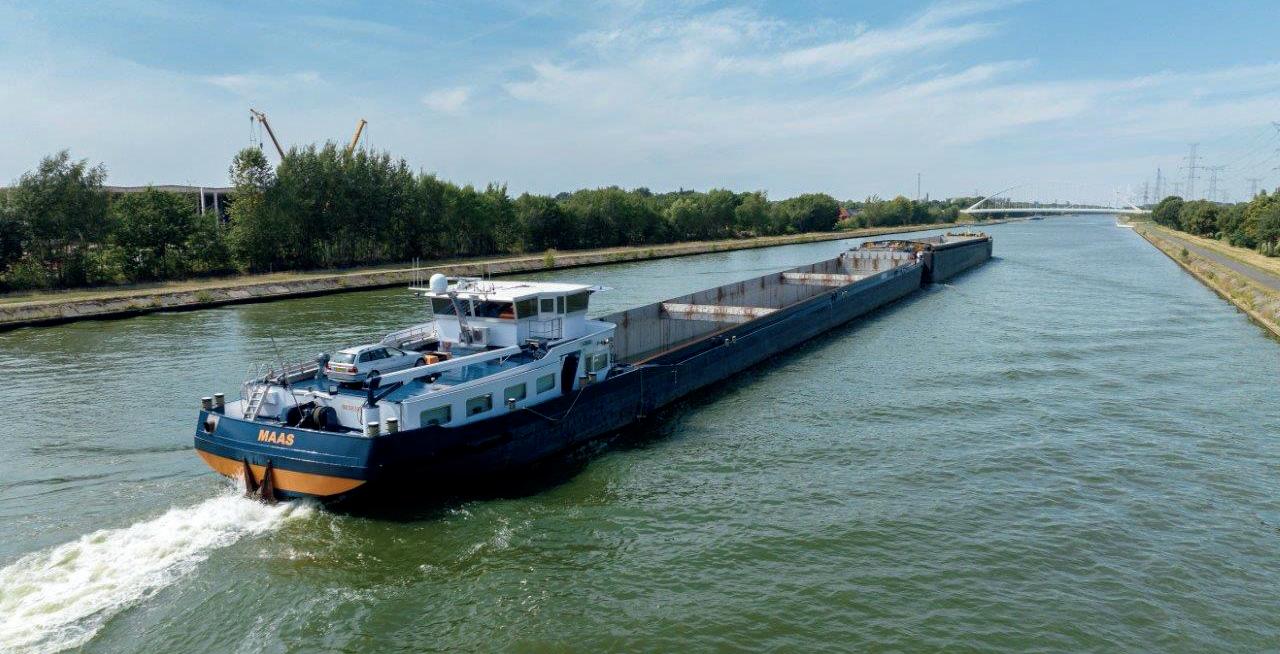
The challenge for ports in Germany, and the industry overall, is that workable mobile units remain a new option, with many solutions still being tested or needing further development.
Noatum’s terminal operations at the Spanish ports of Castellon, Sagunto and Tarragona are each receiving a new Liebherr mobile harbour crane. The new units offer an effective option for reduced energy consumption while maintaining efficient cargo handling productivity. This is primarily due to Liebherr’s proprietary hydrostatic drive that uses closed hydraulic loops for all lifting and turning activities to provide the crane operator with very precise control of all movements.
Fenders for Maio, Cape Verde
The small but strategically located Port of Maio in Cape Verde has received a new set of fenders from ShibataFenderTeam (SFT). This facility is part of a strategic transport corridor involving Africa in which infrastructure spending is co-financed by a combination of the African Development Bank, European Union, and local authorities. A total of 46 fender systems and 31 bollards were provided.
Maersk & Volvo Link-Up
8 In August 2022, the inland shipping container vessel ‘FPS Maas’ made its final journey on an internal combustion engine powered by diesel from Belgium to Rotterdam. During Q4 2022, the diesel propulsion is being replaced with hydrogen technology, entailing removing both the main engine and gearbox, and installing a new modular propulsion system of electric motors, hydrogen tanks, a fuel cell system and an EST-Floattech battery system with a capacity of 504 kWh. EST-Floattech’s reliable and DNV-certified Green Orca system will be used for peak shaving, secondary and bridging power as well as to ensure software failsafes are implemented to achieve safe and long-time operation of the batteries.
Maersk Performance Team is deploying its first battery-electric trucks in Southern California. In a new arrangement with Volvo Trucks North America, 30 units were operational in October 2022, with the aim of deploying 126 vehicles by Q3 2023. Each Volvo truck has a range of 275 miles on a single charge, with the aim of undertaking local and regional distribution activities throughout this US state.
For the latest news and analysis go to www.portstrategy.com NOVEMBER 2022 | 19 EQUIPMENT NEWS
Credit:
EST-Floattech Intelligent Energy Storage Solutions
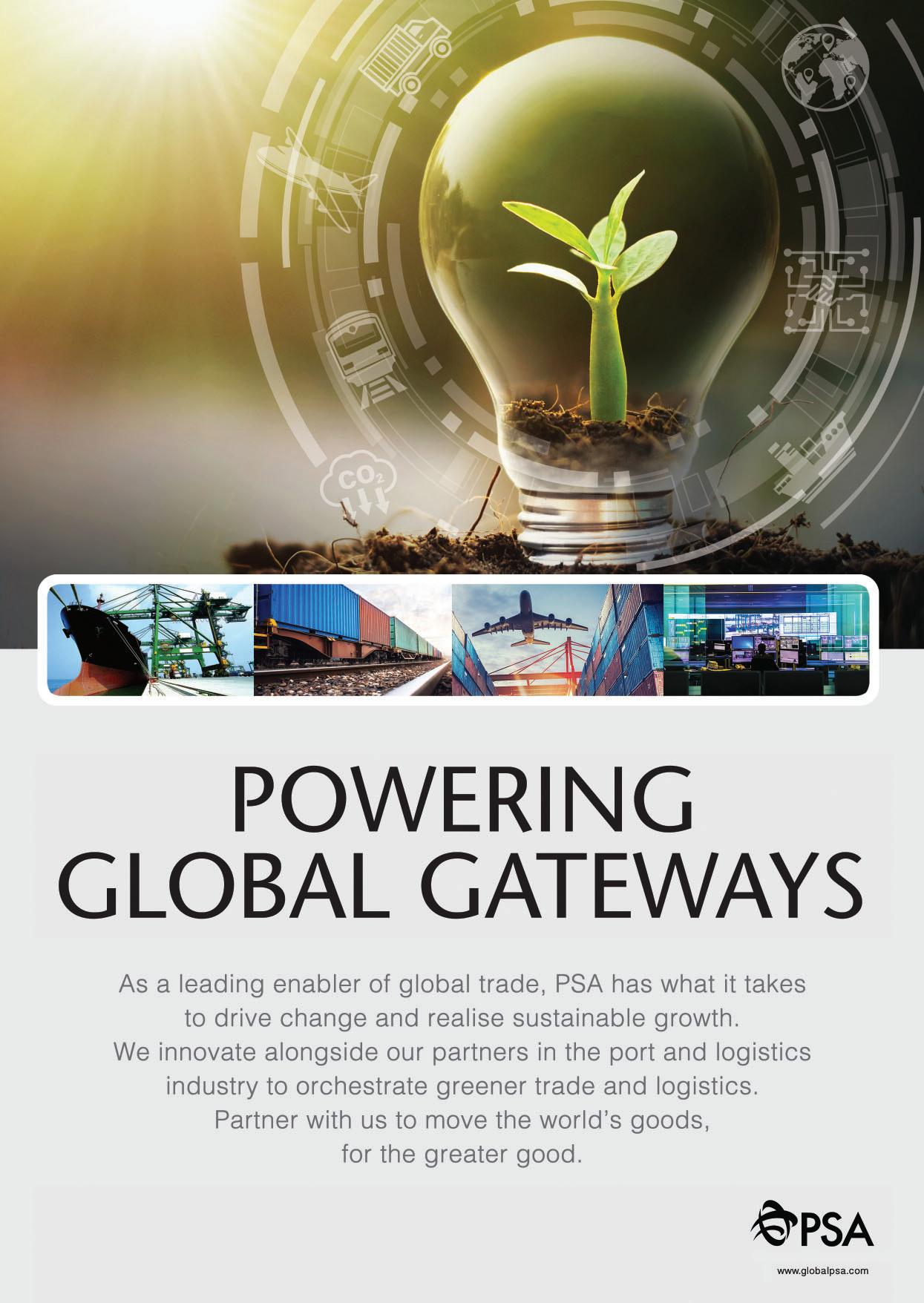
THEENVIRONMENTALIST
CHARLES HAINE
Maritime news pages are awash with talk of ‘green corridors’. It Is a great move to set them up now because zero-emissions’ ships won’t enter the market until 2030. Under the guise “if you build it, they will come,” there’s time to get organised on transforming these key arteries between specific hubs, to embrace new technologies and clean fuels. But there are also huge challenges.
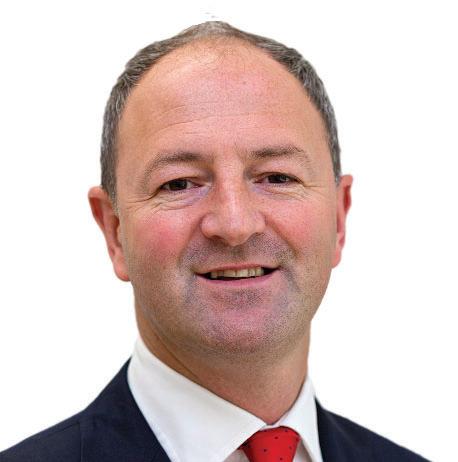
The annual festival of climate compromise is almost upon us: on 6 November, COP27 starts in Egypt. A long year ago, in Glasgow, shipping rose to prominence. The Clydebank Declaration, signed by 22 countries, called for six green shipping corridors (GSC) by 2025. Proponents were charged with ‘facilitating partnerships’ and ‘taking steps’ to decarbonise routes between at least two ports in signatory countries.
What else makes a GSC, and what does green – in this seagoing context – look like?
Bearing in mind there are no zero-emission vessels in play at commercial scale, the emphasis is going to be on modifying places and building networks that offer key services (e.g., alternative fuels, plug-in charging) for the next-gen’ of cargo vessel.
The Energy Transition Commission for the Getting-toZero Coalition points out the required factors for success: getting the right stakeholders into collaboration mood; bunkering infrastructure; customer demand; and new policy, including incentives.
Maritime safety has to be embedded too, so there’s no time to delay. However, this is not easy when government policies aren’t clear (or available), cross-industry partners need to be aligned (which takes time), and investors need to know returns will be adequate while completing meaningful diligence before imparting millions. Remember that net-zero is a decades long journey rather than a near-term outcome. To be realistic, transition fuels and tech are going to be a bridge in all this,
THUMBS UP TO GREEN CORRIDORS BUT BIG CHALLENGES LIE AHEAD
on the bill, yet biodiversity is barely mentioned in the grand announcements and plans for new green shipping routes.
REALITY OR SPIN?
and that can water down the green credentials.
They’re not holding back though, citing two major opportunities: the Asia-Europe (Singapore-Rotterdam) container route and the Australia-Japan iron ore route.
The latter might in fact be called “the irony route,” on the basis that steelmaking generates around eight per cent of global CO2 emissions, over shipping’s three per cent. Yes, it’s a good idea to try and decarbonise an energy intensive sector but are we looking at real change and innovation or simply enhancing the ‘business-as-usual’ situation?
‘Green’ evokes images of clean air and healthy lifestyles, no or low impact (e.g., from noise, lighting) on receptors, and the proliferation of nature. Surely marine biology deserves a place
From the outset, the use of the word green in this context smacks of marketing and spin, a type of greenwash, or green ship-wash if you like! Some reputations in oil & gas and banking through to aviation and retail are being hammered at the moment for false claims on sustainability benefits.
In reality, progress is being made with more pace in local and regional settings. Nearshore/ coastal routes and inland navigation networks have shorter distances and proven connectivity, so are well-placed to adopt step-change. Strides towards the provision of smart energy networks and electrification have been made in some key river networks of Europe.
In these settings, it is also easier to measure positive impact, evidenced in improved
local air quality (and thus human health), avoiding damage to marine life, while delivering cleaner and efficient cargo and passenger transfer.
The supply-chain understanding and actionoriented mindset of ports will help deliver successful, lower impact, corridors. In January, the C40 Cities group announced a trans-Pacific GSC between the proactive ports of Los Angeles and Shanghai with shipping lines and cargo owners partnering. The Port of Dover intends to become the world’s first high volume GSC.
COLLABORATION KEY
Collaboration with a wide range of stakeholders is key to creating mutual benefits and investment.
A good example is National Maritime’s (UK) Blue Space Advanced Port, Energy & Logistics Centre concept. This can support ambitious strategic plans by connecting-in spin-off businesses and entrepreneurial start-ups. By stimulating green economy employment and creating new streams of economic value in port areas, and in locations where renewable sources of energy are available, we will truly be starting to anchor greener corridors and logistics into the lower-carbon future.

For the latest news and analysis go to www.portstrategy.com NOVEMBER 2022 | 21
The supply-chain understanding and action-oriented mindset of ports will help deliver successful, lower impact, corridors
‘‘
8 As part of comprehensive plans to decarbonise, the Port of Dover has set the goal of establishing the UK’s first high volume green shipping corridor with a focus on select cross channel operations
THENEWYORKER
BARRY PARKER
TIME TO MEASURE IT AND MANAGE IT
The supply chains are constrained- that is something that all the panelists agreed on during a presentation at Capital Link’s 2022 Maritime Forum in New York. Though they could not agree on the right analogy (one speaker from a carrier talked about a narrowing highway, while a top port executive on the panel referred to a plumbing situation of smaller and smaller pipes), a very clear consensus came through that the present system in the States is broken.
One of the panelists, also a top port manager, said that we need to be changing operations to a 21st century mindset- which includes getting to a 24 x 7 mode of working well beyond the load and discharge of vessels. The
plumbing analogy rang true here, as the talks described “an increasing lack of fluidity” in the movements of cargo (a pipe rather than a chain, but readers should get the idea). Farther away from the cranes on the wharves, the likelihood of slowdowns grows.
The presentations, held during New York’s “Climate Week” at the United Nations in late September, attracted a coterie of high-level executives from the shipowner community. Though many of those attending the Forum came from the bulk cargo side of the business, there were a fair number of delegates from tonnage providers (who charter vessels out), the actual carriers (who charter vessels in), and even a few from the cargo side.
THEANALYST
PETER DE LANGEN

This conference was not aimed at attendees from the port side; other than the panelists- representing large ports on the East and the West coasts, I did not see many stakeholders from local or other ports. Nevertheless, many port planners are no doubt aware of the issues that came up (and might even have some different analogies to describe the blockages and constraints that they’ve experienced), and might possibly have seen similar presentations.
If there is a take-away for readers here, it is a reminder to look at the operations of terminals and transport providers serving the ports- links in the chain farther inland from the wharves.
One entity alone will not solve the problems, but groups of ports (working ad hoc or may be through established trade organisations) might be able to develop strategies for unclogging the pipes (or unjamming the highways) and share their findings with legislators and policy makers. The aphorism “If you can’t measure it, you can’t manage it,” also applies here as the ports work towards moving the mindset forward. It’s important for the port community to be able to quantify the costs of narrowed pipes father away from the docks.
The folks in state capitals and on Capitol Hill will take notice more quickly if presented with actual data on real costs and opportunity costs.
CONDITIONS FOR PORT BUSINESS ECOSYSTEM DEVELOPMENT

DP World, the developer of London Gateway, made two recent announcements, signaling the steady development of the London Gateway port business ecosystem. First, it will invest around £350 million in a fourth berth project, which will increase London Gateway’s capacity by a third.
This will enable London Gateway to continue increasing volumes and expanding its share of the UK market. Second, DPW announced that work has begun on a new speculative 119,000 ft2 green warehouse at London Gateway’s port-centric Logistics Park. DPW stated that demand for premium warehousing space in the South East of England reached ‘unprecedented’ levels in 2022 and various new tenants have taken leases at London Gateway’s Logistics Park.
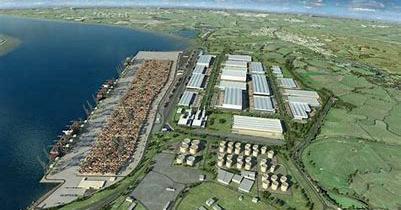
These announcements are relevant for a couple of reasons. First, they show that
DPW really is developing a ‘port business ecosystem’ not just a container terminal. The development of the logistics park of around 400 hectares, is an important mechanism to capture the value that is created through the investment in the container terminal.
Second, they show that developing such an ecosystem is a long-term endeavour. The building permission for London Gateway was granted in 2007, building started in 2010 and the
first ship was handled in 2013. The fourth berth will become operational in 2024, and after that there is still room for expanding the terminal with two more berths. The logistics park is currently around 50 per cent utilised.
Third, this case shows that in specific instances, if the conditions are right, a commercial developer (albeit a state owned one) is willing to
take the risks associated with building a port business ecosystem from scratch, even in a fairly mature market like the UK. Other countries may be interested in replicating this approach.
However, this success case may be fairly unique in the sense that the development took place in a privileged location (which became available after the closing down of a refinery) in a competitive market. This aspect is critical from the perspective of a policy maker, as a private initiative port development is an especially attractive policy option if the market is sufficiently competitive (else there is a huge risk of rent seeking and unattractive service and price levels). These conditions for private port development (an attractive location and sufficiently high competition levels) may not be met in most markets where there is space for a new port business ecosystems.
For the latest news and analysis go to www.portstrategy.com
22 | NOVEMBER 2022
8 London Gateway: ecosystem focus
BEN HACKETT THEECONOMIST
ECONOMIC CHAOS CAUSED BY ZOMBIE POLICIES

Misguided policies are causing an unprecedented collapse in global economic confidence leading to further inflation and rising costs of living and a global recession. Did someone forget to read “the basic rules of economics”?
The war in Ukraine has caused global energy and food prices to rise causing widespread inflation putting pressures on the cost of living in the West. In China the Covid Zero policy has damaged the economy to such an extent that economic growth is stuttering just as exports growth is slowing forcing the government to pump financial aid and stimulus into the economy. The impact on shipping and ports became evident from July onward as overcapacity appeared on the Transpacific and European trades, crashing freight rates whilst tankers, particularly LNG vessels boomed. Overall,
consumer demand became more discretionary, and consumption is beginning to slow.
And then came along a new government in the United Kingdom promising tax cuts and economic growth based on the theory of “trickle down economics” which supposes that investments and a greater money supply will lead to growth at the lower end of the income spectrum. This has never been substantiated and the last person that tried this, Ronald Reagan, ended up with a sharp recession.
MIKE MUNDY THESTRATEGIST
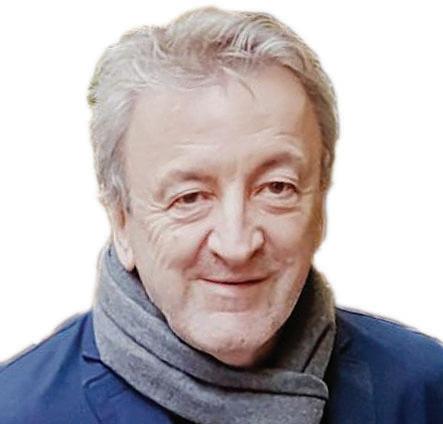

In short, the UK Government’s misguided economic policy, and that is being polite, has resulted in economic chaos and for the need for massive borrowing at home that has spread uncertainty across the major industrial world with hits on stock markets and rising interest rates to follow.
The UK Pound sterling collapsed, and interest rates are rising quickly, both leading
to further pressures on the cost of living with absolutely no gain to the economy. The UK is now in a state of potential economic collapse only salvageable by a U-turn, but national and international trust is gone. The IMF has sharply criticized the policy as have most economists.
The impact of these events will lead to a global recession with the UK and Germany already sliding in that direction. The only issue now is whether it will be a short one, “V” shaped with a strong recovery, or a long one “L” shaped with no recovery in sight, particularly as Russia is threatening a nuclear war.
Six months ago there was no container space available for shippers, today the excess supply is staring the industry in the face as demand is crumbling. Ports will begin to see declining volumes as well.
IAPH FOCUS: CLOSING THE GAPS
Against a background of port systems and supply chains under immense pressure during the onslaught of COVID-19, the International Association of Ports & Harbors (IAPH) has recently released a new report, Closing the Gaps, which highlights actions that should be considered in conjunction with the key themes of resilience, digitalisation and decarbonisation as a path to curing system inefficiencies and delivering a stronger and generally more efficient port system and supply chain.
The 80+pp report finds its origins in IAPH’s 2021 Conference and its conclusions represent the output of eight regional workshops held early in 2022, attended by diverse players in the supply chain right through from bankers and academics operating in support functions to front-line entities such as
shipping agencies and terminal operators. The report was prepared in collaboration with the World Bank and as it states in its foreword it is designed to act as an action plan via which key problem areas can be resolved and a more resilient supply chain overall brought into play.
The character of the Closing the Gaps report is that it is essentially big picture and big issue focused, albeit that its recommendations come out of the regional meetings that undoubtedly went into some detail from the standpoint of key industry participants. In this context, actions to “close the gap” are identified together with the strategic objective of working in partnership with the IMO, UN agencies, other industry bodies, port agencies and its own membership to bring about positive change.
Under the heading of Resilience,
the port identifies key challenges that emerged in the full-blooded Covid era: lack of adequate infrastructure, poor intermodal connectivity, the need to accelerate cargo shift from road to rail or waterway and so on. The solutions presented to these and other problems are comprehensive, stretching from improved transparency with data and the revision by ports of their land investment portfolios to accommodate greater partnership opportunities with the private sector through to the improved synchronisation of activities between industry players and a change of mindset to think more in a supply chain context.
In the area of digitalisation Closing the Gaps notes the challenge that some parties face in reaching the first stage of the digitalisation of ship-to-shore FAL requirements and to get onboard with port community
processes. Equally, there are issues around applying the same data standards and lack of cooperation. Solutions to these and other common problems are set out over four detailed pages.
The section of the report on decarbonisation follows a similar path – detailed identification of key problems and immediately following these discussion of workable solutions – regretfully there is not sufficient space to go into detail regarding this subject area.
The report, Closing the Gaps, is undoubtedly a well thought out and useful document in the context of both shaping policy and implementing practical measures. It is not an exaggeration to say it offers something to everyone involved in ports and logistics – in itself it goes a long way towards closing an long-standing information gap, realising another important goal.
For the latest news and analysis go to www.portstrategy.com NOVEMBER 2022 | 23
8 Did someone forget to read the basic rules of economics? Zombie politics appear to be the order of the day
CONGESTION: LESSONS LEARNT
Congestion has rained pain on port and supply chain operations but as Mike Mundy discusses it has also delivered some valuable lessons, including simple fixes, that can promote resilience and efficiency going forward

As of the beginning of October the maritime consultancy Sea Intelligence reported that 50 per cent of congestion had been resolved. As of November, it will doubtless be the case that the situation has further improved. The backdrop to this, though, the trade picture is by no means healthy –in October consultants Drewry lowered its demand outlook for 2022 to 1.5 per cent and to 1.9 per cent for 2023 on the back of heavily downgraded GDP predictions.
Without doubt the “feast” is over and much leaner times are in prospect.
There are still problems – lockdowns in China persist and industrial action are both ongoing causes of supply chain disruption - but in the main it seems fair to say the worst is over.
Indeed, another big indicator of this is that the “postmortem” has begun – what lessons have we learnt from COVID-19 and the resulting supply chain chaos and what needs to be addressed to make supply chains and port operations in particular more resilient?
A new report from IAPH entitled Closing the Gaps makes a very useful contribution in this respect with insight into its content provided in the Strategist column on p23.
Closing the Gaps, along with many other sources, rightly highlights the deficiencies in infrastructure provision that served to intensify the congestion problems. As Closing the Gaps puts it: “The congestion in key global port hubs and the reduced efficiency in hinterland connectivity for inbound and outbound cargo resulting in consumer and industrial supply shortages has exposed the lack of long-term investment in port infrastructure.”
Arguably, this was most notable on the US West Coast in the San Pedro Bay area where both major ports of Los Angeles and Long Beach were choked with monumental vessel queues waiting. For sure there were port capacity deficiencies but beyond this it was very apparent that the offtake infrastructure, rail and road, was a root cause of many problems. This is further underlined by the announcement at the beginning of July that the new California state fiscal year budget includes an unprecedented US$2.3 billion provision for port infrastructure improvements and upgrades, with US$1.2 billion of this set aside for projects that increase goods movement on rail and roads.
The inability of existing infrastructure to weather constant heavy utilisation or what some might define as moments of stress became very apparent in the congested Covid era in turn highlighting the need for more investment to be put in place the essential elements to confirm system resilience.
Clearly, this is an aspect when reviewing experience under Covid conditions that all involved government agencies should look at and, if necessary, make provision for.
DIGITALISATION
IAPH’s Closing the Gaps report focuses at some length on the benefits to be derived from digitalisation.
This report, which IAPH developed in conjunction with the World Bank, makes a number of interesting observations regarding digitalisation including:
5 “The incidence of a significant number of respondents yet to commence or reach the first stage in the implementation
For the latest news and analysis go to www.portstrategy.com
8 Container terminal operators identify relatively simple fixes that can play a part in keeping cargo moving
SUPPLY CHAIN OPERATIONS 24 | NOVEMBER 2022
Credit: HHLA
SUPPLY CHAIN OPERATIONS
of digitalisation of ship-shore FAL requirements and port community processes was confirmed…
5 “The overall absence in applying the same data standards, often within the same country between different ports is seen as a major obstacle to achieving improved port efficiency in a port call.
5 “The gap in governance and understanding on the definition and inclusion of stakeholders in a maritime single window system and port community system and their roles are an impediment to digitalisation, and
5 “The lack of cooperation between neighbouring and or competing ports makes data collaboration challenging.”
To solve these and other problems highlighted there is of course some requirement for investment but it is generally true to say that this requires a comparatively ‘light touch’ compared to the scale of investment required in conjunctionwith basic infrastructure.
The report makes good points when it identifies many problems in this arena as fixable through actions such as: greater collaboration between parties, establishing a realistic long-term digitalisation road-map and complementing this with a three stage plan which encompasses:
5 The optimisation of processes around trade to close the gaps between stakeholders.
5 The use of digitalisation elements to resolve specific supply chain and port issues – for example, the Internet of Things; Artificial Intelligence and 5G.
5 Digital transformation brought about by combining the preceding two elements. This, it is suggested, will, “provide the opportunity for ports to extend their activities and offer new solutions thereby improving their competitiveness.
Overall, however, what is interesting about the commentary on digitalisation is that it indicates that with understanding, organisation, standardisation and collaboration progressive benefits can be achieved with a relatively low level of investment.
Suggested actions in this area border upon relatively simple fixes – in itself an aspect that offers great potential to promote more resilience and efficiency, as is particularly noteworthy at the terminal operations level.
TERMINAL OPS: SIMPLE FIXES
Focusing on the specific area of container terminal operations it is very interesting indeed to obtain the feedback of diverse terminal operators pointing out relatively simple fixes that have been successfully implemented during the peak of the pandemic that provide a range of benefits including: maximising terminal resilience under stress conditions; raising efficiency levels and boosting capacity. Furthermore, the characterisation of these steps as “simple” basically means comparatively easy to implement and without big costs involved. Key examples are:
Capacity Initiatives
– Expanding the hours of terminal operation to match cargo volume flow
– Making use of bonded off-dock facilities/capacity to reposition containers for clearance
– Regulating truck flow through Vehicle Booking Systems
supported by disciplinary systems that maximise compliance – plus potential app usage.
– Encouraging optimising the truck capacity – e.g. carriage of 2 x 20ft and not just one whenever possible.
– Barges: encouraging consolidating different cargo loads on barges to reduce barge traffic overall
Administrative/Organisational
– Working with port management and other parties to maximise the uniformity of the working hours of warehouses and other cargo receiving parties with terminal operating hours
– Standardisation of data protocols/ensuring communications compatibility with interfacing customers and other parties – app for container tracking
– Implementation of robust cyber security measures
– Reducing inefficiencies caused by manual processes/ automating – for example gate operations
– Optimising compliance to safety to measures to avoid accidents and maintain efficient working
– Promotion of continuous improvement processes
– Fostering a collaborative approach with other parties along the supply chain
Human Resources
– Investing in human capital/training and development Bottom line, the message is that yes significant investment is required in certain areas – offtake infrastructure as noted earlier – but it is not the sole solution. Relatively simple fixes are available on diverse fronts to raise terminal performance with the ensuing benefits often feeding along the supply chain.
It has regularly been acknowledged in the past that the container terminal represents the major interface between transport modes. The importance of this role at a physical and online/communications level can be seen to have heightened during the pandemic with arguably a greater appreciation being fostered of the terminal’s role in the supply chain. This mind-set is to be welcomed as part of a collaborative effort to learn from recent events and build system efficiency overall on an ongoing basis.
8 The US state of California has allocated an unprecedented US$2.3 billion dollars for port infrastructure improvements but there are also simple fixes available

For the latest news and analysis go to www.portstrategy.com NOVEMBER 2022 | 25
Congestion has rained pain on port and supply chain operations but has also delivered some valuable lessons
‘‘
Credit: Port of Los Angeles
BELT AND ROAD – QUO VADIS?
China’s march into port investments around the globe is slowing. Andrew Penfold identifies the problems, fall-out and potential for others to step in
China’s overseas infrastructure investment programme – the ‘Belt and Road Initiative’ (BRI) – has been one of the major drivers of port investment since it was initiated in 2013. Various estimates place the commitments of the Chinese state to the BRI at up to USD1.5-2tn by 2021. The overall identified investments since 2013 are summarised in Figure 1. Given the role of the Chinese government it is not really possible to differentiate between BRI initiatives and more ‘commercial’ investments. Overall, the commitment is massive.
Today’s reality is, however, that the Chinese economy now looks much less impressive than it did as recently as two years ago, what does this mean for port investments? In addition, the attitude of many countries to inward Chinese investments is experiencing major change.

Within the total expenditure the primary focus has been on energy related projects, but the port sector has also been a major beneficiary of China’s largesse. To date, some 17 port projects have been reliant – to varying degrees – on Chinese financing to secure construction. In addition, the BRI has focused on major infrastructure investments that will support port developments such as rail links and economic development zones. These projects are summarised in Table 1.
The Belt and Road Initiative (BRI) has come in for additional severe criticism lately. AidData’s newly released report highlights a tranche of China’s overseas lending worth USD843bn with this including some USD385bn of ‘un- and under-reported debt’. This begs the question, can this be sustainable?
A CRISIS WAITING TO HAPPEN?
The massive expansion of the Chinese economy has permitted these huge overseas investments. Indeed, export volumes have held-up in the past year, with the problems basically domestically focused. The sheer level of funds flowing out from China has proved irresistible to many Developing World governments, but it hasn’t been plain sailing in most projects. Structural difficulties beset many of these investments.
Today, the situation in China is now looking much weaker and there is a real danger of a financial crisis based on a property Ponzi scheme and worsening political pressures –particularly sabre rattling over Taiwan – compounded by repeated unrealistic Covid responses. Furthermore, there are difficulties with a lack of transparency with regard to debt crossholdings. The opaque nature of these arrangements suggests the debt position could be much worse than admitted.
China was facing a much more uncertain economic outlook even ahead of high inflation and rising interest rates. There are mounting concerns of an impending crisis and it is difficult to see how the BRI can weather such difficulties should they worsen dramatically.
In the longer-term, China is under pressure from a declining and aging population and classic development difficulties as it tries to emerge from the ‘middle income trap’ that besets even much more open economies. How can China continue to fund BRI projects, when under these
pressures? How does this impact the BRI programme and –specifically – key port developments?
Already heavily indebted countries are struggling to meet loan repayments as many of the initiative’s high-profile projects have failed to yield commercial returns. If these projects are to mature and stand a chance of reaching genuine profitability, then China is on the hook for billions of dollars of rescue loans. The question is whether the Chinese economy will be able to make these commitments?
BRI – GOOD PROJECTS?
A brief look at the port projects that were at the centre of the Chinese funding initiatives confirm that only Piraeus and possibly elements of the purchase of Noatum Ports can be said to have been an unqualified success. In Piraeus, volumes have accelerated sharply with the port playing a central role in regional transshipment. Other projects such as Kumport and Haifa are in a much earlier stage of development and the position remains unclear, but the strategic initiative is apparent.
Elsewhere, the position has been much less positive. The focus of development has been on Asia and East Africa, with some investments aimed at securing raw material supply for China and others clearly focused on a more ‘strategic’ motivation. Some of these projects have been hawked to investors for a long time and have been found to be unbankable in straightforward commercial terms. The port of Gwadar in Pakistan is an example of this. The project was first brought forward for development in the late 1990s, as part of an initiative to boost Pakistan’s development and provide a gateway to the north. Although demand was identified it was clear that the scale of investment – both for the port and supporting hinterland links – together with political risk made the project unattractive. It is difficult to see how these concerns have changed, so investment here must be for other reasons.
It should also be noted that the attitude to Chinese
8 Hambantota port, Sri Lanka seen by many as a classic debt trap which ultimately provided China with a strategic Indian Ocean base
CHINA: PORT INVESTMENT 26 | NOVEMBER 2022 For the latest news and analysis go to www.portstrategy.com
investment has changed with, for example, Hamburg now unclear on whether to approve Cosco’s investment in terminal operator HHLA.
Similar concerns can be identified with regard to investments in port facilities in Djibouti and also in the supporting development zones. DPW is now suing China Merchants as a result of its role with the Government of Djibouti.
Where there is a clear economic rationale for development such as in the rail link between Djibouti and Ethiopia or the standard gauge rail link from Mombasa, project completion has proved problematic with local difficulties often coming into play as projects reach the 80-90 percent completion point. There are also ongoing concerns about utilisation levels and securing adequate returns on the investments undertaken
Far more problematic has been investment in Hambantota port in Sri Lanka. The economic rationale for this development was unclear from the outset given the scale of investment in Colombo. It has come as no surprise to analysts that the Sri Lankan government has been unable to service debts on this project and the decision to commute these debts into a long term – 99-year – lease on the port in 2017 seemed inevitable. The port provides the Chinese with a major new piece of infrastructure and a strategic foothold in the region and its potential to allow a Chinese naval presence in the Indian Ocean must have been a motivating factor.
It is interesting to note that the more recent BRI push into Latin America has met with more limited success. Only Cuba and some smaller Caribbean islands have taken advantage of these funds and there is already major pushback from the US and Japan with some proposed projects. Where there is a clear economic rationale, such as Cosco’s investments in Colon at the Caribbean end of the Panama Canal, investment has been on a more stable basis, with little questioning of motivation although one Panama project was cancelled after construction had begun following US pressures.
THE DEBT TRAP: WHO’S IN?
Much attention has been directed at the co-called ‘debt trap’ aspect of the BRI. This is the accusation that China uses Belt and Road as part of a manipulative global strategy, funding major infrastructure projects in developing nations with unsustainable loans, then using the debt to gain leverage over those governments.
Viewed from the perspective of as recently as 2019 this seemed like a clear concern. However, from the current viewpoint it looks much more complex. With governments unable to service loans – and the position is weakening rapidly at the global level as we head into recession and inflation bites – China is faced with difficult decisions. Does it pour further resources into these money pits in the hope of some strategic (not financial) return or do they cut their losses? Also, will the Chinese government actually have the resources to provide these investments given the mounting economic and political difficulties?

This could well be another manifestation of the risky nature of international lending with local interests often misusing funds as was seen in Africa and Latin America in the 1980s and 1990s. This overexuberance contributes to the boom-and-bust cycle. This time there could well be a significant political overlay.
Does this, in turn, mean that opportunities will exist for commercial investors to step in with funding for shares of these projects? A careful case-by-case assessment is required but the position now looks quite different than from the preCovid perspective. However, some of these ports have been completed and some are still under construction. In both cases sunk costs will not be recoverable. As such, there may be real opportunities for the canny (and courageous) investor.
Project
Port Investments
Location
Aktau Port Kazakhstan
Colombo South Harbour Sri Lanka Dawei Port Myanmar
Doraleh Multi-Purpose Port Djibouti Grand Faw Port Iraq Gwadar Port Pakistan Haifa Port Israel Hambantota Port Sri Lanka Kalifa Port Terminal 2 UAE Kuala Tanjung Port Indonesia Kumport Terminal Turkey
Kyaukpyu Deepsea Tanker Port Myanmar Noatum Ports Spain
Panama Colon Container Port Panama Port of Piraeus Greece Port St John’s expansion Antigua Santiago Container Terminal Cuba
Economic Investment Zones
Duqm Port Commercial Terminal Oman
Kyaukpyu Special Economic Zone Myanmar Port City Colombo Sri Lanka
Port-Related Rail Belgrade to Montenegro Bar Rail Montenegro Benguela Railway Angola
Djibouti to Ethiopia Railway Djibouti/Ethiopia Khartoum Port Sudan Railway Sudan
Lagos to Calabar Railway Nigeria Lagos to Kano Railway Nigeria Mombasa Nairobi Rail Link Kenya Saudi Landbridge Saudi Arabia
CHINA: PORT INVESTMENT For the latest news and analysis go to www.portstrategy.com NOVEMBER 2022 | 27
BRI: a tool for investment, a strategic device and now a growing source of problems? ‘‘
8 Figure 1: China’s Belt and Road total investments since 2013 (US$bn)
Source: Statista 2022
Source: Belt and Road Initiative
8 Table 1: Select Major Port and Port/Related BRI Investment Projects
MARITIME LOGISTICS SCRUTINISED
A draft report on Australia’s Maritime Logistics System has been released by the government’s Productivity Commission. Felicity Landon charts its key points
Higher productivity at Australia’s container ports is achievable and could save millions; lack of competition in some areas means consumers pay too much; workplace arrangements lower productivity: these are some of the conclusions of the draft report entitled “Lifting productivity at Australia’s container ports: between water, wharf and warehouse”.
The draft has been published by Australia’s Productivity Commission, the government’s independent research and advisory body on “a range of economic, social and environmental issues affecting the welfare of Australians”. The commission set a mid-October deadline for comments on the draft and will prepare a final report after further submissions, with public meetings planned for November.
The draft report has focused on containerised shipping, to which the ‘biggest problems overwhelmingly relate”, with most attention on maritime logistics chains incorporating the five largest container ports – Brisbane, Sydney (Botany), Melbourne, Adelaide and Fremantle.
The inquiry was sparked by the May 2021 World Bank report which ranked the efficiency of most of Australia’s container ports in the bottom 20 per cent of 351 international ports; six months later, a report from the Australian Competition and Consumer Commission (ACCC) described significant performance issues at the country’s container ports, and a report by Victoria’s Essential Services Commission raised issues of market power at the Port of Melbourne.
It should be mentioned at this juncture that the 2021 report referred to was not received favourably by many industry participants who view its assembly and findings as being inherently flawed. This said, it was still a trigger for the current report.
Normally in a situation where there is alleged poor productivity with terminal working a common finding is a resistance to automation. This is, however, not reflected in the report which actually goes some way towards suggesting the opposite is the case saying that the adoption of technology at Australia’s container ports is, “broadly in line with international practice”.
PERFORMANCE ANALYSIS
The report says that considerable variations in performance both within and across Australia’s container terminal operators point to potential productivity gains from more consistent, high, performance.
“Inefficiencies at Australia’s major container ports directly cost the Australian economy an estimated Aus$605m a year,” says the report. “Ports also have large indirect impacts on Australian businesses and consumers, so that any sustained disruption to imports or exports magnify these costs across the economy.”
One terminal operator, however, comments in this regard that any performance uplift achieved in the terminal area will not necessarily feed benefits along the supply chain. The report, it is pointed out, has not taken into account influential external factors away from the port – for example warehouse receival and delivery times are only during Monday to Friday and just from 07:00 to 16:00, which leads to bottlenecks for
transport generally as all parties are congesting the roads during this period to meet the restrictive opening hours of the warehouses.
The major container ports rank poorly in international work that looks at ship turnaround times, it notes. “Slower turnaround times in Australia mainly reflect the use of fewer cranes to handle containers.” However, it adds: “Using more cranes would raise costs with unclear effects on efficiency. Faster turnaround times are good, but not at any cost.”
The draft report also claims that lack of competition in some parts of the maritime logistic system means consumers pay too much. “Transport operators have no choice about which terminal they use when picking up or dropping off a container, so must pay whatever price a terminal operator sets. Recent rapid increases in terminal access charges (TACs) have flowed through to cargo owners (and consumers).”
The theory about lack of choice is, however, not accepted by the terminal sector whose response is, firstly shipping Lines do have a choice as they bid for the work from the consignee and shippers so they are aware of the costs and they directly pass these back to their customers. Secondly, the consignee and shipper also have control over which terminal their containers are processed through as the services they are loading on are already contracted to a particular stevedore in the port. This generally doesn’t change from voyage to voyage and if the consignee or shipper is unhappy with the terminal’s performance, they can change services (as generally most shipping lines have several services calling different terminals) or shipping lines. Bottom line, there is no basis to the argument that the customer (consignee and shipper) can’t decide on where their containers are handled.
The report also highlights the situation where transport operators and cargo owners are paying fees to shipping lines for the late return of containers even where the delay is because the yards for empty containers are full. “The exemption for shipping contracts, which means that these fees fall outside the scope of the Australian consumer law, should be removed,” says the report.
For
 8 The report addresses the need for better data in order to improve port performance
8 The report addresses the need for better data in order to improve port performance
AUSTRALIA: SUPPLY CHAIN ANALYSIS 28 | NOVEMBER 2022
the latest news and analysis go to www.portstrategy.com
AUSTRALIA:
CHAIN
WORKPLACE AND INFRASTRUCTURE
Next, the report discusses workplace arrangements lowering productivity, and says that incremental changes to the Fair Work Act are needed. More effective remedies are needed to limit unreasonably protracted bargaining and industrial action, it says. Additionally: “Limits should be placed on clauses in container terminal operators’ enterprise agreements that are highly restrictive and constrain the ways that workers and equipment can be deployed.”
Infrastructure needs in the maritime logistics system are being addressed, the report notes. Container port operators and others in the system are investing to accommodate bigger ships and there is no need for government intervention to encourage the use of such ships. Plans are in place to increase the share of freight moving to and from most major container ports by rail over the coming decades but any further government investment needs clear cost-benefit analysis, it says.
This is something of a broad-brush statement and it is perhaps pertinent to add that challenges can be seen to be emerging relating to accommodating larger size vessels. Massive new tonnage is about to be unleashed into the container sector generally and as result the cascading of larger vessels into Australian container trades is already underway but can be expected to accelerate. The terminal sector sees this and certain steps have been taken to accommodate it at a terminal level but the task of ensuring available waterside access for these larger vessels lies fairly and squarely with government.
The report also takes a look at concerns about domestic shipping capacity and training, and says these may be better resolved by means other than a strategic fleet. “Capacity could be acquired as needed from the international market without the costs involved in supporting a national strategic fleet,” it says. “Australian-flagged vessels are not a prerequisite to meeting maritime skill requirements. Cadetships and skilled migration appear to be working well in meeting needs for blue-water experience.”
DATA GAPS
The report addresses the need for better data in order to improve port performance. “A comprehensive framework for
measuring port performance would include data on the time taken to move containers through each of the steps involved in marine-side, quayside and landside operations. Comparison of these time-based metrics across ports would then reveal where operations in a port are relatively inefficient. Other performance measures could then be used to understand why these relative inefficiencies exist.”
For example, the report says, analysis of the rates at which cranes move containers can shed light on quayside operation times.
“Current Australian data collections do not support comprehensive analysis of this type. Data are missing for a number of areas of port performance, including, for example, labour inputs, cargo operation times and container dwell times.”
However, the report appears to backtrack slightly by saying: “While performance information could be improved by linking existing data collections and, potentially, augmenting them, collecting, cleaning and maintaining data is not costless. Richer data would support richer insights into port performance, but it is unclear if the associated benefits would outweigh the potential costs inherent in extending existing collections. The commission is seeking feedback on this question.”
The report says available data does suggest that productivity has risen over the longer term, but still the country’s major container ports tend to be ‘considerably slower’ than the average international port in loading and unloading ships. “If all five of Australia’s major container ports achieved turnaround times in line with the global average, and passed the resulting cost savings through, Australia’s importers and exporters combined could save an estimated $605m a year. Although these estimated direct benefits are small relative to the size of the entire Australian economy, they are significant.”
The Melbourne View: We will be engaging
The Port of Melbourne has welcomed the release of the Productivity Commission’s draft report. “We support an industry-wide inquiry into optimising productivity and efficiency in the maritime supply chain,” Saul Cannon, CEO, told Port Strategy
“We’ll be further engaging with the Commission to ensure a robust evidence base from the efficiency and productivity debate and developing a shared focus on the infrastructure requirements to support our economy and evolving industry needs.”
Port of Melbourne is considering in detail the specific findings and recommendations of the draft report and will respond accordingly in its submission to the final report, he added.
“We have great respect for the regulatory framework that the Victorian Government
put in place at the time of the port lease in 2016 and we strongly believe the framework is working as intended,” says Cannon.
“Infrastructure investment inside the port gate is, of course, critical – we have an anticipated $2bn 10+ year plan to meet the capacity needs of the port. That’s on top of the more than $400m we’ve already invested over the past almost six years.”
Port of Melbourne has a 50-year lease from the Victorian Government to manage and enhance operations at the port: “Port of Melbourne operates the port within a context of stringent statutory, regulatory and contractual commitments,” he notes.
A spokesperson added: “Port of Melbourne is the only Australian port, and only part of the container freight supply chain, that is price regulated. The regulated
regime at the Port of Melbourne is working as intended. Since privatisation, Port of Melbourne has invested over $400 million in infrastructure and port prices have been maintained each year in line with CPI consistent with the Tariff Adjustment Limit.”
Port of Melbourne has a 30-year Port Development Strategy that: “responds to Victoria’s future trade needs and outlines investment in 10 major infrastructure projects”.
Cannon concludes: “We are committed to solidifying our position as Australia’s premier port, being a destination of choice for the global supply chain, and the launching pad to the global stage for our exporters. It’s about ensuring that we have the right infrastructure in the right place at the right time to deliver for Victoria.”
SUPPLY
ANALYSIS For the latest news and analysis go to www.portstrategy.com NOVEMBER 2022 | 29
The draft report focuses on containerised shipping, to which the ‘biggest problems overwhelmingly relate’
‘‘
SHORT-SEA SHIPPING AND PORTS
SIGNS OF AN UPLIFT
Steve Cameron sees positive indicators for short-sea shipping and UK small ports. Funding, autonomous vessel plans and offshore wind are all playing their part
Today, short sea shipping accounts for about 40 percent of all goods moved across the globe. It plays a significant role in serving intra-European trade as well as trade with and between the states surrounding the Baltic, Black and the Mediterranean seas.
Over the past few years, the interest in short sea shipping has increased, especially in Europe. Shipping companies realise the benefits of short sea shipping, and the EU has a strategic interest in ensuring the continuous development of short sea shipping and shifting the load from the road to the more sustainable option of maritime transport.
The development of the 40ft & 45ft pallet wide high cube containers, by organisations such as Andrew Weir Shipping, (part of CMA-CGM since 2003) provide a cubic capacity close to that provided by curtain sided-trailers and enable ship operators to successfully compete with road transport on pricing and transit times, moving cargo from the Iberian Peninsula via multimodal connected services of trains and ships to Northern Europe. Maersk, in a similar vein, claims its new Spain-UK rail service can not only reduce exporter emissions by 90 per cent but can also help tackle Europe’s worsening driver and congestion crises as well as offer more than 90 per cent less CO2 emissions than a truck.
Moving goods from road to short sea has a positive impact on road congestion, road safety, and noise levels. Fewer heavy vehicles on the roads contributes to smoother traffic flows, safer driving, and trucks staying on schedule. However, none of this would be possible without the contribution of the complex network of ports serving short sea shipping, many of them significantly less visible than the well-known major ports serving global trade.
As with many other countries, the UK’s extensive coastline coupled with inland waterways, provides an extensive array
of ports, including the smaller harbours, that provide a network around the UK, but where their contribution to reducing truck miles goes largely unnoticed.

UK EXPERIENCE
Research by H R Wallingford, highlights that: “they provide a much more carbon-efficient way to transport freight compared to other transport modes, where the additional carbon advantages of coastal shipping will also be further enhanced by the international air emission and engine efficiency requirements being implemented via the IMO.” It also notes that: “within the shipping domain, smaller ports serving the coastal shipping market are in a strong position to gain from the adoption of autonomous or semiautonomous coastal shipping and feeder traffic. This is mainly because they are less exposed to the legal and insurance complexities of crossing international jurisdictions. Ship semi-autonomy has the potential to deliver further carbon savings by allowing for better use of space in ship design and efficient use of fuel.”
Despite these positive observations, the amount of freight moved by ships around the UK’s coasts has dropped significantly. Further, this historic decline in coastal shipping is matched by an uptake in the share of the freight market taken by road transport. The reasons are complex but are partly due to economic development in the UK moving the freight commodity mix away from bulk products. This has been reinforced by the historic differential in national infrastructure investment in the UK, which has focused on road and rail transport with less direct public investment in port infrastructure beyond road and rail connectivity.
Ports operate on tight margins, and capital investment in the maritime space is costly. To a large degree, ports in the
Shoreham port, on the UK’s south coast, is a busy handler of diverse cargoes and has just added to its agenda the development of a green energy hub
30 | NOVEMBER 2022 For the latest news and analysis go to www.portstrategy.com
Credit: British ports association
UK operate without public sector support. So major public sector investment directly to support coastal shipping would therefore seem unlikely. Nevertheless, policy support is emerging and the recently announced UK Governmentfunded CMDC programme of research and development in ‘clean maritime’ plus UK policy favouring autonomous shipping innovation are encouraging developments.
Such initiatives promise to facilitate cost efficiencies that will increase the commercial attractiveness of coastal shipping. Allied to this are positive pressures from the private sector, including major retailers who are seeking to reduce the carbon footprint of their respective supply chains.
OFFSHORE WIND CATALYST
Another major catalyst behind changes in coastal shipping is the offshore wind sector. The UK is a large player in the sector, with a current (2021) installed base of just over 10 GW with plans laid to increase offshore wind energy generation to at least 40 GW by 2030. The transfer of components and crew for the construction and operation of these facilities do not in themselves contribute to coastal freight shipping but they are helping smaller ports diversify from traditional bulk cargoes such as coal and steel and are attracting local

SHORT-SEA SHIPPING AND PORTS
production start-ups for wind farm components and HVDC cables for the arrays connecting wind farms.
Richard Ballentyne of the British Ports Association explains that whilst big ports provide focal points for the main UK national logistics gateways, stimulating investment, jobs and trade, there are 1700 ports and port facilities in the UK, where many smaller ports do exactly the same on a regional basis. This, he underlines, brings port facilities closer to the source or end delivery of product, that sustains local business which, in turn, creates efficiencies that keep costs down and provides industry with a number of choices of smaller ports (and supply chains) rather than just one big one.
Ballentyne quotes examples of coastal shipping, “taking a huge numbers of truck miles off the road. Shoreham with its local deliveries of steel, timber and aggregates. Montrose with its timber links and Troon providing trade with Mull of Kintyre.
They do face challenges, however, and notably keeping pace with bigger ports who can pay staff more and at a company level experience shows sourcing investment for expansion can be problematic.
Smaller ports also face the challenges of scale, notes Ballentyne, “It can be difficult to get the economic benefits, with smaller throughputs while staff often have to be a “jack of all trades.” On the the other hand, he suggests, this variety can be an attraction to employees, especially where it is possible to work through the ranks locally, to become the CEO.” The result is long term relationships with stakeholders and the community, that enable a more powerful and positive relationship. Such factors, he concludes, are surely the essential foundations for the continued success of the UK’s essential but less visible smaller ports.
8 The multipurpose offshore vessel Skandi Hera working in the Port of Montrose, Scotland
For the latest news and analysis go to www.portstrategy.com NOVEMBER 2022 | 31
Environmental consciousness is playing to the strengths of short-sea shipping and small ports
‘‘
THE PILLARS OF HERCULES
The Straits of Gibraltar major ports of Algeciras and Tanger Med sit at the heart of Western Mediterranean transshipment activity. AJ Keyes looks at the influential liner strategies driving their evolution
Credit: www.dataand.com
The Straits of Gibraltar are spanned by the mythical Pillars of Hercules, in reference to the Greek mythical heroHercules, who smashed through Mount Atlas to create the Straits. This may be a myth but the Straits of Gibraltar still represent the closest maritime link between the African and European continents at just 13km at the narrowest point. It is almost possible for the two major container ports on these two different continents (just 30 nautical miles apart) of Algeciras, Spain, and Tanger-Med, Morocco, to see which ships are working in each other’s port.
From a geographical standpoint, access to the important trade areas along the Mediterranean Sea and interior European and Asian nations is through the Straits and the West Mediterranean port zone comprises an integral part of the wider region, as Figure 1 identifies.
Container shipping service networks have become increasingly complex over time. Inter-regional services typically operate on a multi-port rotation, providing direct connectivity between numbers of key ports, often in different markets.
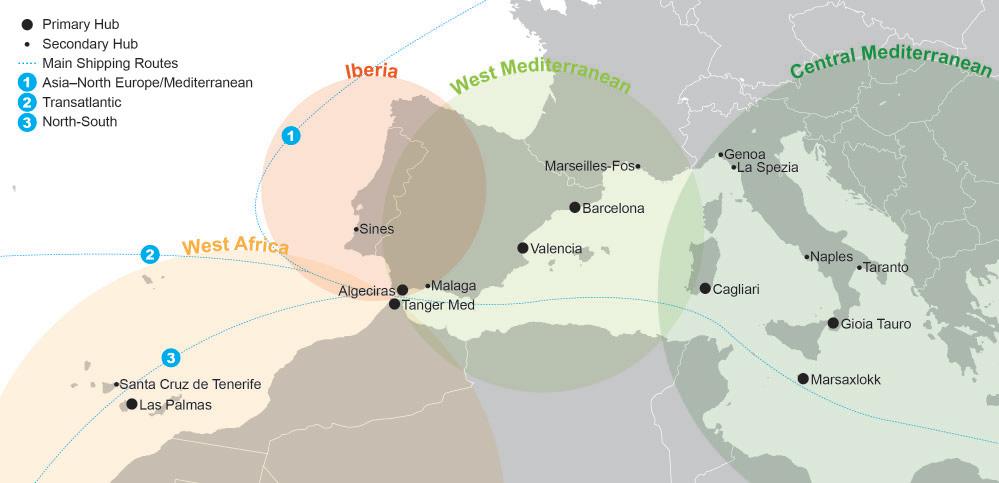
While the introduction of larger vessels has enabled carriers to realise significant cost savings in terms of vessel operating costs, the need to consolidate cargo onto these bigger ships has led to increased demand for transshipment services at strategically located ports throughout the entire Mediterranean. There are basically two types of transshipment activity undertaken in the region, namely:
5 Hub & spoke transshipment which allows ocean carriers to link a wide range of ports into a main service network, but also enables smaller feeder services to provide short/ shuttle-style links between regional “hub” ports and smaller “spoke” ports.
5 Relay transshipment is where a shipping line transfers containers between discrete deepsea, mainline services.
The central and eastern Mediterranean hub ports are focused on the hub and spoke model, whilst the location of the west Med hubs also allows the relay of Asia-Europe and African deepsea cargoes.
Transshipment traffic is a notoriously flexible (or ‘footloose’) cargo because it is theoretically able to move between different regional ports within the same area. As such, it is often highly price sensitive and is not considered captive in the same way as a gateway container market where port demand, for example, is driven by the import demand relating to consuming population centres, and on the export side typically, by proximity to production hubs.
TRANSITING THE STRAITS
To put the importance of the Straits of Gibraltar into perspective, the Gibraltar Port Authority states that approximately 60,000 vessels transit the straits per annum. In terms of container activity, specialist information provider, Data& confirms that container ships represent around 20 per cent of all ships passing through the Gibraltar Straits, so there are clearly a high number of potential callers for the two regional ports, one located on either continent.
It is this key location that makes ports in the Gibraltar Straits region unique. So, how have liner strategies changed and what does it mean for regional ports? Well, fundamentally, the role of these ports remains constant, but the make-up of the protagonists involved has seen considerable change.
The most noticeable development has been the increase in ship sizes. For example, according to Data&, the largest vessel on the Asia-Europe trades at the end of 2010 was around 9000TEU, whereas now the ships are approaching 24,000TEU, an increase of 267 per cent or a consistent 8.5 per cent per annum over the 12-year period. Moreover, with the ship cascading process continuing, there has been an increase in ships on other trade lanes too calling to ports both within the region and in related deepsea markets.
Increase in ship sizes is not surprising, as this remains an ongoing and continuous trend over the past two decades. Yet looking at the services calling to the West Mediterranean region, and primarily Algeciras and Tanger-Med, the higher number of services and considerable increase in TEU slot
8 Figure 1: At its most narrow point, the continents of Europe and Africa are just 13km apart, with Gibraltar Straits ports at the epicentre of several key trades
For the latest news and analysis go to www.portstrategy.com
WEST MEDITERRANEAN TRANSSHIPMENT 32 | NOVEMBER 2022
WEST MEDITERRANEAN
Operator/GroupingServiceNo of shipsLargest ShipCapacity (Week)Route
Maersk Line AE6/TP61410,1509,990Asia-Med
Maersk Line AE71014,00013,209Asia-N Eur
Maersk Line AE1/AE10218,4668,197Asia-N Eur
Maersk Line AE987,2004,700Asia-N Eur
CKYH grouping NE1910,0629,821Asia-N Eur CKYH grouping NE596,6555,885Asia-N Eur
UASC AEC2106,9666,947Asia-N Eur
CMA CGM FAL11111,38810,926Asia-N Eur-Med
CMA CGM PEX3115,0785,004Asia-US Gulf-USEC-Med
CMA CGM EPIC84,3674,280N Eur-ME-Med
Maersk Line ME176,8026,726N-Eur-ME-ISC
New World Alliance JEX106,7246,613Asia-N Eur-Med CKYH grouping MD386,0394,997Asia-Med
Maersk Line/CMA CGM West Med/ Amerigo Exp.64,3673,030Asia-Med
Joint
Service MCA/MC152,4102,149Med-Canada
UASC/Hanjin MINA/IMU94,2533,912USEC-Med-ISC Maersk Line MECL2/SZX2105,0854,956USEC-USG-Med-ISC Hapag-Lloyd/Hamburg Sud IOS74,2984,276ISC-Med-N Eur
space, whether measured by service string or in weekly vessel capacity, is at the centre of development.
THE NEW “NORMALS”
For this analysis, two specific periods have been selected. First, end of Q3 2010, which reflects the period after the Global Financial Crisis (GFC) of 2008-2009 and when the shipping industry had settled down into the new “normal” post GFC. Then, end of Q3 2022 is considered, again because it is after a tumultuous global event (COVID-19 pandemic) and the rebound has occurred, with a new state of “normal” beginning to appear. Table 1 and Table 2 offer a summary of the mainline services calling to Algeciras and Tanger Med.
There are a number of interesting conclusions that can be drawn. In Q4 2010, the total weekly capacity of the sample outlined was just over 115,600TEU, of which Maersk Line and CMA CGM were the major providers of capacity, with different services and several ships over 10,000TEU, although Maersk Line’s AE7 string offered the largest vessel, at 14,000TEU.
The CKYH grouping (Cosco, K Line, Yangming and the now defunct Hanjin Shipping) were also regular callers to Algeciras, where Hanjin Shipping had established a terminal facility.
There was limited relay transshipment ongoing, although it is known that hub & spoke activity was a common feature in serving markets in West Africa and the Canary Islands. Maersk Line was calling here with ships of up to 13,209TEU of weekly capacity and very little of this would have been for any Spanish hinterlands due to the very high transshipment incidence in Algeciras.
However, jump forward to the present day and the position sees much bigger ships, more operating alliances and complex liner strategies in play. Based on the sample of services in Table 2, the weekly “deepsea” capacity on offer is an estimated 298,300 TEU and a very strong position is held by the different shipping alliances, with each offering a number of weekly services.
‘‘
It is, however, not just about large ships calling in the Straits of Gibraltar, but also the differences in strategies of the ocean carriers
The sizes of vessels deployed has also increased considerably, with some of the largest ships in service now calling. For example, THE Alliance has vessels up to 23,964 TEU from its FE4 service calling at Tanger Med on the westbound leg and Algeciras on the eastbound routing. Likewise, the OCEAN Alliance has ships of 23,112 TEU on its NEU4 string using Algeciras westbound and the 2M Alliance calling at Algeciras on its AE10/Silk option (largest ship of 20,568 TEU) and its AE55/Griffin (largest ship of 23,782 TEU).
DEFINED STRATEGIES
It is, however, not just about large ships calling in the Straits of Gibraltar, but also the differences in strategies of the ocean carriers. For example, CMA CGM has a defined strategy here. The operator markets its EURAF4 and EURAF5 strings as relay services. Both of these options link the company’s TangerMed terminal with West Africa, while offering potential for much wider geographic coverage via such services that sail to/from Asia (NEU4), the East Coast of North America (EPIC) or the Caribbean/West Coast of South America (Medcaribe).
Maersk Line is another proponent of the relay transshipment concept. As seen in Table 2, there are services from this ocean carrier that inter-connect between EastWest and North-South services, or some combination of both. For example, the AE1 and AE7 services link Asia and North Europe, using some of the largest ships in service while offering an eastbound stop in Tanger Med to potentially connect with, for example, its ECUMED offering that links Tanger Med with such notable ports as New York/New
8 Table 1: Container Liner Services at Ports in Straits of Gibraltar, End of Q3 2010
TRANSSHIPMENT For the latest news and analysis go to www.portstrategy.com NOVEMBER 2022 | 33
Mediterranean Canada
Note: Excludes extra loaders and hub & spoke feeders / intra-Mediterranean services Source: Published liner schedules, end of Q3 2010
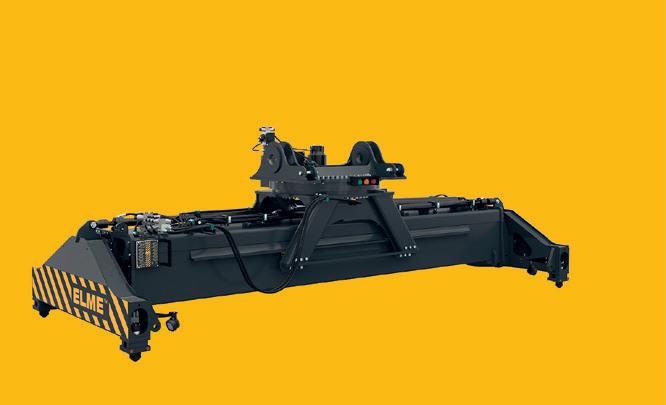
... .... ....... .......... ....................... ......................... ............................... .................................................................................................... .................................................................................................... .................................................................................................... .................................................................................................... .................................................................................................... .................................................................................................... .................................................................................................... .................................................................................................... .................................................................................................... .................................................................................................... .................................................................................................... .................................................................................................... .................................................................................................... .................................................................................................... .................................................................................................... .................................................................................................... .................................................................................................... .................................................................................................... .................................................................................................... .................................................................................................... .................................................................................................... .................................................................................................... .................................................................................................... .................................................................................................... .................................................................................................... .................................................................................................... .................................................................................................... .................................................................................................... .................................................................................................... .................................................................................................... .................................................................................................... .................................................................................................... .................................................................................................... .................................................................................................... .................................................................................................... .................................................................................................... .................................................................................................... .................................................................................................... .................................................................................................... .................................................................................................... .................................................................................................... .................................................................................................... .................................................................................................... .................................................................................................... .................................................................................................... .................................................................................................... .................................................................................................... .................................................................................................... .................................................................................................... .................................................................................................... .................................................................................................... .................................................................................................... .................................................................................................... .................................................................................................... .................................................................................................... .................................................................................................... .................................................................................................... .................................................................................................... .................................................................................................... .................................................................................................... .................................................................................................... .................................................................................................... .................................................................................................... .................................................................................................... .................................................................................................... .................................................................................................... .................................................................................................... .................................................................................................... .................................................................................................... .................................................................................................... .................................................................................................... .................................................................................................... .................................................................................................... .................................................................................................... .................................................................................................... .................................................................................................... .................................................................................................... .................................................................................................... .................................................................................................... .................................................................................................... .................................................................................................... .................................................................................................... .................................................................................................... .................................................................................................... .................................................................................................... .................................................................................................... .................................................................................................... .................................................................................................... .................................................................................................... .................................................................................................... .................................................................................................... .................................................................................................... .................................................................................................... .................................................................................................... .................................................................................................... .................................................................................................... .................................................................................................... .................................................................................................... .................................................................................................... .................................................................................................... .................................................................................................... .................................................................................................... .................................................................................................... .................................................................................................... .................................................................................................... .................................................................................................... .................................................................................................... .................................................................................................... .................................................................................................... .................................................................................................... .................................................................................................... .................................................................................................... .................................................................................................... .................................................................................................... .................................................................................................... .................................................................................................... .................................................................................................... .................................................................................................... .................................................................................................... .................................................................................................... .................................................................................................... .................................................................................................... .................................................................................................... .................................................................................................... .................................................................................................... .................................................................................................... .................................................................................................... .................................................................................................... .................................................................................................... .................................................................................................... .................................................................................................... .................................................................................................... .................................................................................................... .................................................................................................... .................................................................................................... .................................................................................................... .................................................................................................... .................................................................................................... .................................................................................................... .................................................................................................... +=25,000spreaders www.elme.com /25000 spreaders Read the full story at 2022 817 INN was our number 25,000 spreader 1974 1980 100 spreaders 1990 1 000 spreaders 2007 10,000 spreaders
WEST MEDITERRANEAN TRANSSHIPMENT
Operator/Grouping (Ship providers)ServiceNo of shipsLargest ShipCapacity (Week)Route
OCEAN (CMA CGM)
NEU4 (FAL 1/AEU2)1323,11222,209Asia-N Eur-Med
THE Alliance (ONE/YML/HMM) FE41223,96423,068Asia-N Eur-Med
2M Alliance (Maersk Line/MSC) TA6/MEDGULF89,2007,753Med-USEC-USG
2M Alliance (Maersk Line) AE10/Silk1320,56818,682Asia-N Eur-Med
2M Alliance (Maersk Line / MSC) AE55/Griffin1123,78215,160Asia-N Eur-Med
2M Alliance (Maersk Line) ME2710,60010,047Med-ME
2M Alliance (Maersk Line) ME799,0346,712ISC-Med-N Eur
2M Alliance (Maersk Line) MECL1117,2506,539ISC-Med-USEC
Hapag-Lloyd Med-Can Exp/JMCSA74,1213,181Med-Canada
CMA CGM/Cosco/OOCL
EPIC/EPI3/IP1810,9268,517ISC-Med-USEC CMA CGM/Maruisa EURAF4/MAS63,6352,812Med-W Afr CMA CGM/Marfret Medcaribe86,9276,260Med-Carib-WCSA
OCEAN/THE Alliance (OOCL/H-Lloyd/CMA CGM) ATM1/AL6/Amerigo68,7508,544Med-USEC
CMA CGM/Maersk Line Sirius / Bossa Nova610,0349,163Med-ECSA
2M Alliance (Maersk Line / MSC) TA5/MED-USEC79,5808,521Med-USEC Hapag-Lloyd/ONE (Hapag-Lloyd/ONE) IOS89,0408,786N Eur-Med-ME-ISC
2M Alliance (Maersk Line / MSC) AE6/Lion1123,78215,825Asia-N Eur-Med THE Alliance (ONE/HMM/Hapag Lloyd) FE21223,96418,657Asia-N Eur-Med SAECS (Maersk Line/ONE/H-Lloyd) SAECS97,1546,912N Eur-Med-S Afr Maersk Line WAF644,6224,527Med-W Afr
CMA CGM/Cosco (CMA CGM/Cosco) Med-Black Sea-Mor54,3633,415Med-Black Sea MSC/Hapag-Lloyd NWC/ECX99,4118,314N Eur-ECSA
Maersk Line ECUMED94,5004,500Med-USEC-WCSA
2M Alliance (Maersk Line / MSC) AE1/Shogun1119,46212,933Asia-N Eur-Med
2M Alliance (Maersk Line / MSC)
AE7/Condor1220,56818,075Asia-Med-N Eur-Med-ME CMA CGM EURAF165,4664,489N Eur-W Afr CMA CGM FEMEX55,0903,104N Eur-Med
OCEAN (CMA CGM) NEU5 (AEU6/FAL3)1217,85917,494Asia-N Eur-Med Maersk Line Samba810,58910,589N Eur-ECSA
CMA CGM/Hapag-Lloyd EURAF5/WWA74,6163,512N Eur-W Afr
services
Jersey, Manzanillo and Balboa at each side of the Panama Canal and onto Guayaquil and Puerto Bolivar.
The one noticeable absentee from this assessment thus far is MSC. In conjunction with 2M Alliance partner, Maersk Line, there are a lot of MSC services being sold in the region according to published schedules.
However, if the services in Table 2 are studied more closely, then it can be seen that there is more Maersk Line tonnage being provided in the majority of the jointly-operated services overall.
This position is not necessarily too surprising because it fits in with the Danish carrier’s use of Algeciras and Tanger Med in the Straits of Gibraltar, whereas MSC continues to utilise other regional ports, most notably Valencia in Spain (which is also the ocean carrier’s primary port of call for import-export gateway cargo into Spain) and the Canary Islands off of the West Coast of Africa.
Moving forward, MSC could look to utilise the expanding Sines facility in Portugal too, where its investment arm, Terminal Investment Ltd (TiL) retains a stake with PSA International.
The role of these major ports in the West Mediterranean, especially those located in the Straits of Gibraltar, is considered in more detail on p38, Mix & Match Strategy.
In summary, the regional hubs have seen a maturing of their crucial role, most notably the facilities located in the Straits of Gibraltar. Currently, there is a combination of the largest vessels on the Asia-Europe trades and other deepsea services calling and undertaking relay transshipment in more depth than was seen at any time in the past.
Consequently, this arrangement represents a unique global position and has directly driven the rate of port demand growth way ahead of the broader average. On this basis, the need for further expansion is required and is expected to occur, both in terms of maximising efficiencies at current sites and expanding where possible.
8 Table 2: Container Liner Services at Ports in Straits of Gibraltar, End of Q3 2022
For the latest news and analysis go to www.portstrategy.com NOVEMBER 2022 | 35
Note: Excludes extra loaders and hub & spoke feeders / intra-Mediterranean
Source: Alphaliner
MIX AND MATCH STRATEGY
AJ Keyes charts the development approaches taken in Algeciras and Tanger-Med, the rationale behind them, and the potential for liner operators to mix and match between the two facilities
Algeciras has long been one of the principal hubs serving the West Mediterranean region offering the ability to transship between East-West and North-South shipping routes, but its peripheral location in Spain means that despite numerous initiatives it is not well-suited to handle import-export gateway cargo, which is instead mainly moved via the likes of Valencia and Barcelona.
There are substantial container-handling facilities at Algeciras, as Table 1 highlights. The APM Terminals operation covers 67ha, offers 2000m of quay and 19 ship-to-shore gantry cranes, of which eight are Super Post-Panamax for Ultra Large Container Vessels (ULCVs). With 59 RTGs also available, the operator claims an annual capacity of 4.3 million TEU and also acknowledges it consistently operates on the basis of 93 per cent of throughput is transshipment and just seven per cent represents import-export gateway cargo.
By comparison, the other container operation has had a chequered past. Originally conceived and developed by former South Korean global container liner operator, Hanjin Shipping, the 30ha facility offers two quays on the Isla Verde Exterior Quay, of 650m to the East and 550m to the North, with draughts of 18.5m and 17.5m, respectively.
With eight gantry cranes, this facility was developed with automation in mind, now offering 32 ASC (Automatic Stacking Cranes) and 22 Shuttle Carriers in the yard.
The previous demise of Hanjin Shipping meant a change of ownership and since March 2021 it has been owned by a grouping consisting of South Korean liner operator, Hyundai Merchant Marine (with a 50 per cent +1 share stake) and Isla Verde Algeciras Terminal Holding, SL (with a 50 per cent -1 share stake). The interesting point to note here is that the latter company is 51 per cent owned by CMA Terminals Espagne (so, effectively, CMA CGM Group) and the remaining 49 per cent by financial investor, DIF Capital Partners Group.
With additional land not an option, investment in equipment continues across both terminals. Earlier in 2022, APM Terminals introduced 12 new RTGs from Konecranes and TTI Algeciras implemented a crane modification project that will see five of its eight Super Post Panamax units raised from 43m to 52m, to facilitate handling of up to twelve boxes high on deck, plus a 3m boom extension to enable reaching beyond row 24 onboard vessels. The initiative is slated for completion by the end of 2022.

Both terminals are integral to their shipping line owners’
network strategies, with the priority being to increase coverage with minimum visibility to cargo owners.
REAPING BENEFITS OF LINER PARTNERSHIPS
The newer Tanger Med container complex is located 35 nautical miles east of the city of Tangiers and, very importantly, offers almost no deviation for container ships from the main line East-West trading route linking North Europe with Asia. The initial rationale for development was the same as that for Algeciras but with a potentially lower (labour) cost base.
It now offers four terminals, as Figure 2 shows, with a combined handling capacity of nine million TEU per annum, which means that overall port utilisation is at 80 per cent. Based on 2021 seeing year-on-year growth over 2020 of 24 per cent, according to the port, then this figure can be expected to increase.
Indeed, the Port Authority states that its recent strong growth was due to the “optimisation of Tanger Med 2 Port, after the commissioning of Container Terminal 4 (TC4) in 2019 and Container Terminal 3 (TC3) in 2021” and taking its overall capacity to the stated nine million TEU per annum.
There is no doubt that the development of Tanger Med has been substantial over the past decade, and this is due in no small part to the partners in the various facilities and specifically the shipping line entities involved. There are now two terminals operated by Maersk affiliate APM Terminals, which accommodate Maersk Line (and 2M Alliance) vessels – TC1 and TC4. CMA CGM and MSC are shareholders in TC2, and Hapag Lloyd is a partner in TC3. These are all liner interests that help guarantee container volumes to this growing port facility.
APM Terminals is continuing to invest in Tanger-Med, with a further order for shuttle carriers from Kalmar. The latest 23 units, which are manually driven, semi-automated hybrid shuttle units, follow a previous batch of 42 units delivered in 2019, in support of the TC4 expansion project
MIX AND MATCH STRATEGY
In Summer 2022, Maersk Line dropped Algeciras due to ‘challenges’ on its SAECS service, with Tanger Med called instead. “Given the challenges being faced in Algeciras, and to continue providing the best service to our customers, we will be making some deployment changes to our SAECS service,” the line explained in a statement at the time. It
8 Maersk Line and CMA CGM like to mix and match port use in the West Mediterranean, between Algeciras and Tanger Med, but the future regional strategy of MSC is not yet clear
WEST MEDITERRANEAN TRANSSHIPMENT 36 | NOVEMBER 2022 For the latest news and analysis go to www.portstrategy.com
added that the deployment changes will create a more competitive transit time with better connections into Northern Europe and the Mediterranean region, although the southbound call at Algeciras remains.
This demonstrates a clear confirmation of how AP Moller Maersk can utilise both of its assets in this unique location.

The key conclusion is that both terminals at Algeciras remain firmly within the control of major shipping lines and, as a result, are available to support the different strategies of the ocean carriers and their networks.
The same can also be said of Tanger Med and with the recent SAECS decision of Maersk Line, it is reasonable to assume that switching of services between ports will become more frequent. After all, if the service being switched
involves transshipment activity – and especially relay transshipment which moves between two larger vessels at the convenience of the shipping line – it can be undertaken at different ports in the same location.
With Algeciras and Tanger Med extremely close geographically and both representing minimal, if any, deviation from the major shipping lanes, a “mix and match” strategy is likely to be maintained. Yet because the terminal concessions are controlled by offshoots of the ocean carriers themselves, then the ports involved will no doubt continue to evolve solely to support their liner shipping sister companies. This strategy of line-owned hub terminals at the few globally important nexus locations will clearly become even more dominant in coming years.
Room for one more?
Algeciras is highly established, and TangerMed has successfully grown its throughout volumes to top seven million TEU per annum in the 10 years it has been operating, but is there room for any other ports, potentially offering a similar strategic role in the West Mediterranean region?
One such candidate is Sines, although can it learn lessons from previous failed attempts? Malaga tried to develop a transshipment role as an Algeciras overflow, but it never worked, because it did not offer the scale of capacity, had higher (Spanish) labour costs and had no shipping line backing. Located 58 nautical miles from Lisbon in southern Portugal, Sines Container Terminal, called Terminal XXI, has been operated since 2004 by PSA Sines –
Terminais de Contentores S.A. which is part of PSA International.
With water depth of 17m, a quay of 1040m, 10 Post-Panamax and Super Post-Panamax cranes, with a supporting 42ha yard, the 2.3 million TEU capacity offers the required attributes to be a transshipment hub, with a €547 million expansion ongoing. The quay length is increasing to 1950m, (plus 200m), to allow simultaneous berthing of four ULCV and one feeder ship. An additional nine Super Post Panamax cranes are planned, with the storage yard increasing to 60ha, thereby offering an annual capacity of 4.1 million TEU.
Total container traffic in 2021 was 1.82 million TEU, with the H1 2022 figure of 843,525TEU representing a drop of 6.8 per cent over H1 2021. With the additional
capacity, there will be pressure on PSA Sines to attract increased traffic and targeting more transshipment, especially relay activity, could be on its agenda.
However, with Maersk Line and CMA CGM highly entrenched in the Straits of Gibraltar, then the 50 per cent shareholding retained by Terminal Investment Ltd (TiL – the terminal investment arm of MSC) will be crucial in ful
lling this additional space moving forward. However, could this then see transshipment traffic pulled away from MSC’s established hub port of Valencia, despite the liner operator targeting development of a new 5 million TEU per annum capacity facility as part of an investment of close to €1.4 billion at this port? An interesting regional strategy to be noted.
8 Table 1: Container Terminal Facilities at Algeciras
WEST MEDITERRANEAN TRANSSHIPMENT For the latest news and analysis go to www.portstrategy.com NOVEMBER 2022 | 37
fi
TerminalLocation in PortSize (ha)Quay Length (m)Water Depth (m)No of Cranes APM TerminalsJuan Carlos 1 Quay672,00017.019 TTI AlgecirasIsla Verde Exterior Quay301,20017.5-18.58 Source: APM Terminals, Port Authority of Algeciras 8 Figure 2: Overview of Tanger-Med and Container Terminals, Q4 20 TerminalOperatorOperations StartQuay Length Capacity/Annum TC1APM TerminalsJuly 2007800m1.5 million TC2Eurogate/CMA CGM/MSCAugust 2008800m1.5 million TC3Tanger Alliance (Contship Italia/Hapag Lloyd/M.Maroc)January 2021800m1.5 million TC4APM TerminalsJune 20192000m5.0 million Note: Numbers represent various port-related support services Source: Tanger Med Port Authority
ENHANCE CRANE EFFICIENCY
The majority of all container cranes in the world are equipped with an Alimak elevator. We have been successfully servicing the maritime industry since the 1970’s. Over 3,000 elevators have been supplied for port cranes since our first delivery in 1971, providing reliable and easy access for the crane driver, which reduces crane downtime and enhances productivity and safety. Today, Alimak elevators are installed in ports in more than 90 countries around the world.
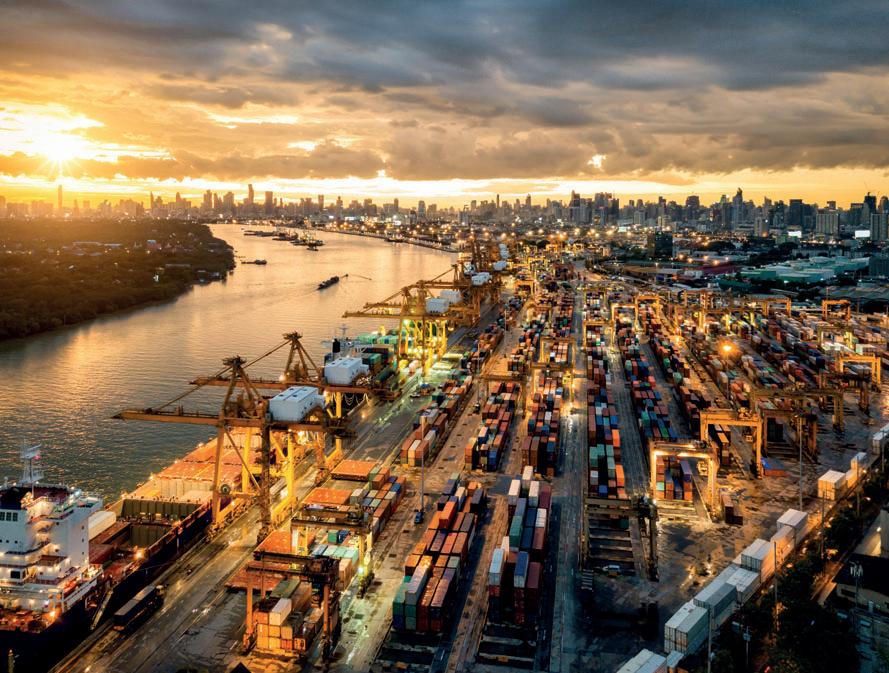
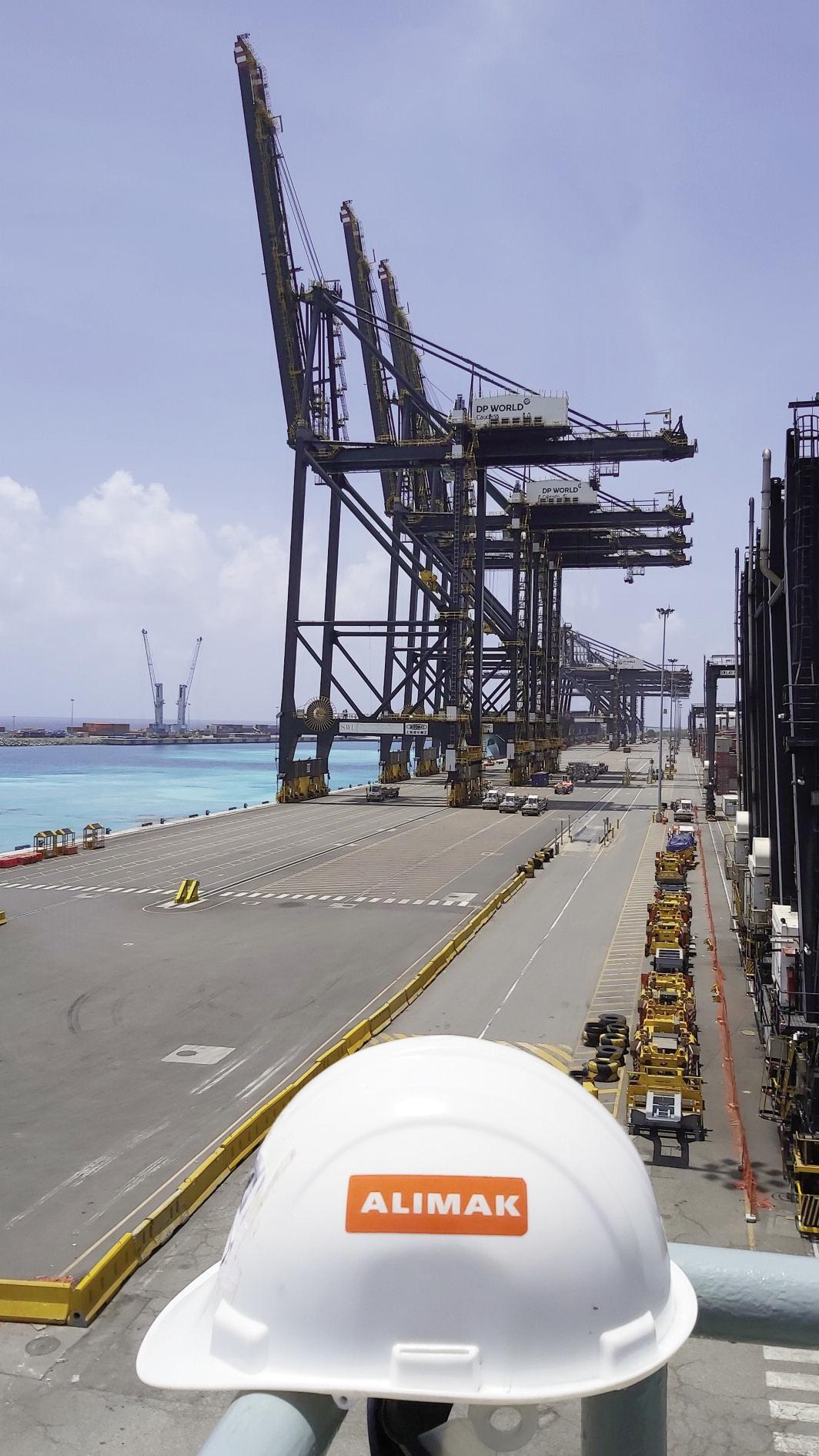
VISIT ALIMAK AT: TOC ASIA – STAND #H14
TERMINAL DEVELOPMENT
CALLAO GEARS UP
With the looming threat of fierce competition from the Cosco-backed Chancay port project (see Port Strategy October edition), AP Moller Terminals Callao (APMTC) and DP World Callao (DPWC), the two occupants of Peru’s gateway port of Callao, are keen to push ahead with their own investment plans.
DPWC is leading the way for the Callao expansion plan, by investing more than US$350million on what is being called the Bicentennial Dock Project, as it marks 200 years since Peru was declared an independent state.
The Dubai headquartered port operator broke through the 1.5m TEU barrier last year as it handled 1,502, 375TEU in 2021, and this year it looks set to go even higher, having set a monthly record, in July, of 137,154 TEU. By increasing its market share from 60 to 66 per cent (based on figures so far from Eclac), DPWC will be slightly up and APMTC slightly down on last year.
Overall throughput at Callao for 2021 was 2.48m TEU, up from 2.28m TEU in 2020 (a Covid year), which was down from the 3.4m TEU of 2019 (pre Covid). For the first four months of this year the port registered 457,300 TEU of full exports and imports; down from 484,600TEU in 2021, which was exceptional as it was making up for a poor 2020, when just 385,500TEU were handled in Callao (statistics from UN body Eclac). Overall throughput is now slightly ahead of 2019. In 2021, DPWC moved up to eighth position in overall TEU in the entire Latin America and Caribbean region, overtaking San Juan, in Puerto Rico.

However, the downside to such throughput success is that port operations are heaving at the seams, as DP World Callao is already over its theoretical capacity, according to sources in the port.
“Long delays and congestion are an everyday occurrence at DP World’s South Terminal and it even has high prices to go with all that which rubs salt into the wound,” said one
EXPANSION PLANS
To counter this congestion, DPW Callao is expanding its pier by 33 per cent to nearly one kilometre in length, will add 40 hectares of yard and will also bring in two new gantry cranes, thereby increasing the capacity from around 1.5m TEU per annum up to just over 2m TEU. The company is forecasting that the first phase of the Bicentennial Project will be completed at the end of next year and the rest during first quarter 2024.
“While many international companies have hesitated to continue investing in Peru, we made the decision a year ago to launch this megaproject of the Bicentennial Dock” Nicholas Gauthier, CEO of DPW Callao, told local journalists recently.
And APMoeller Terminals Callao (APMTC), which operates a general cargo and box facility out of the North Terminal in the Peruvian port (TNM), would also like to get in on the Investment Act as it tries to increase its capacity – currently hovering around 1m TEU per annum for containers – and its productivity to pre-empt any future exodus to Chancay.
However, APMTC has been stymied by the “frequent changes of government” in Peru in recent years which have seen various peaks and troughs of optimism in talks with various governments – including the current one headed up by under-pressure President Pedro Castillo, since July 2021 – over a five-year period but still no contract signings. A former teacher and Marxist, Castillo has made his mark in the Peruvian economic history books by presiding over a record four different governments in six months and has faced two (failed) impeachment procedures.
Back in May, 2011 APMTC signed a 30-year concession contract with the Peruvian state to operate TNM, promising
Lima-based shipping agent, who does business with DPW Callao and did not wish to be identified.
8 APMT has a multifaceted expansion plan including deepening the draft alongside general cargo/multipurpose quays
Rob Ward reviews DP World and APM Terminals’ expansion plans in Peru’s main port of Callao. DPW’s project is underway, APMT’s is still waiting for government approval while new competition from Chancay looms
For the latest news and analysis go to www.portstrategy.com NOVEMBER 2022 | 39
Bulk commodity handling made simple...

...and we make it simple by employing 400 people worldwide, with operations in 75 countries!

We have been “plying our trade” for over 45 years and boast an unrivalled team of the industry’s most talented and experienced professionals... ensuring that every operation, big or small, is implemented seamlessly, efficiently and cost effectively.

We handle over 10 million tonnes per annum across a multitude of services and utiliseour own fleet of bagging machines, fork lifttrucks, bulk hoppers, ship to ship fenders, vacuvators and countless grabswhich means we can ensure confidence and consistency at every stage.
Somewhere across the globe, 24 hours a day, 365 days a year there are successful Nectar operations underway and no matter how complex it is… ...we’ll make it seem like child’s play.
T: +44 1708 386 555 W: www.nectargroup.co.uk E: CommercialTeam@nectar.co.uk
TERMINAL
in the details to invest US$1.2billion during the course of the concession: depending on performance and volumes. So far, the Danish terminal operator has invested US$700m, so a further $500m needs to be spent before 2041, but a good slice of that is needed sooner rather than later to meet growing demand since Covid.
Lars Vang Christensen, the CEO for APMTC, explains that it is a Joint Venture and the Danish outfit has Terminal Investment Link (TIL), part of MSC, as a minority shareholder, in the terminal which has 3.7km of quayside, spread across seven quays and 15 moorings, mostly on finger piers. It is part of the Peruvian public port system, unlike Chancay, and receives multi-purpose as well as container ships, bulkers (fertilisers, metals, chemicals, etc), tankers, fishing boats, roro and even cruise vessels.
“General Cargo has experienced high growth due to the global shortage of containers and with this in mind we wish to improve our terminal. We have completed investment stages 1 and 2 and now we want to tap into 3 and make the port more efficient for our many customers,” Christensen told Port Strategy. “To do this we are working through the process with the authorities and we are five years into the negotiations. It’s been tough with so many changes in government, especially at the Ministry of Transport, but we feel we may get an agreement before this year is out.”
Several executives interviewed for this feature, as well as Christensen, said that APMTC is probably “THE key” terminal in the whole country not just for its contribution of capacity to box movement but also a “huge variety of other cargoes”. As APMTC declares on its website, it is the “only multi-purpose terminal in Peru” and handles 100 per cent of all vehicles imported into the South American country, as well as 100 per cent of the barley, machinery and cement, and of sodium carbonate, as well as 73 per cent of the wheat and 54 per cent of the corn. Christensen says that 1.6m people use APMTC annually and business is growing.
“There’s no question we’re a very busy place and that’s why we are so keen to get on with our investments,” adds the APMTC executive. “Some parts of our terminal need these investments more than others and we will move up to our eventual US$1.2 billion investment target in phases, depending on triggers that will be set off as we reach certain target volumes.”
Today TNM is most certainly a key facility for general cargo in all Peru, with 11.3m tons handled last year, hosting 1500 cargo ships and with 2600 trucks transiting in/out every day. In 2021 APMTC handled 980,000TEU and is expecting to
break the 1m TEU per annum barrier before long, according to Andersen.
Several sources, both in Chile and Peru, told Port Strategy that the “messy politics” of Peru was causing “huge, harmful delays” at APMTC and, to a lesser extent, DP World Callao, making the “urgently needed” investments in Callao a “necessity if the facilities are to have any chance of competing with the new port of Chancay”.
“I figure that if Chancay comes on stream in 2023 or 2024, it will take a few years for it to get up to full steam,” suggested one veteran Chilean shipping agent and WCSA expert. “So, the two Callao terminals handling containers have about five years to enjoy their cargo handling monopoly for the Lima region and after that, well, who knows what their future will be but it certainly won’t be as profitable or as easy as it is today to maintain such a huge percentage of Peru’s maritime commerce.”

ANOTHER SCENARIO
“Yet another scenario could be that Chancay and the two Callao facilities work together and create a “dual port hub” and then tranship more and more cargoes down to and up from Chile,” added the veteran. “The next few years could be very interesting along the WCSA.”
Although APMTC offers 16m draft at its containership handling pier, according to Christensen, its finger piers could do with more depth and so the expansion project involves some dredging, thereby allowing the berthing of larger vessels for general cargo.
Christensen told PS that the largest container vessels calling WCSA (around 12,000TEU) can berth at TNM but more depth for the other cargoes at the finger piers would be a boon and would be part of the investment package if an agreement with the government can be reached.
“We continue our talks with the Peruvian government and, I guess, it will just take the time that it takes,” mused a philosophical Christensen.
SAAM Towage takes Ian Taylor
Chilean tugboat operator SAAM Towage has bought the Peruvian towage operations of fellow Chilean company Ian Taylor, as part of its expansion plan.
The five tugs it has purchased from Ian Taylor, four in the port of Callao and one in Paita, now mean that SAAM operates
more than 180 vessels in 80 ports around the world, including Brazil, Canada, Mexico, Uruguay, Ecuador, Colombia, Panama and El Salvador, as well as Chile and Peru.
“SAAM Towage is presently in the middle of a high investment cycle,” said a
spokesman for the company, which now operates 11 tugboats in Peru, after entering the Peruvian tug sector in mid-2021.
A manager at Ian Taylor said that the Chilean firm would continue to operate their ship agency – Taylor Agencias SAC - in several ports in Peru.
DEVELOPMENT For the latest news and analysis go to www.portstrategy.com NOVEMBER 2022 | 41
8 DP World Callao working up to its limits but with new capacity in the pipeline
DPW is off and running with its expansion plan, APMTC still awaits the green light from government
‘‘



















































































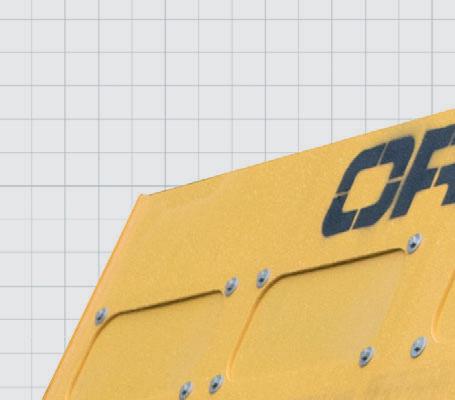
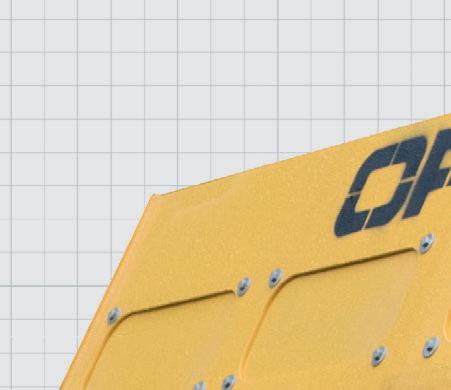








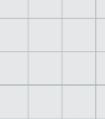


















































































































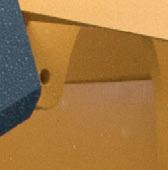








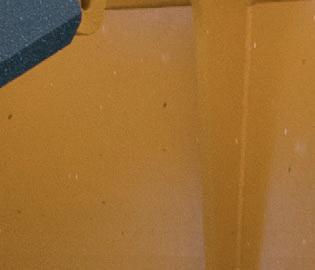































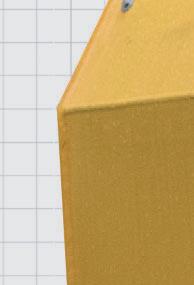
























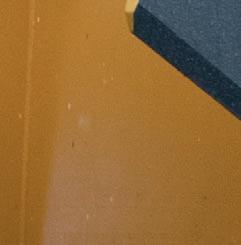
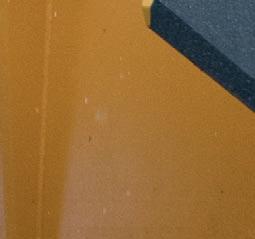






















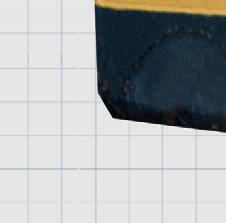





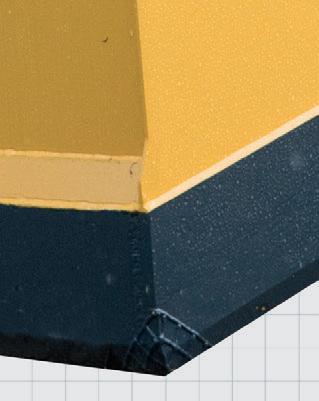



























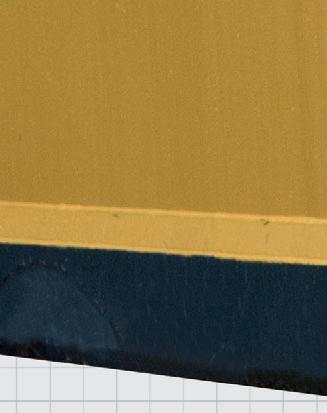













































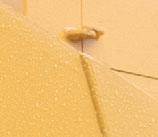





















































































































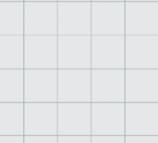
































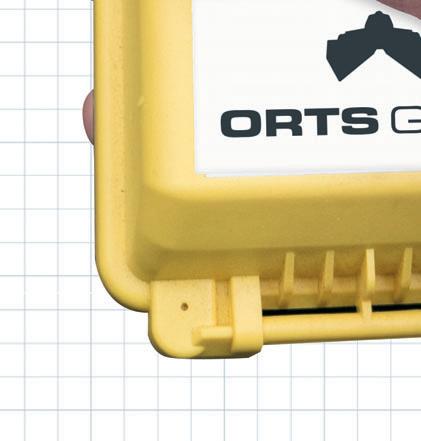
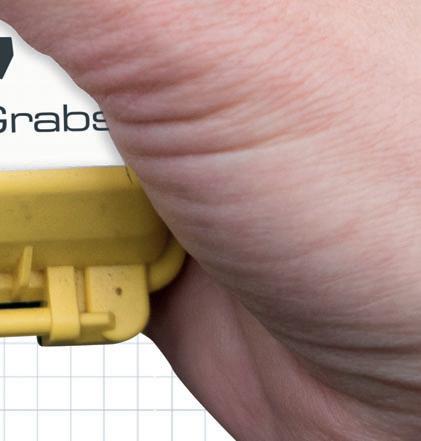

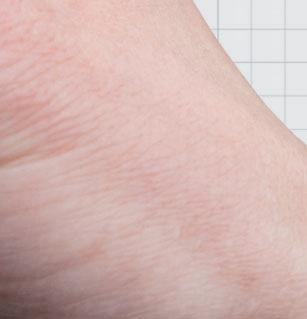

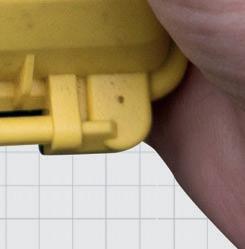




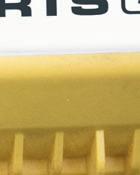
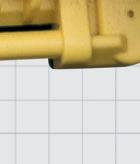
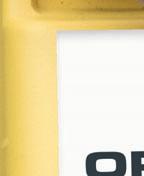
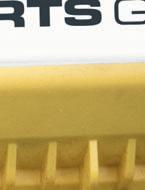
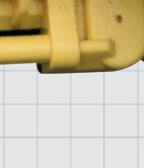








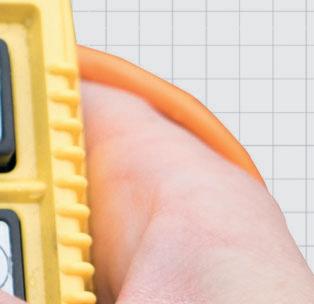





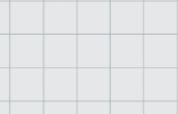
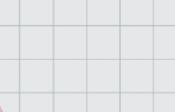
















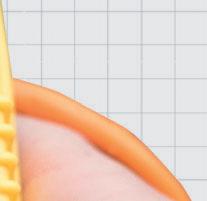
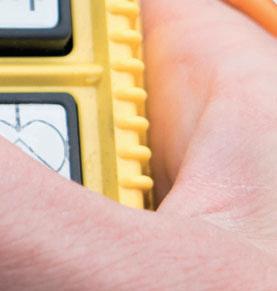
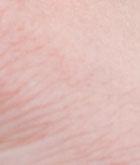

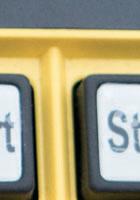
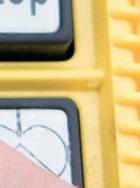

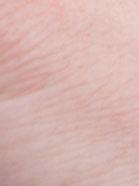
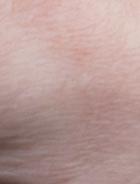

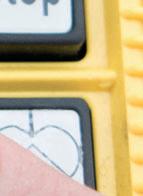
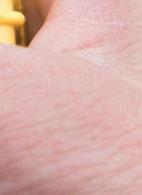


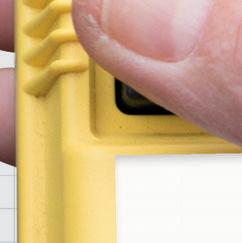
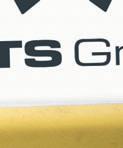
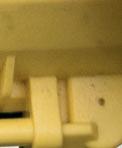





































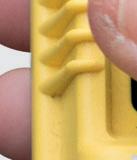
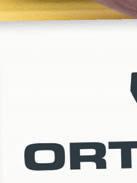
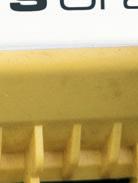

















































































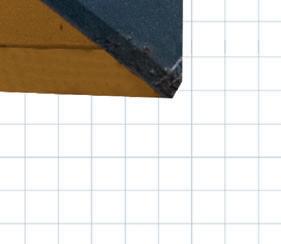
























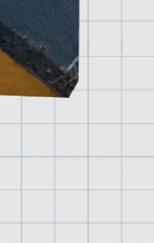
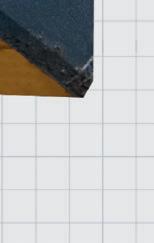
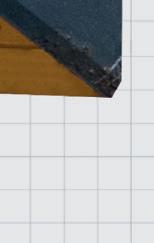



















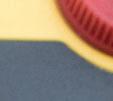







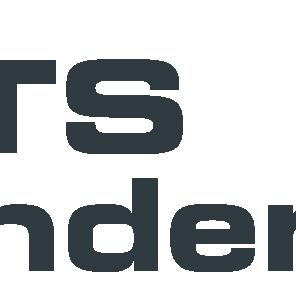







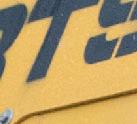

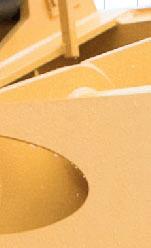





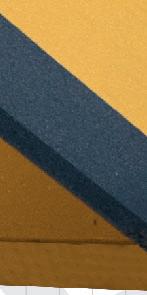




NEWS FROM THE FRONT LINE
Four companies talk to John Bensalhia about recent initiatives that contribute to the smart port doctrine

There is considerable R&D activity in the arena of so-called Smart Ports. PS continues to maintain regular coverage of key developments in our Digital News pages but this month additionally highlights news from the user and system supplier sides of the sector from four front-line companies.
NOKIA: BROAD-BASED INNOVATION
“We are seeing innovations around OCR technology, IoT sensors, higher usage of AI & ML and rising electrified automated container handling equipment,” says Venkatesh Ramakrishnan, Nokia’s Head of Maritime, Logistics and Retail Verticals. He underlines that digitalisation helps in increasing transparency in operations, allowing for further optimisation and efficiency gains. “These efficiencies lead to a reduction in cost and improvement in operations quality. Digitalisation/ automation also has a positive sustainability impact: a large amount of automated container handling equipment is electrified.”
Nokia has seen a rise in demand for private LTE and 5G networks. “We see more asset digitalisation and automation technologies coming up in the port environment to improve port operation processes,” says Ramakrishnan.
Because ports are harsh external environments, any digitalisation solution considered for this environment must be resilient and robust. Ramakrishnan adds: “The solutions that get deployed in a port environment must seamlessly integrate with the end to end solution inside the port, but also must interact/integrate with the wider supply chain consisting of other companies/parties.”
For the future, Ramakrishnan says that ports are riding the wave of Industry 4.0 with IoT devices and sensors, automated container handling equipment, with various applications
ANTWERP-BRUGES: THREE SMART TECHNOLOGIES

Three key smart technologies are driving enhanced port security, detection and inspection at the Port of AntwerpBruges.
The Digital Twin is a digital copy of the port area that offers real-time data on every aspect of operations. The application is driven by its ‘brain’: the Antwerp Port Information & Control Assistant (APICA)), with the ‘face’ being a 3D interface producing real-time information.

The Digital Twin allows the port to detect and monitor all happenings, resulting in stronger safety and efficiency levels.
Monitoring port activity is accomplished in other ways such as via Smart Cameras, in excess of 600 at Antwerp.
Another method being worked on in conjunction with various partners is the drone, which will be used to detect any risk or issue such as oil spill, floating waste or fire.
This is where use of 5G comes in. The port says that it is working on a private 5G network that can use real-time information from the drones and cameras. The network will link the port with local services such as police or fire, and using the real-time data, can react accordingly in the event of any security or safety risk.
HAROPA PORT: MORE COMPETITIVE
The merger of three ports of the Seine Axis (Le Havre, Rouen and Paris) favours deployment of standardised, highperformance digital solutions that make maritime and river traffic easier and more competitive.
bringing varied use cases/solutions, and finally, a strong AI/ ML that processes the huge amount of data a port can generate.
8 HAROPA PORT has developed a port cybersecurity platform, and worked on exchange of data with the municipalities in favour of the city-port interface
SMART PORTS
For the latest news and analysis go to www.portstrategy.com NOVEMBER 2022 | 43








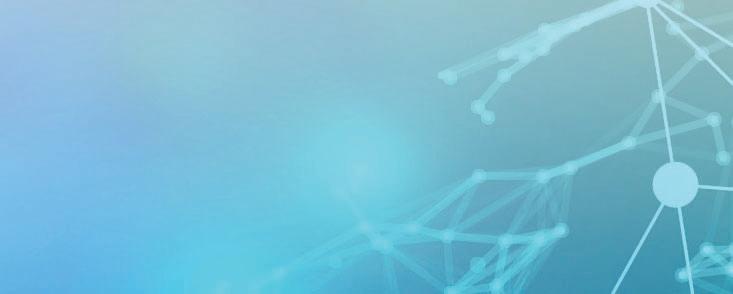

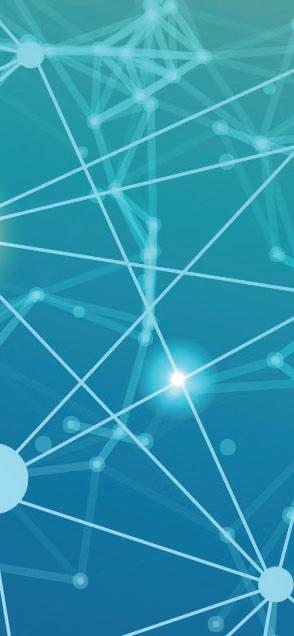
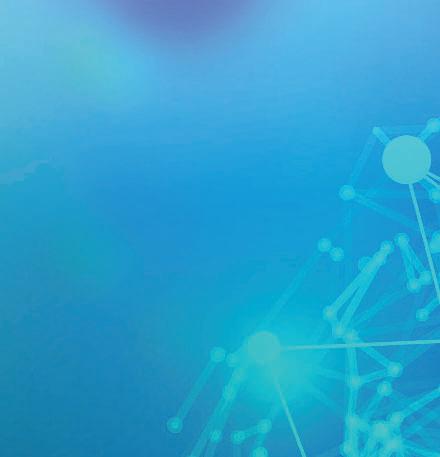


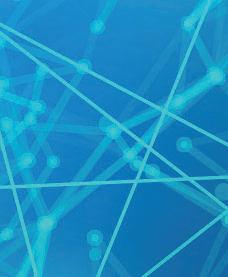

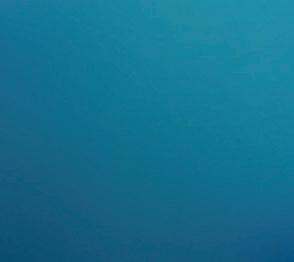




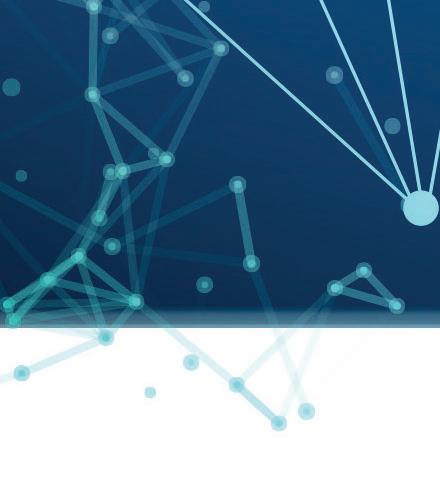














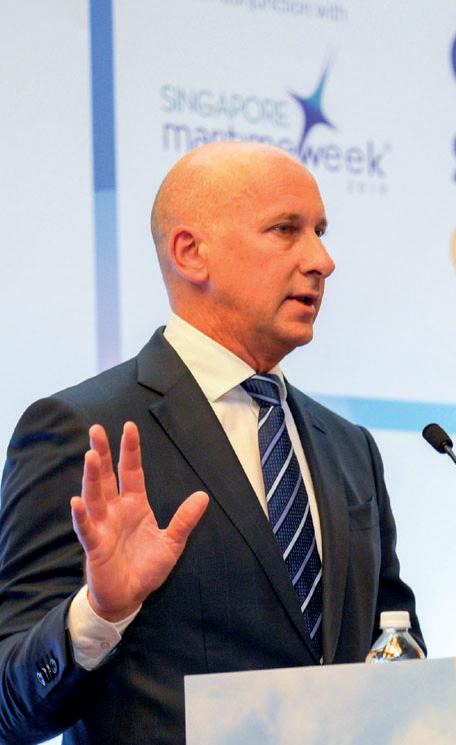











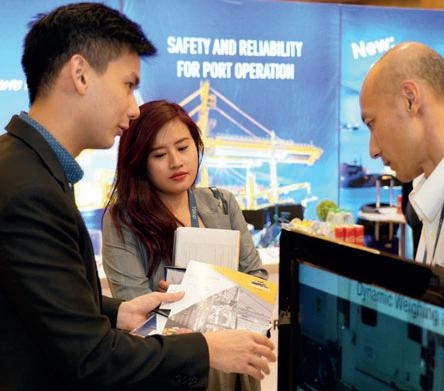
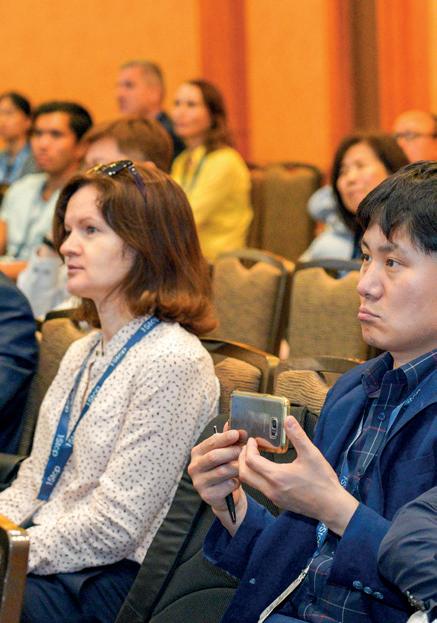
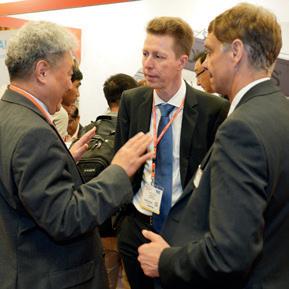







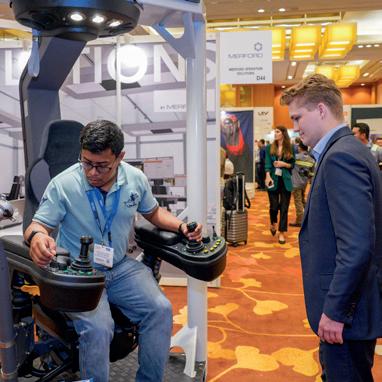













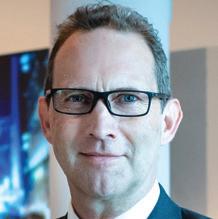
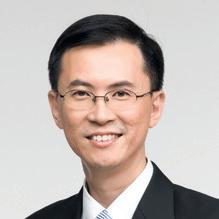






29 - 30 November 2022 Marina Bay Sands, Singapore SPONSORSHIPS ARE LIMITED contact us to find out more TOC ASIA RETURNS TO SINGAPORE! Connecting the Port and Container Supply Chain Community across the APAC region After 2 years of industry change, port technology advancement and digital acceleration, we are pleased to bring the industry back together face-to-face at TOC Asia Join the conversation online #TOCAsia www.toc e v en ts- a s ia .co m Confirmed Industry Luminary Speakers Include: Kenneth Lim Jayendu Krishna Casper Ellerbaek Jonathan Beard Sundeep Sibal View the 2022 agenda Engage in our 2 renowned conference tracks: Container Supply & TECH TOC Maximise the power of face-to-face returns with TOC’s famous social programm Discover the APAC’s latest cutting-edge port tech Hear from industry luminaries and change-makers Drive your business forward as TOC Asia brings unlimited opportunities Connect with world-class port and logistics solution suppliers Enjoy a safe and sustainable event experience REGISTER NOW TOC Asia is proud to work alongside the globe’s leading industry associations Media PartnerAssociate SponsorGlobal TECH TOC Sponsors Global Operator Partner Global Delegate Badge Sponsor TECH TOC Sponsor
“From the year of the merger, in 2021, HAROPA PORT has initiated, with SOGET, a harmonisation of its digital tools at the scale of the axis,” says Clémence Rebours, HAROPA PORT Press Officer. “The ports of Rouen, Paris and Le Havre have benefited from the deployment of the integrated S)One system for cargo management (CCS).”
Harmonisation is continuing with the aim of a convergent
system for the management of port calls and port operations between Rouen and Le Havre in 2023. Rebours says that the next step is a one-stop shop for ships, passengers and goods, which a European regulation requires by 2025.
HAROPA PORT is working on several innovative projects: in particular for the complete dematerialisation of road/rail transport documents and the use of blockchain for the traceability of hazardous materials. “This work on data should provide information on logistics, such as the carbon impact of transport modes, and lead to better synchronisation of flows.”
With the SmartPortCity initiative first launched in Le Havre, HAROPA PORT has developed a port cybersecurity platform, and worked on exchange of data with the municipalities in favour of the city-port interface. Rebours comments: “A 5G Lab has also been set up to initiate the deployment of 5G in the port context, notably with the project of the connected water level, enabling ships to exchange data from onboard to on land such as bathymetric information (depth and relief).”
Awake Marketplace Launches
Awake.AI has announced the launch of the Awake Marketplace – via which trade port call and logistics services, digital information and physical products can be acquired utilising the power of an AI-driven logistics data platform.
The company states: “Awake Marketplace enables wide trading of services, digital and physical products with ease. Marketplace knows how ports operate and how trading is performed. With modern and ML-enhanced tools selling and buying is fast. Pregenerated shopping carts can be created for
a port call, ready to be fine-tuned and pur-chased.” It claims the following attributes for the system:
5 Trading with the power of Marine AI
5 Fast and intelligent buying and selling of port services and products
5 A marketplace structured in accordance with a holistic logistics data platform and
5 It represents a comprehensive collaboration solution in port and maritime logistics
To join up Awake.AI states this is by means of a registration and approval process.
8 Port of AntwerpBruges: Drones can be used to detect any risk or issue such as an oil spill, floating waste or fire

It is clearly an interesting initiative and it will be interesting to see if is taken up on a wide scale. Will it, for example, be able to accommodate the strong bargaining mentality that exists in the maritime and logistics sector – “cut and thrust” as it is known in common usage? Another question is, how will Awake Marketplace make money? If it is via taking a commission on a sale then presumably this could eat into any discount a company could obtain by going direct to the service or product supplier?
The jury is out, let’s see what happens.
SMART PORTS For the latest news and analysis go to www.portstrategy.com NOVEMBER 2022 | 45
We see more asset digitalisation and automation technologies coming up in the port environment to improve port operation processes
‘‘
Venkatesh Ramakrishnan, Head of Maritime, Logistics and Retail Verticals, Nokia
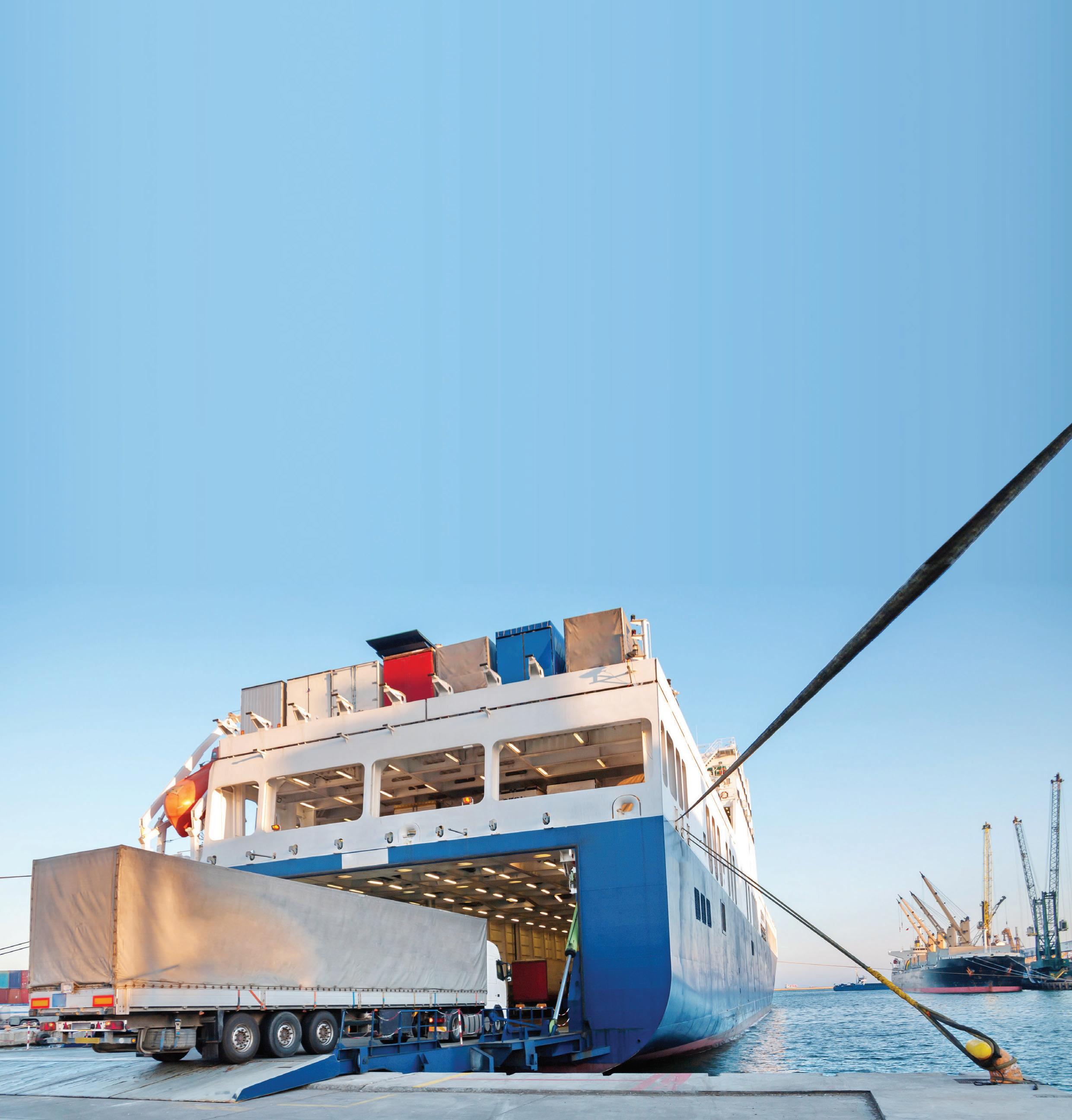

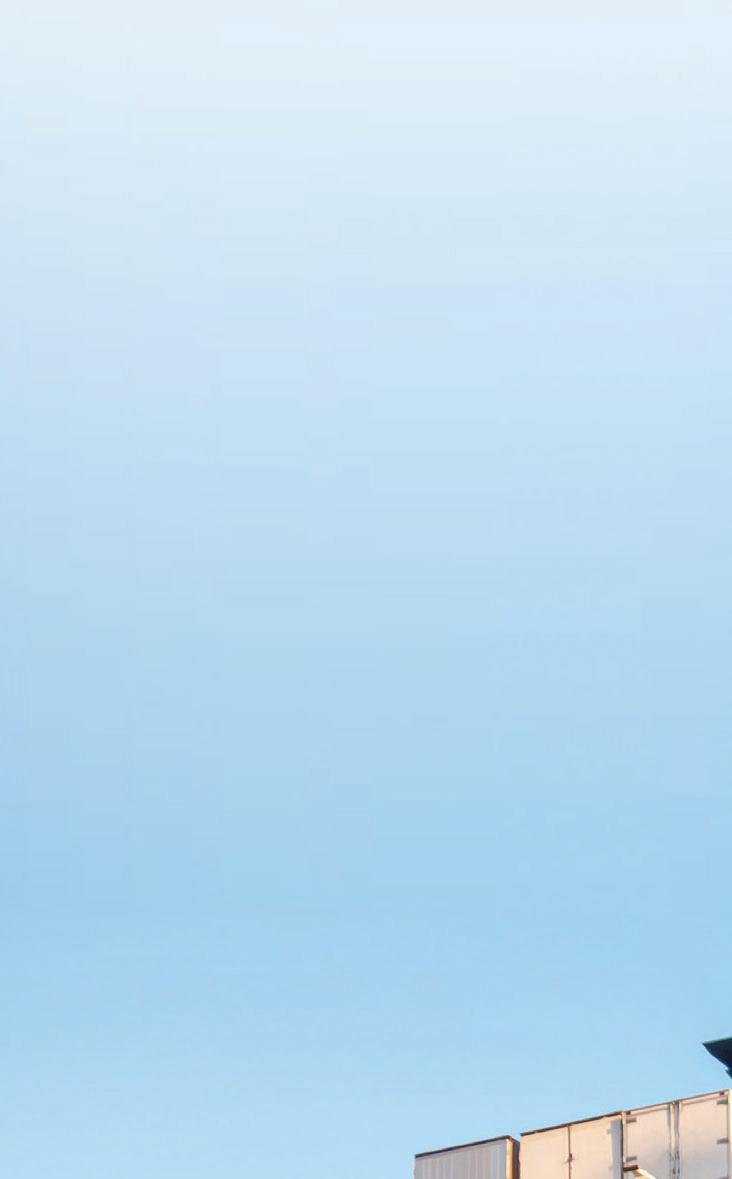





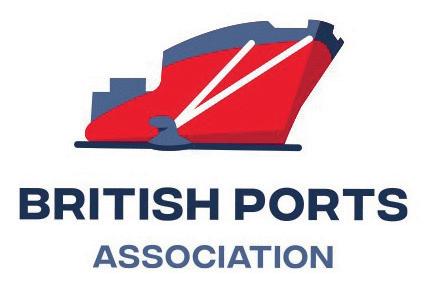
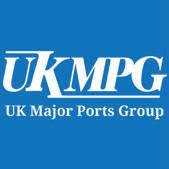
Hosted by: Delegate place includes: •Conference attendance including lunch & refreshments •Technical Visit •Electronic documentation • • attendees representing shipping lines, ports, logistics companies, terminal operators and freight organisations For more information on attending, events team: visit: coastlink.co.uk contact: +44 1329 825335 or email: info@coastlink.co.uk Book your place now • • Freeports: Driving change for coastal Media partners: GREENPORT INSIGHT FOR PORT EXECUTIVES MOTORSHIP MARINE TECHNOLOGY THE Supporters:
SPREADER REFINEMENT
Today’s container crane telescopic spreader design trends are driven by a combination of factors all of which lead to more exacting demands from purchasers.
“Container handling with ship-to-shore (STS) cranes is getting faster, higher and heavier,” explains Lars Meurling, VP, EMEA Sales and Marketing, Bromma. “This is reflected in the specifications for the lifting equipment and for spreaders specifically.”

One of the mainstays of the sector is the electric spreader. Patrick Draper, PR & Communications, RAM Lifting Technologies (UK) Ltd, explains that electric spreaders have been pretty common in the industry for the best part of 20 years. “They make up 90 per cent of all yard crane deliveries. We feel that electric spreaders are not entirely unique, but a common type of spreader, and consider all brands of electric spreader are similar.”
Meurling concurs that the all-electric spreader is one of the most popular in the industry, with this product having been in use in yard cranes (RTG, RMG ASC etc) for two decades now. Bromma’s first all-electric yard spreader was introduced in 2001. “Today, more than 95 per cent of the yard spreaders delivered from Bromma are all-electric,” says Meurling. “The operational environment of the yard spreaders, combined with the fact that the average yard spreader is far simpler than the corresponding STS spreader, has made the acceptance and introduction of electric spreaders in the yard much easier and quicker.”
SECOND GENERATION
In 2022, Bromma launched the second generation of its allelectric separating twin STS spreader: STS45E G2 Plus. “The
first generation spreader was introduced in 2007, but with hindsight, we have realised we were too early. At this time the industry was not ready for a big step towards more environmentally friendly solutions and some of the technology on the spreader was more sensitive, compared to the more common hydraulic versions,” notes the company.
Over the past few years, Bromma has refined the product bit by bit, to a solution that is more robust. This includes the components used to drive and control the motors plus the steel structure which has been further optimised to meet the more exacting requirements of today’s terminal operations.
“The recent development has, to a large extent, been done in co-operation with some of the forerunners in sustainability/ environment in the industry,” elaborates Meurling. “Long Beach Container Terminal has been a great development partner and they currently have 80 all-electric STS spreaders in operation or on order, of which 24 units are the second generation.”
In the case of twin-lift spreaders, RAM has not seen such a big demand. Patrick Draper points out that for many terminals the 20ft container population is declining. “The trend is for 40ft ISO containers. We have customers investing in tandem 40ft for yard operations, as there is little opportunity to twin lift 20ft containers. Tandem in the yard especially for rail operations can reduce operational time by up to 50 per cent, and reduce energy usage by up to 15 per cent,” he says.
OUCO’s Semi-Automatic Container Spreader is designed for terminals looking to manage ship container handling with a lower lift count. The company’s semi-automatic spreader is designed to work with single or double hook jib cranes.
In the context of specialist requirements, the TEC Container BA-320E spreader provides a good example with a unit
8 Bromma’s allelectric spreaders are said to reduce the energy consumption by up to 90 per cent compared to hydraulic spreaders
CONTAINER HANDLING
John Bensalhia highlights market and technological trends underway with telescopic spreader usage and design
For the latest news and analysis go to www.portstrategy.com NOVEMBER 2022 | 47
Credit: Bromma


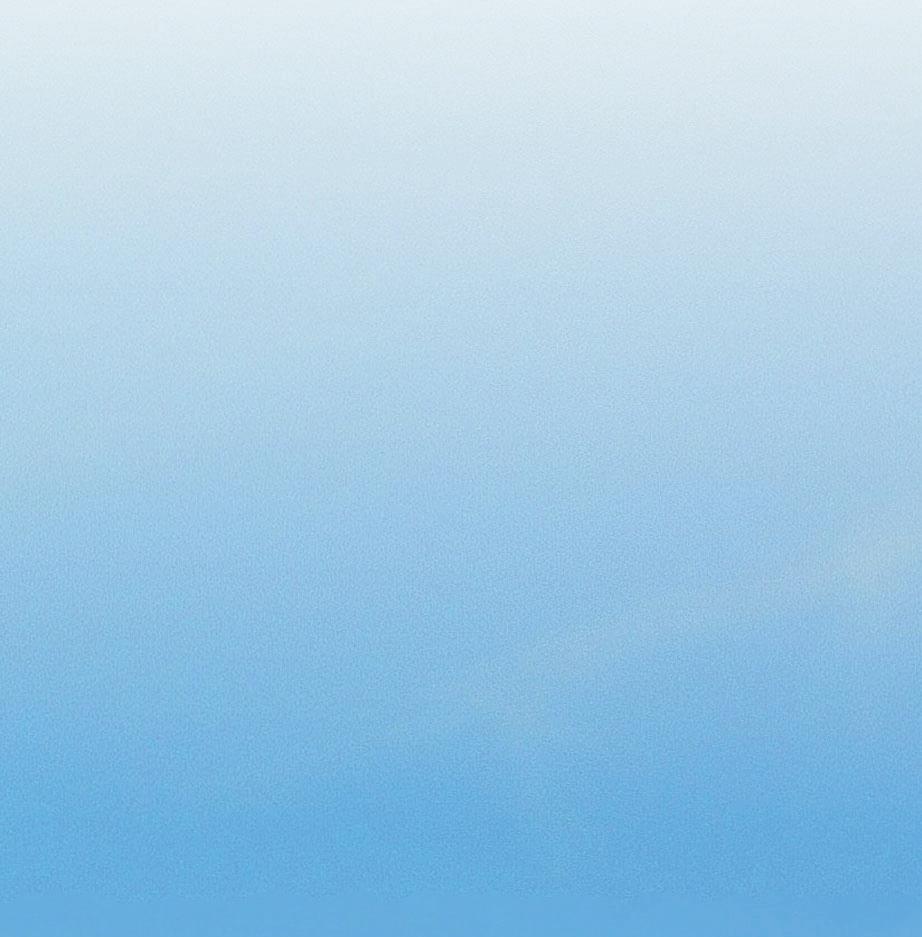
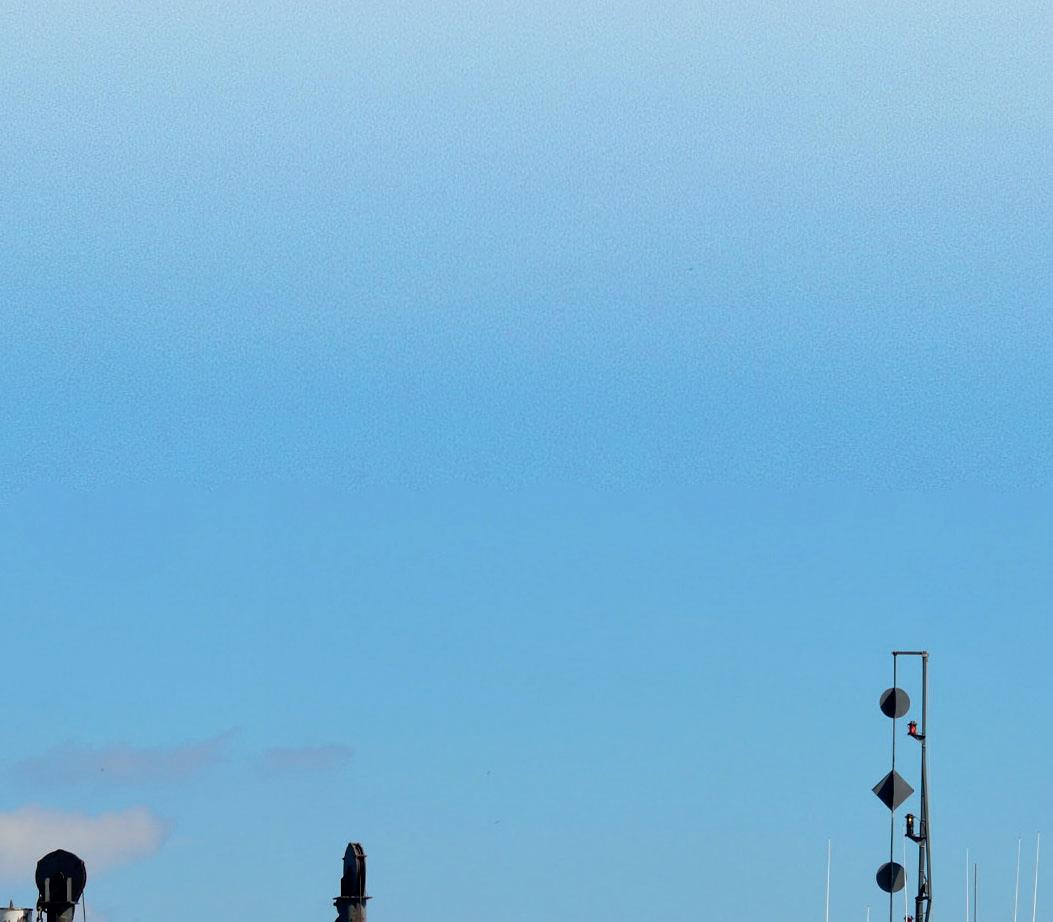
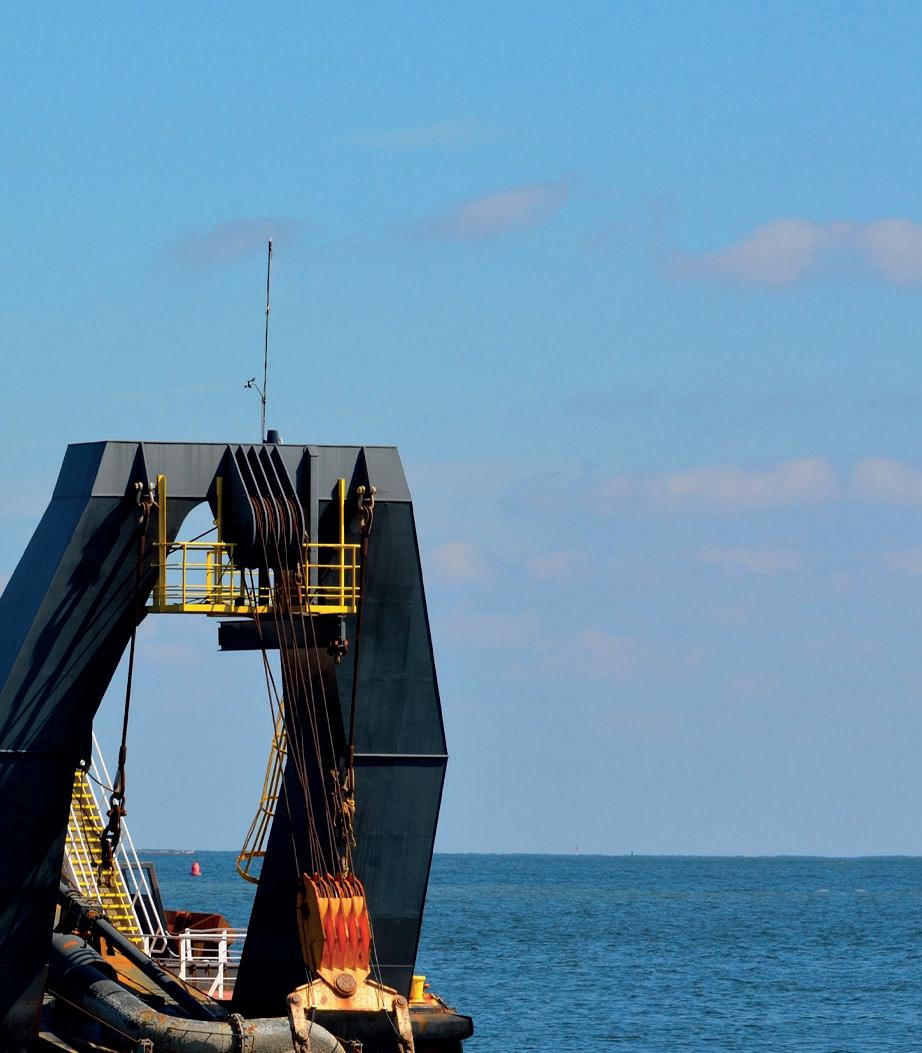
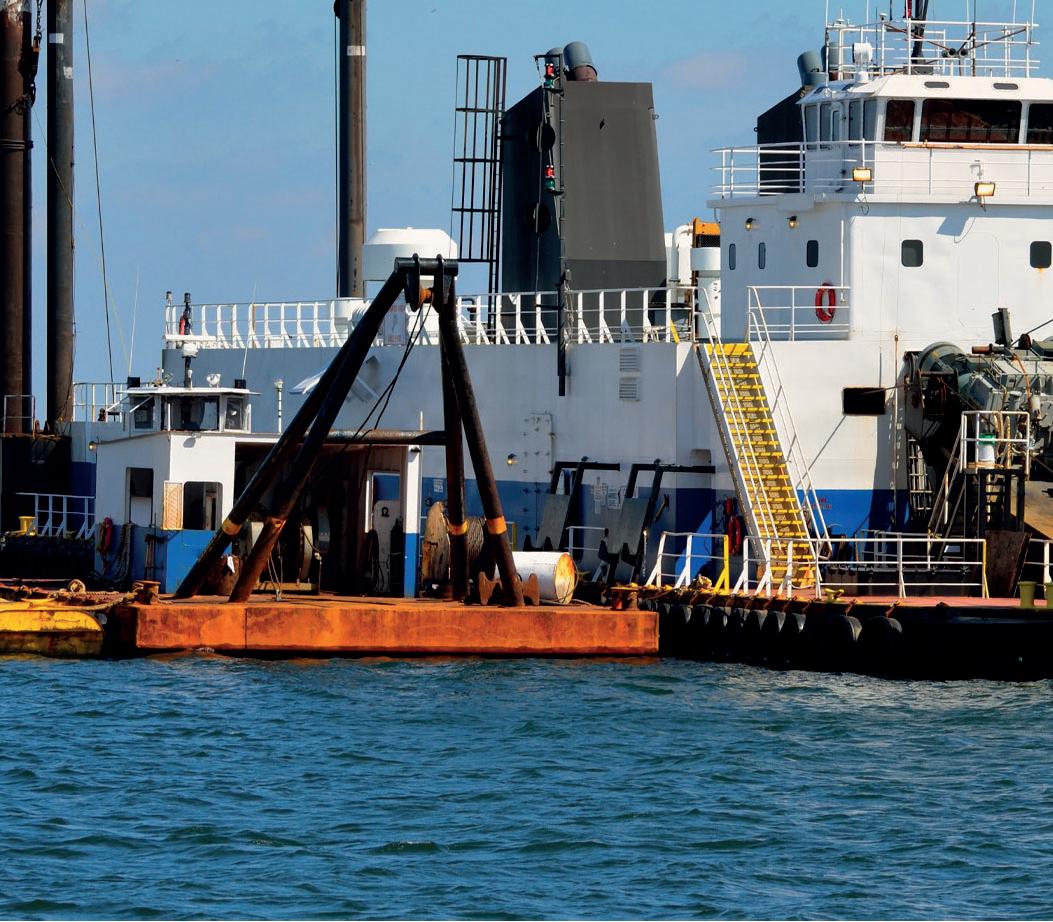


For more information visit: marinecivils.com contact: +44 1329 825335 or email: info@marinecivils.com #MarineCivils2023 Marine Civils in association with Seawork - Europe’s leading event dedicated to showcasing the latest equipment and solutions for marine, coastal and other challenging civil engineering projects with unique landscape features. Marine Civils is co-located with Seawork Reach a larger audience than ever before Organised by: Media partners: MARITIMEJOURNAL COMMERCIAL MARINE BUSINESS PORTSTRATEGY INSIGHT FOR PORT EXECUTIVES 13 15 TO JUNE 202 Southampton United Kingdom Reserve now for 2023 and make the most of marketing support from Marine Civils, Seawork and our leading commercial marine magazines, in print, online, eNews and via social media channels. Marine Civils attracts representatives from: • Civil engineering • UK port authorities, • Energy companies • Conservation organisations, amongst others With a big overlap in content and business for companies involved in marine construction, the event is uniquely positioned to provide invaluable opportunities to access wider relevant audiences via Seawork and Maritime Journal.
designed to work in an anti-explosion environment for the Norwegian client TTS Group, The BA-320E was chosen to handle containers that house liquefied natural gas which is used to feed the engines of RO-PAX vessels.
Because of the nature of this kind of cargo, the BA-320E was designed to meet strict safety requirements – for example, rules pertaining to explosive atmospheres in accordance with the IEC 60079-14: 2013 standard. The BA320E also features an explosion-proof panel that houses a power supply for controls and signalling.
SUSTAINABILITY ACCOMMODATED
There is a rapid adoption of sustainability strategies in the terminal sector with this driven by the large global operators. “Geographically, the trend is more visible in Europe and North America,” says Meurling. “But the topic of low emission equipment is increasingly high on the agenda of the operators.”
He states the STS45E G2 Plus reduces energy consumption by almost 90 per cent compared to a corresponding hydraulic spreader. “The emission saving for one crane/ spreader in a high activity terminal is 15 tons when the allelectric spreader is used. This also translates into a significant cost saving as a result of the energy consumption reduction.”
“Bromma expects,” he elaborates, “that the sales (orders) for all-electric STS spreaders will pick up momentum but over the next few years the activity will be seen primarily in Europe and North America.”
TIMING AND TECHNOLOGY

Lead times for spreaders can vary – with an average run of between three and six months. The effects of the COVID-19 pandemic are still being felt, as Patrick Draper explains:
“For RAM, it is between three to six months, as some electric motors are on a long lead-time, due to the knock-on effects of the COVID-19 pandemic.”
Lars Meurling says that the lead time for a hydraulic STS spreader is in the range of five to six months while the lead time for the all-electric versions are slightly longer. “As the electric spreaders become more commonly ordered, representing a larger share of the spreaders delivered, the lead time will decrease and is expected to be comparable to the hydraulic version in the near future,” he explains.
RAM will be announcing a totally new design of electric
actuator in 2023, which will have more torque than current hydraulic actuators. “The target for this flipper/gather guide is for our tandem headblock, that needs high torque due to the higher weight of two headblocks and two spreaders underneath,” explains Draper.
Modern day technology is also influencing spreader innovation.
All Bromma spreaders today are delivered with the option to connect them to SMS. “SMS has been on the market for two years now, but is gaining momentum as customers see the increased value and in the end increased productivity. The allelectric spreaders are no exceptions, as they are prepared for being connected upon agreement,” says Meurling.
Responding to automated container terminal requirements is another design influence. RAM’s 6900 series, for example, includes low spreader height, higher gathering force and also image analysis. Its twin lift housing design reduces the amount of components required to carry out telescopic twin lift tasks, reportedly resulting in lower levels of both maintenance and downtime.


With advances in technology, operator interaction can be lessened. This is the case with the Tandemloc Electric Load Levelling Container Spreader Frame. The product is also designed to tackle cases that a conventional spreader could not – for example, in instances where the container is not loaded evenly or is affected by overhead restrictions. The Tandemloc load levelling spreader has under 40” of pull to pull, so overhead restrictions are not an issue.
The Tandemloc Frame has been upgraded to make it safer and easier to use. The manufacturer describes the spreader as a complete, all-in-one lifting package that only takes about five minutes to set up for use. Industrial wireless remote control allows for less manual operation. In order to achieve the required level lift, the top frame is positioned directly over the centre of the load. The centre of gravity is offset from the middle of the container, resulting in efficient handling operations. Furthermore, minor load levelling adjustments can be made while the load is still hanging from the crane.
Automation is increasingly being implemented on STS cranes, as Meurling highlights. “Optical Character recognition, sensors for positioning as well as for detection of dangerous situations and general safety logic are a specification more commonly seen.”
8 RAM’s 6900 series includes low spreader height, higher gathering force and image analysis
CONTAINER HANDLING For the latest news and analysis go to www.portstrategy.com NOVEMBER 2022 | 49
Credit: RAM
Date for









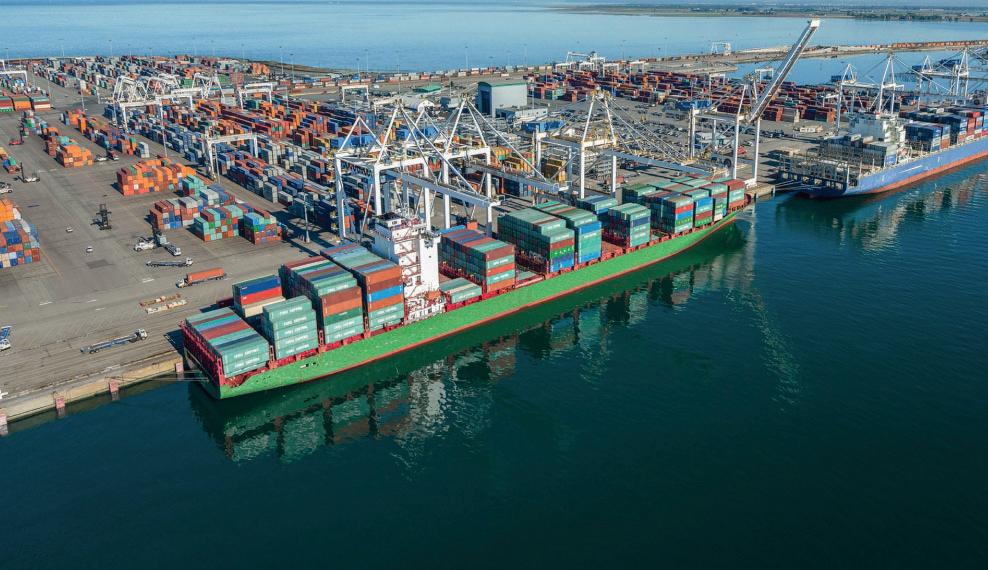
diary in

your
18 20 TO OCT Southern Europe Media partners: Meet and network with over 200 attendees representing port authorities, terminal operators and shipping lines. For more information on attending, sponsoring or speaking, contact the events team: visit: greenport.com/congress tel: +44 1329 825335 email: congress@greenport.com #GPCongress See you next year Host port to be announced shortly!
B ULK HANDLING
ifm electronic gmbh ifm is one of the world’s leading sensor companies in the automation of measurement and control, optimizing technical processes in almost all industries. +49 201 24 22 0 info@ifm.com www.ifm.com
 B ULK
B ULK
Bedeschi S.p.A
For more than a century, Bedeschi is providing effective and reliable solutions in a wide variety of industries (bulk handling, marine logistics and mining), capitalizing on synergies and cross competences.
Via Praimbole 38, 35010 Limena (PD) – Italy
Tel: : +39 049 7663100
Fax: +39 049 8848006
Email: sales@bedeschi.com Web: www.bedeschi.com

NEUERO Industrietechnik GmbH

Specialist for pneumatic ship unloaders and mechanical ship loader. NEUERO follows the MADE IN GERMANY quality tradition. Now with more than100 years of tradition in the manufacture of reliable and high-quality conveyor systems worldwide.
Email: neuero@neuero.de Tel: +49 5422 9 50 30 neuero.de/en/

C ARGO HANDLING EQUIPMENT
Over 60 years supporting Container Terminals in port operations: we create strategic
STS Portainer® and RTG Transtainer® cranes, services & Advanced Port Technologies. PACECO® CORP. World Headquarters 25503 Whitesell Street Hayward, CA 94545 Tel (510) 264-9288 email@pacecocorp.com www.pacecocorp.com

C ONNECTION SOLUTIONS
As one of the leading manufacturers of quick connector systems,Stäubli covers connection needs for all types of fluids, gases and electrical power.
Tel: +33 4 50 65 61 97 connectors.sales@staubli.com www.staubli.com/en-de/ connectors/

The BEUMER Group is an international leader in the manufacture of bulk material handling systems: Overland Conveyor Pipe Conveyor Stacker & Reclaimer Shiploader
Tel.: +49 2521 240 E-mail: info@beumer.com Web: www.beumer.com
SAMSON Materials Handling Ltd specialises in the design and manufacture of mobile bulk materials handling equipment for surface installation across multiple industrial segments. Designed for rapid onsite set-up and continuous high performance SAMSON equipment provides an excellent return on investment.
SAMSON Materials Handling Ltd specialises in the design and manufacture of mobile bulk materials handling equipment for surface installation across multiple industrial segments. Designed for rapid onsite set-up and continuous high performance SAMSON equipment provides an excellent return on investment.

Taylor Machine Works, Inc.
Taylor Machine Works designs, engineers, and manufactures more than 100 models of industrial lift equipment with lift capacities from ,000-lbs. to 125,000-lbs.

Gemini House Cambridgeshire Business Park, 1 Bartholomew’s Walk, Ely Cambridgeshire CB7 4EA England, United Kingdom (UK) Tel: +44 1353 665001 sales@samson-mh.com www.samson-mh.com
Gemini House Cambridgeshire Business Park, 1 Bartholomew’s Walk, Ely Cambridgeshire CB7 4EA England, United Kingdom (UK) Tel: +44 1353 665001 Fax: +44 1353 666734 sales@samson-mh.com www.samson-mh.com
YOU CAN DEPEND ON BIG RED! 3690 N Church Avenue Louisville, MS 39339 USA +1 662 773 3421 www.taylorbigred.com
Telestack are a leading global manufacturer of equipment for the bulk material handling industry including Ship Loaders/Unloaders, Hopper Feeders, Truck Unloaders, Bulk Reception Feeders, Stockpiling Conveyors, Link Conveyors and Telescopic Stackers. Tel: +44 (0)2882 251100 Email: sales@telestack.com www.telestack.comw
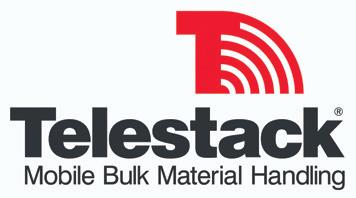
C ARGO HANDLING SYSTEMS
LASE Industrielle Lasertechnik GmbH
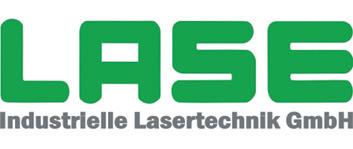
LASE offers innovative and productive solutions for ports by combining state-of-the-art laser scanner devices and sophisticated software applications. We are specialised in the fully automated handling of containers, cranes or trucks.
Rudolf-Diesel-Str 111 D-46485 Wesel, Germany
Tel: +49 (0) 281 - 9 59 90 - 0 info@lase.de www.lase.de
D REDGING
Rohde Nielsen A/S
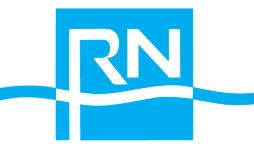
Specialising in capital and maintenance dredging, land reclamation, coast protection, Port Development, Filling of Caissons, Sand and Gravel, Offshore trenching and backfilling
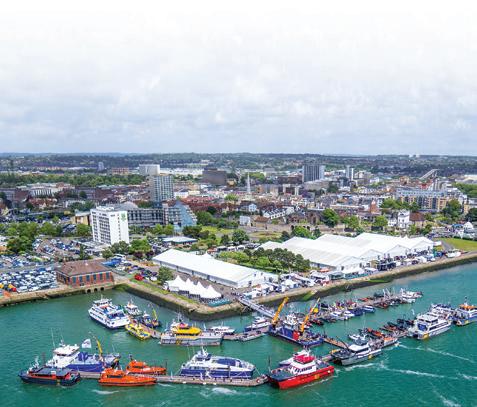
Nyhavn 20 Copenhagen K. DK-1051 Denmark +45 33 91 25 07 mail@rohde-nielsen.dk www.rohde-nielsen.dk
E
DRY AGRIBULK MATERIALS HANDLING SYSTEMS :
– Portable grains pumps
– Pneumatics continuous barge and ship unloaders 100-1200 tph
– Simporter twin-belt unloader up to 2500 tph
– Loaders up to 2500 tph
Complete turnkey projects
VIGAN Engineering S.A. Belgium Tél.: +32 67 89 50 41 www.vigan.com/info@vigan.com
C OMPONENTS
Heavy duty rol e-chain® P4HD.56R
The new heavy-duty rol e-chain meets all the relevant requirements for container cranes of the next and next-but-one generations. Longer and longer travels, greater dynamics, short stress cycles, zero failures.
P4.1 e-chain® Energy chain with optional intelligent wear monitoring for double the service life, travels of up to 1.000 m, speeds of up to 10 m/s and fill weights of up to 50 kg/m.
LECTRIFICATION SOLUTIONS
VAHLE PORT TECHNOLOGY
VAHLE is the leading specialist for mobile power and data transmission
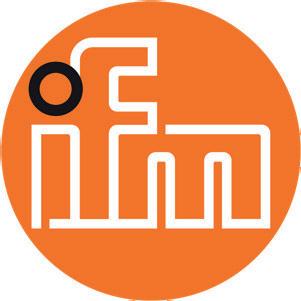
VAHLE provides the solutions to reduce the carbon footprint while increasing the productivity.
igus® GmbH Spicher Str. 1a, 51147 Köln, Germany Tel. +49-2203-9649-0 info@igus.eu igus.eu/P4.1
igus® GmbH Spicher Str. 1a D-51147 Köln, Germany Tel. +49-2203-9649-0 info@igus.eu igus.eu/P4.1
RTGC electrification including positioning and data transmission making RTGC ready for Automation.
Westicker Str. 52, 59174 Kamen, Germany Email: port-technology@vahle.de Web: www.vahle.com
PRODUCTS & SERVICES DIRECTORY
HANDLING
Staubli Directory Mar 2021 indd 1 25/02/2021 15:49
Beumer Directory Jan 2021 indd 1 27/01/2021 11:29
#WeHaveTonnesToTellYouAbout Telestack Directory June 2021 indd 1 26/05/2021 12:20 For the latest news and analysis go to www.portstrategy.com NOVEMBER 2022 | 51
Vigan ID indd 1 25/01/2022 12:03 A UTOMATION TECHNOLOGY
To advertise in the Port Strategy Directory Contact Arrate Landera +44 1329 825335 www.portstrategy.com
For more information visit: seawork.com contact: +44 1329 825335 or email: info@seawork.com 13 15 TO JUNE 2023 Southampton United Kingdom
Fogmaker develops, manufactures, and markets fire suppression systems for engine compartments with high pressure water mist. Fogmaker is a market leader for automated fire suppression systems with 200,000 installations in more than 50 countries since 1995.
Tel: +46 470 77 22 00 info@fogmaker.com www.fogmaker.com
MRS Greifer GmbH

Grabs of MRS Greifer are in use all over the world. They are working reliably and extremely solid. All our grabs will be made customized. Besides the production of rope operated mechanical grabs, motor grabs and hydraulic grabs we supply an excellent after sales service.

Talweg 15-17, Helmstadt-Bargen 74921, Germany
Tel: +49 (0)7263 - 91 29 0 Fax: +49 (0)7263 - 91 29 12 info@mrs-greifer.de www.mrs-greifer.de
ANDLING
EQUIPMENT
Künz GmbH
Founded in 1932, Künz is now the market leader in intermodal rail-mounted gantry cranes in Europe and North America, offering innovative and efficient solutions for container handling in intermodal operation and automated stacking cranes for port and railyard operations.
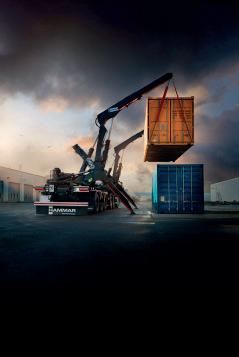
Gerbestr. 15, 6971 Hard, Austria T: +43 5574 6883 0 sales@kuenz.com www.kuenz.com
TPORT
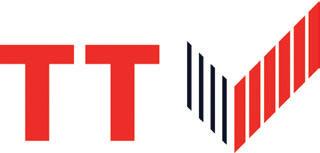
AUTOMATION
CAMCO Technologies NV Visual- and Micro Location- assisted process automation solutions for container, ro-ro and rail terminals worldwide Accurate crane, gate & rail OCR systems and Gate Operating System software helping terminals accelerate terminal and gate activity
Technologielaan 13 Leuven, Belgium +32-16-38-9272 +32-16-38 9274 info@camco be www camco be




To advertise in the Port Strategy Directory
Contact Arrate Landera +44 1329 825335 www.portstrategy.com
Orts GMBH Maschinenfabrik
Over 40 years experience constructing and manufacturing a wide range of grabs, including electro-hydraulic grabs (with the necessary crane equipment) radio controlled diesel hydraulic grabs, 4, 2 and single rope grabs all suitable for bulk cargo.
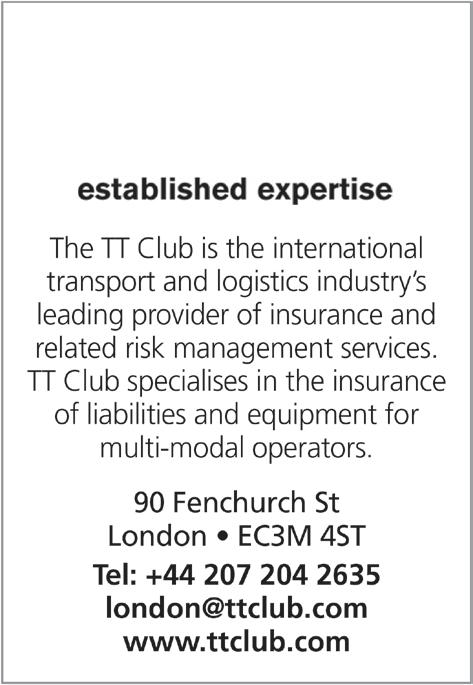
Schwartauer Str. 99 D-23611 Sereetz • Germany Tel:+49 451 398 850 Fax: +49 451 392 374 soj@orts-gmbh.de www.orts-grabs.de
SANY Europe GmbH offers a broad spectrum of high-performance mobile port machines such as Reach Stacker, Empty Container Handler, Heavy Duty Forklift Trucks and Material Handler
To advertise in the Port Strategy Directory
Contact Arrate Landera +44 1329 825335 www.portstrategy.com
IDENTEC SOLUTIONS is an industry-leading, trusted partner in managing and monitoring reefer containers and optimizing entire terminal operations through solutions like Reefer Runner and Terminal Tracker. Contact: Stephan Piworus, Global VP Sales Marine & Ports, spiworus@identecsolutions.com; Mobile: +49 151 74122606 www.identecsolutions.com

NSURANCE
Sany Allee
Bedburg, Germany Tel:
Sany Allee 1 D-50181 Bedburg Tel:
2272
info@sanyeurope.com
Email: info@sanyeurope.com www.sanyeurope.com

VISYOy
Visy systems reduce expenses, optimize safety & security, and increase throughput capacity via process automation. Our singleplatform gate operating system and OCR solutions manage all cargo, assets & personnel movements via quay, rail or road to keep operations moving.
VISY takes pride in solving operational problems, specialising in gate automation and access control solutions in ports and terminals. Their solutions streamline processes resulting in saving money and increasing productivity. Tel: +358 3 211 0403 Email: sales@visy fi Web: www.visy.fi/


P OWER TRANSMISSION
Conductix-Wampfler
The world specialist in Power and Data Transfer Systems, Mobile Electrification, and Crane Electrification Solutions. We Keep Your Vital Business Moving!
Rheinstrasse 27 + 33 Weil am Rhein 79576 Germany Tel: +49 (0) 7621 662 0 Fax: +49 (0) 7621 662 144 info.de@conductix.com www.conductix.com
IDELIFTER/SIDELOADER
www.hammarlift.com info@hammarlift.com
to

PRODUCTS & SERVICES DIRECTORY 52 | NOVEMBER 2022 For the latest news and analysis go
www.portstrategy.com
H
I
P ORT AUTOMATION S
G RABS
Fogmaker Directory indd 1 01/02/2021 13:12 F IRE SUPPRESSION SYSTEMS TT Club Directory March 2021 indd 1 01/03/2021 14:40 I
Camco ID June 2021 indd 1 19/05/2021 14:16
+49 2272 90531 100 Email:
www.sanyeurope.com Sany ID indd 1 25/01/2022 11:42
1 50181
+49
90531 100
To advertise in the Port Strategy Directory Contact Arrate Landera +44 1329 825335 www.portstrategy.com
The world leading manufacturer of Sideloaders, self-loading semi-trailers for versatile & efficient container handling.
For more information visit: seawork.com contact: +44 1329 825335 or email: info@seawork.com 13 15 TO JUNE 2023 Southampton United Kingdom For more information visit: seawork.com contact: +44 1329 825335 or email: info@seawork.com 13 15 TO JUNE 2023 Southampton United Kingdom
TVH is a global player in the field of spare parts and accessories for heavy forklifts, reach stackers, container handlers, spreaders and terminal tractors. With over 96,000 references in stock and more than 644,000 known references, TVH offers quality replacement parts for many brands and makes, including the hard-to-find ones. Tel: +44 2476 585 000 sales.team.uk@tvh.com www.tvh.com
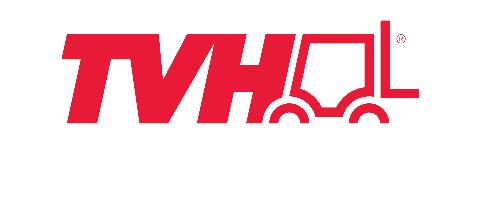
T ERMINAL OPERATIONS SYSTEMS
The Brain of Logistics
With more than 30 years experience in IT Solutions and Business Operation Consultancy DSP offers a large portfolio of professional services and products to support terminal operations processes and system.
DSP Data and System Planning SA Via Cantonale 38 6928 Manno, Switzerland Tel: +41 91 230 27 20 Fax: +41 91 230 27 31 info@dspservices.ch www.dspservices.ch
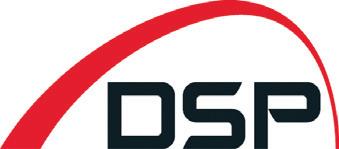
T
ERMINAL OPERATIONS SYSTEMS
Solvo Europe B.V.
Solvo’s software solutions such as TOS or WMS help container and general cargo terminals take full care of their cargo handling processes and make sure the clients expectations are exceeded.
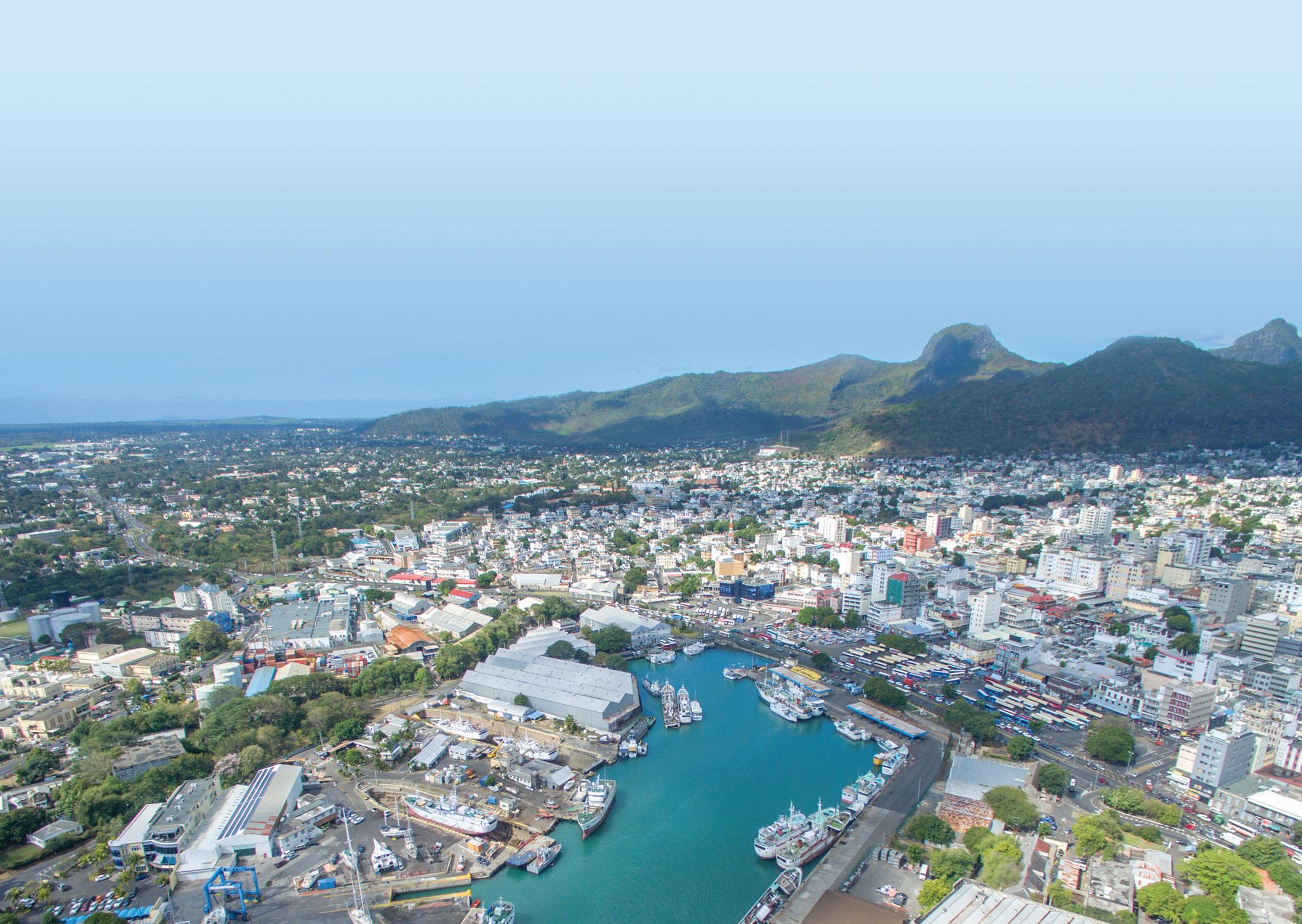
Prinses Margrietplantsoen 33, 2595AM, The Hague, The Netherlands Tel: +31 (0) 702-051-709 Email: sales@solvosys.com www.sovosys.com
T ERMINAL OPERATIONS SYSTEMS
TGI Maritime Software is a Terminal Operating System editor and integrator specialized in the support of Small to Medium Terminals. Its expertise is built on 34 years of experience within the maritime sector. TGI provides comprehensive services to its customers all along their projects. OSCAR TOS and CARROL TOS have already been successfully handled by 40 container and RoRo terminals worldwide.
Tel : +33 (0)3 28 65 81 91 contact@tgims.com www.tgims.com
ELME Spreader AB
ELME Spreader, world’s leading independent spreader manufacturer supports companies worldwide with container handling solutions that makes work easier and more profitable. Over 21,000 spreaders have been attached to lift trucks, reach stackers, straddle carriers and cranes.

Stalgatan 6 , PO Box 174 SE 343 22, Almhult, Sweden Tel: +46 47655800 Fax: +46 476 55899 sales@elme.com www.elme.com
Navis understands that as ships get larger and operational processes become more complex - efficiency, collaboration and productivity are essential. As a trusted technology partner, Navis offers the tools and personnel necessary to meet the requirements of a new, and ever-evolving, global supply chain.

World Headquarters 55 Harrison Street Suite 600 Oakland CA 94607 United States Tel: +1 510 267 5000 Fax:+1 510 267 5100 Web: www.navis.com
Tideworks Technology provides comprehensive terminal operating system solutions for marine and intermodal terminal operations worldwide. Tideworks works at every step of terminal operations to maximize productivity and customer service. info@tideworks.com +1 206 382 4470 www.tideworks.com

T RACTORS
MAFI Transport-Systeme GmbH

Specialised in the development and production of heavy-duty equipment for transporting containers, semi-trailers, cargo/roll trailers and special container chassis in ports and industry.
Hochhäuser Str 18 97941 Tauberbischofsheim, Germany Tel: +49 9341 8990 sales@mafi.de www.mafi.de
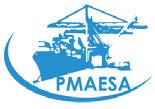
PRODUCTS & SERVICES DIRECTORY
S PARE PARTS
S PREADERS
Mauritius Maritime Week 2022 Continues to be the Biggest Annual Container Ports, Shipping and Transport Logistics Exhibition and Conference in the Indian OceanRegion Mauritius Maritime Week 2022 Continues to be the Biggest Annual Container Ports, Shipping and Transport Logistics Exhibition and Conference in the Indian OceanRegion Follow us on: enquiries@transportevents.com www.transportevents.com+852 2157 3907 +852 3895 0948 Hosted By The Ravenala Attitude, Mauritius Tuesday 13 December to Thursday 15 December 2022 NETWORKING RECEPTION NETWORKING DINNER LOCAL DELEGATES DISCOUNT 300 CONFERENCE DELEGATES INTERNATIONAL EXHIBITION INTERNATIONAL CONFERENCE TECHNICAL SITE VISITAssociate Member PORT EQUIPMENT MANUFACTURERS ASSOCIATION Strategic PartnerStrategic Partner Supporting Partner Official Carier
POSTSCRIPT
LINES AND TERMINALS: ANOTHER TWIST?
Container shipping lines have done very well from Covid. Freight rates reached exorbitantly high levels between mid-2021 and the first half of 2022. The resulting extremes of profitability have exceeded anything recorded since the advent of containerisation in the late 1970s and early 1980s. This has allowed the major container lines to adopt different investment strategies, with a favourite option being massive ordering of new tonnage – as seen many times before – based on the idea that current conditions will continue.
But, as is always highlighted in consumer investments, ‘past performance is no guide to future results’. The orderbook currently stands at around 30 per cent of existing capacity and, although this is less than the previous peak of around 60 per cent in the late 2000s, its pretty obvious that demand will not absorb this capacity – especially as we head into an economic downturn. The focusing of this investment in the largest vessel size ranges (with their restricted employment potential) exacerbates this emerging problem. Indeed, freight and charter rates are already on the way down and this process can only have further to run.
Other strategies have included upping investment in associated companies – forwarders, inland distribution and, even, air cargo. This has sounded alarm bells in some quarters with this leading directly to increased examination from the Federal Government in the US and renewed focusing on the controversial Consortia Block Exemption Regulation (CBER) in the EU that enables current container shipping alliances to operate and share vessels. The latter is due to expire in April 2024.
Until Covid-19 it was grudgingly accepted by cargo owners and 3PLs that these exemptions were the price to pay for regular and reasonably priced container transport but it’s clearly the case that neither have been delivered and the lines’ strategy of simply blaming the ports and trucking companies for recent problems won’t wash. Things are, therefore, likely to change.
THE OUTLOOK
The outlook is now one where the shipping market is

8 Potential changes in regulatory regimes and marketplace conditions may well lead to a swing in favour of common-user terminals as opposed to liner investment in the sector
heading into a serious downturn and their ‘block exemption’ status is being called into question. The degree to which lines have exploited the Covid confusion to their own benefit leaves them highly exposed to changes in the regulatory regime at a time when they will be least able to afford it. With shippers increasingly vocal about both the level of freight rates they have been obliged to pay and the level of services that the lines have offered this can only mean very severe pressure on the shipping lines. Combining this with the increased green pressures that the shipping lines are facing – and the required degree of investment to comply with environmental regulations developed during wildly different market conditions – can only result in forced restructuring.
What will this mean for the port sector? Many of the shipping lines’ investments in terminal capacity have been predicated on not simply directly controlled cargoes but also those handled by their alliance partners. This is especially true in terminals in the developing world where individual lines seldom provide the required critical mass to justify terminal investment. Any far-reaching reform of the liner alliance system will call all of this into question, with terminal investment strategies highly vulnerable to revision. These developments – resulting directly from increased regulatory involvement – open the way for the common-user operator.
The past few years have favoured the development of line-owed terminals, and this has been sharply accelerated and facilitated by the windfall profits lines have made in the past two years. If the system is unpicked at the alliance level (and it seems likely that these pressures will be difficult to ignore or sidestep), then the market may well swing in favour of the common user (or partnership) structure of terminal ownership and operation. With lines set to face severe financial headwinds there will be opportunities for more broadly-based investors. The circle seems set to turn once again….
For the latest news and analysis go to www.portstrategy.com
54 | NOVEMBER 2022
Is investment in the terminal sector about to turn again, with more emphasis on the common-user terminal as opposed to liner sector led investment? Potential regulatory changes and marketplace conditions signal changes ahead
‘‘
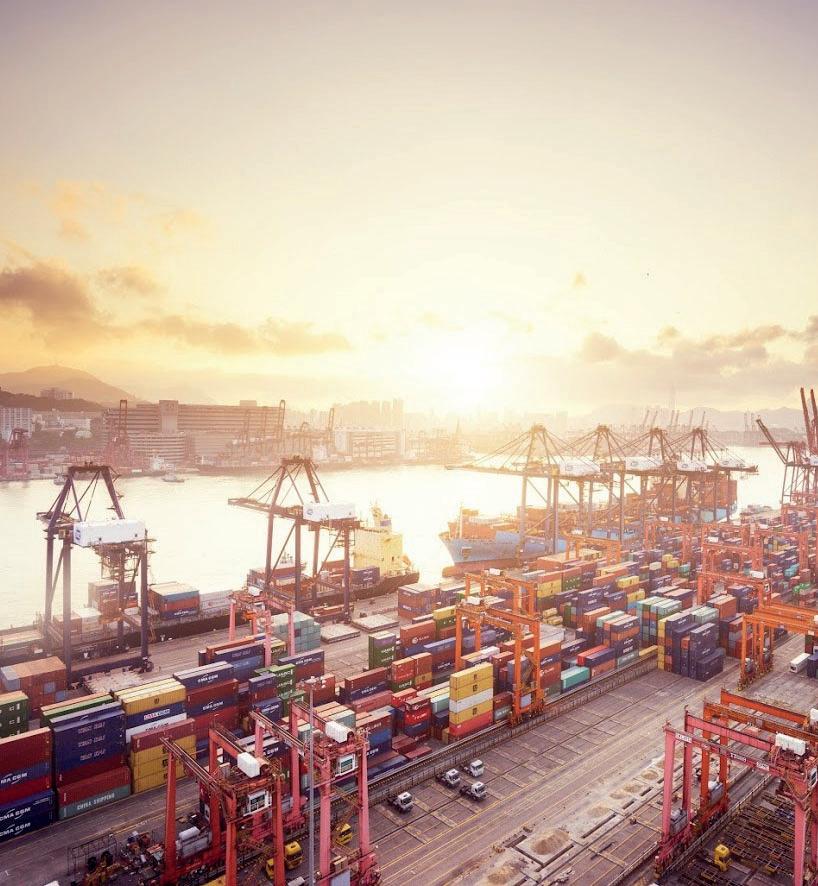
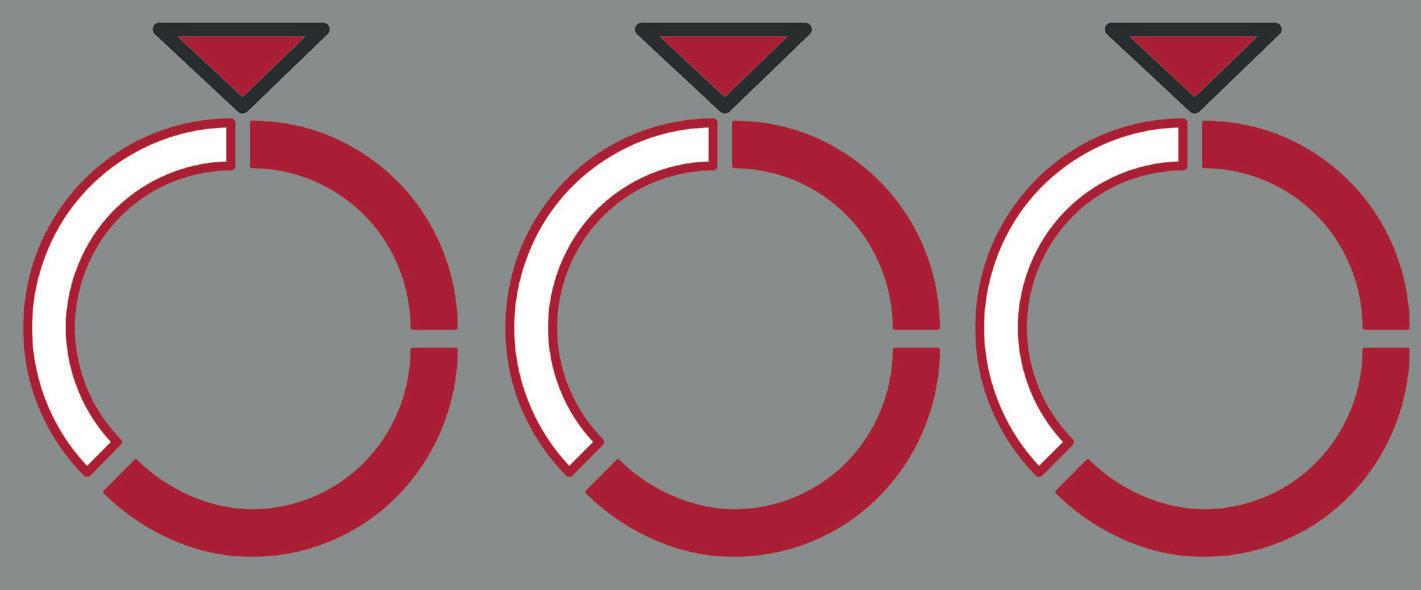
Arrate Landera, Brand Manager t: (+44) 1329 825 335 e: sales@portstrategy.com www.portstrategy.com Contact us today PORTSTRATEGY INSIGHT FOR PORT EXECUTIVES MAGAZINE RECIPIENTS DECISION MAKERS PAGEVIEWS PER MONTH 19,00072%42,700 Reach industry professionals with Port Strategy Promote your business to the right audience in the right place at the right time. Engage with our international audience of decision makers and buyers. The Port opportunities for campaign delivery. We provide bespoke marketing packages Port Strategy’s valued content is dedicated to the international ports and terminals business and is delivered through multiple channels.
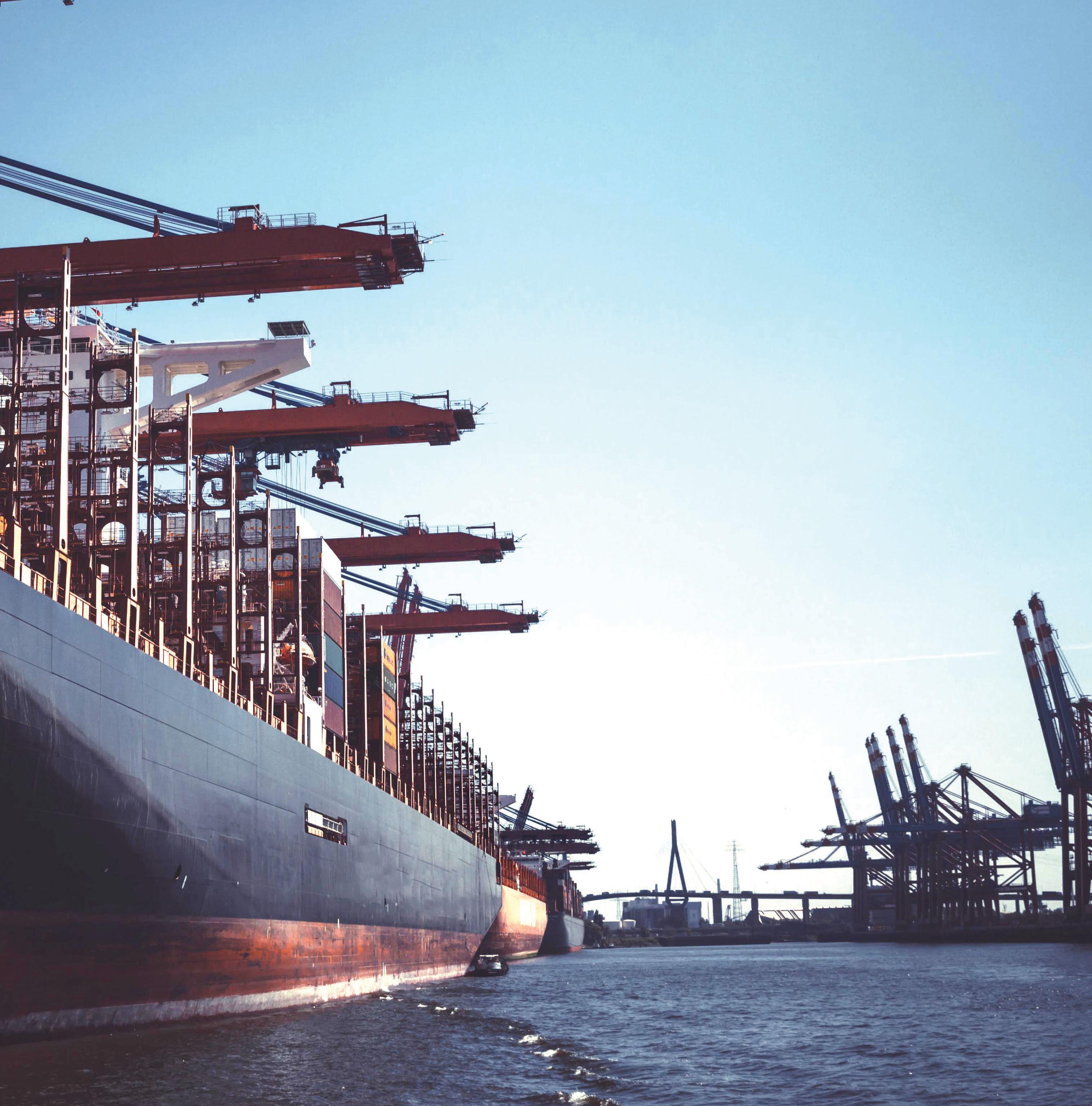
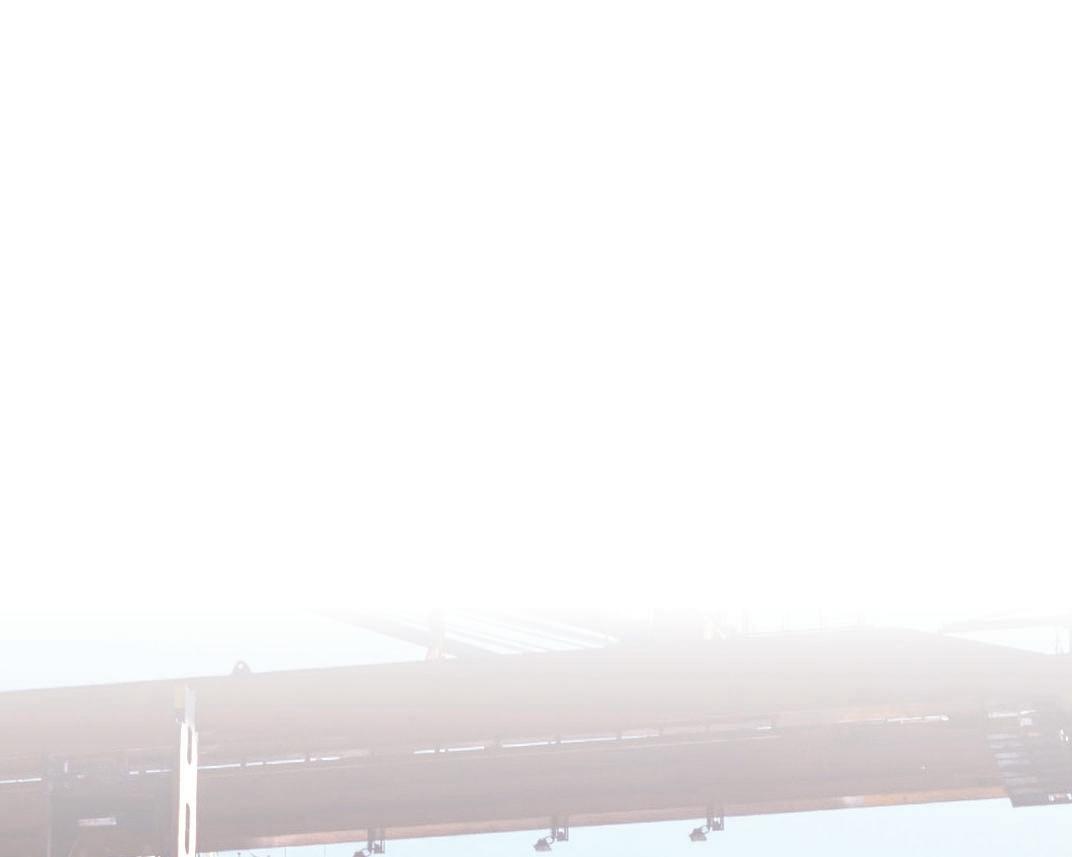


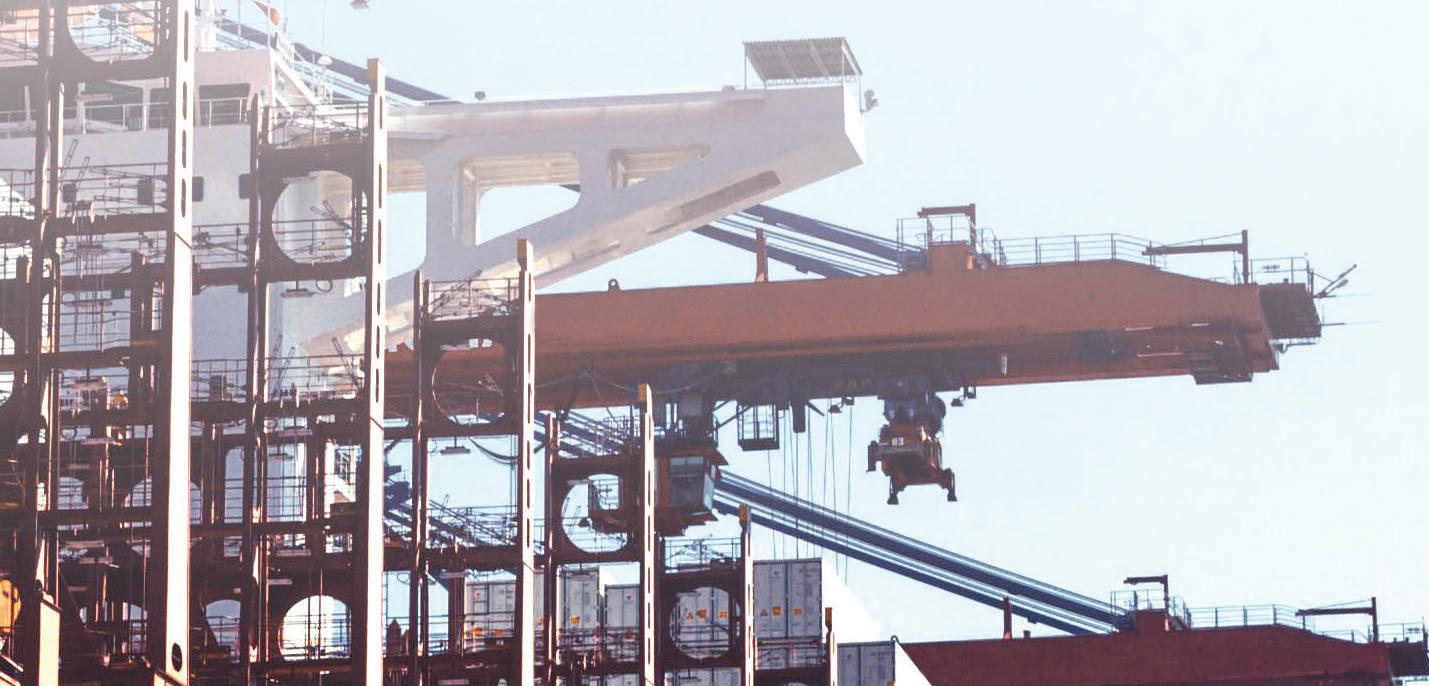
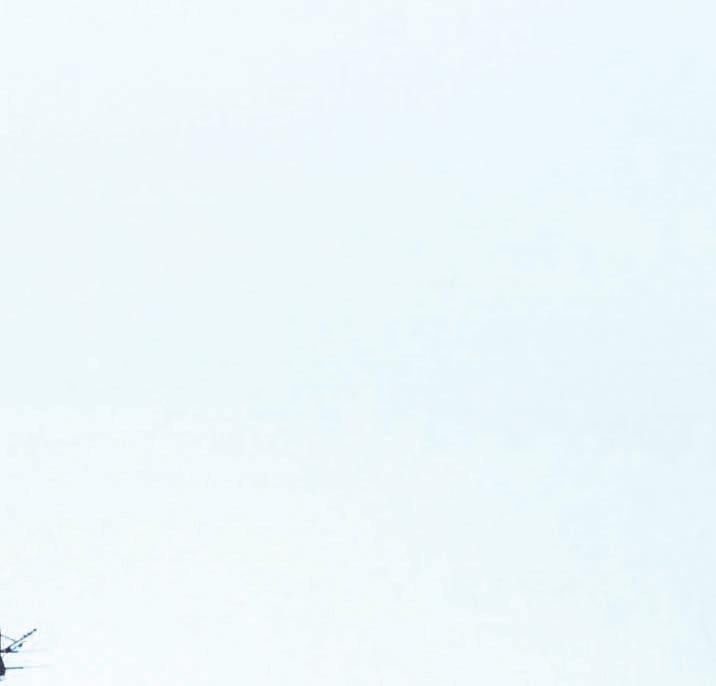


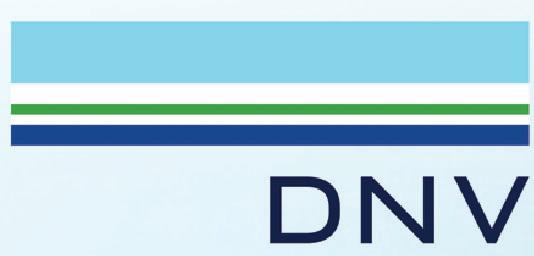

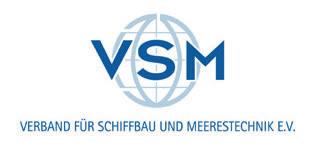
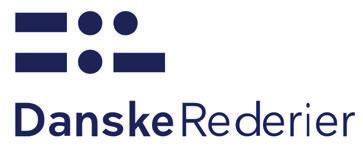
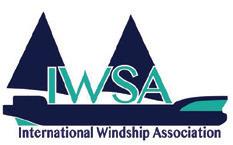

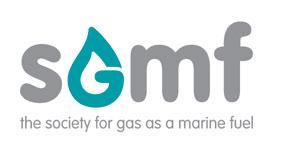

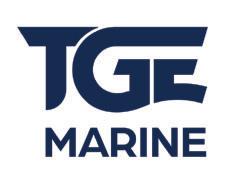
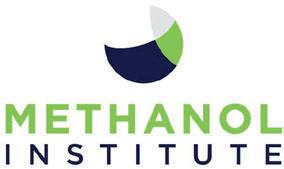
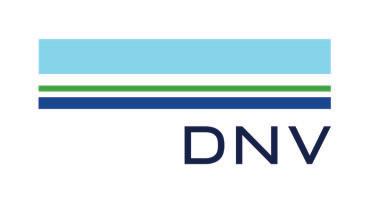
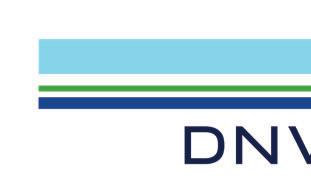


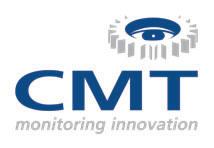
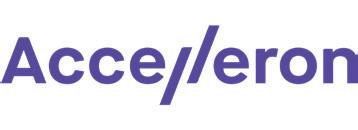
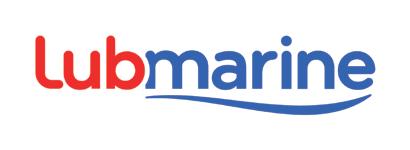
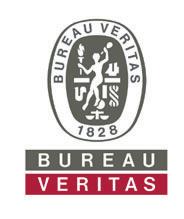
Propulsion stream | Alternative fuels stream | Technical visit Meet and network with 200 CEOs and technical directors from ship owning, operating and To book online visit: motorship.com/PFFBOOK Contact: +44 1329 825 335 Or email: conferences@propulsionconference.com MOTORSHIP MARINE TECHNOLOGY THE Organised by: #MotorshipPFF 22 24 Hamburg Germany NOV 2022 202243RD Headline Sponsor : Supported by: Sponsored by: Headline Sponsor Silver SilSSponsors Book your place now Join Propulsion & Future Fuels, the proven meeting place to exchange the latest innovation in transoceanic Chaired by Lars Robert Pedersen, Deputy Secretary General, BIMCO & Reinhard Lüken, Managing Director, VSM German Shipbuilding and Ocean Industries Association 2022 Conference Topics include: 6 FuelEU Maritime Regulation: ShorePower 6 6 Digitalisation 6 6 6 6 Ammonia 6 Methanol 6 Multifuel Engines 6 •Conference attendance with lunch and •Full documentation in electronic format •Drinks reception; Conference Dinner & Technical visit































































































































































































































































































































































































 Mobile harbour crane
Mobile harbour crane















 8 The report addresses the need for better data in order to improve port performance
8 The report addresses the need for better data in order to improve port performance













































































































































































































































































































































































































 B ULK
B ULK




























































